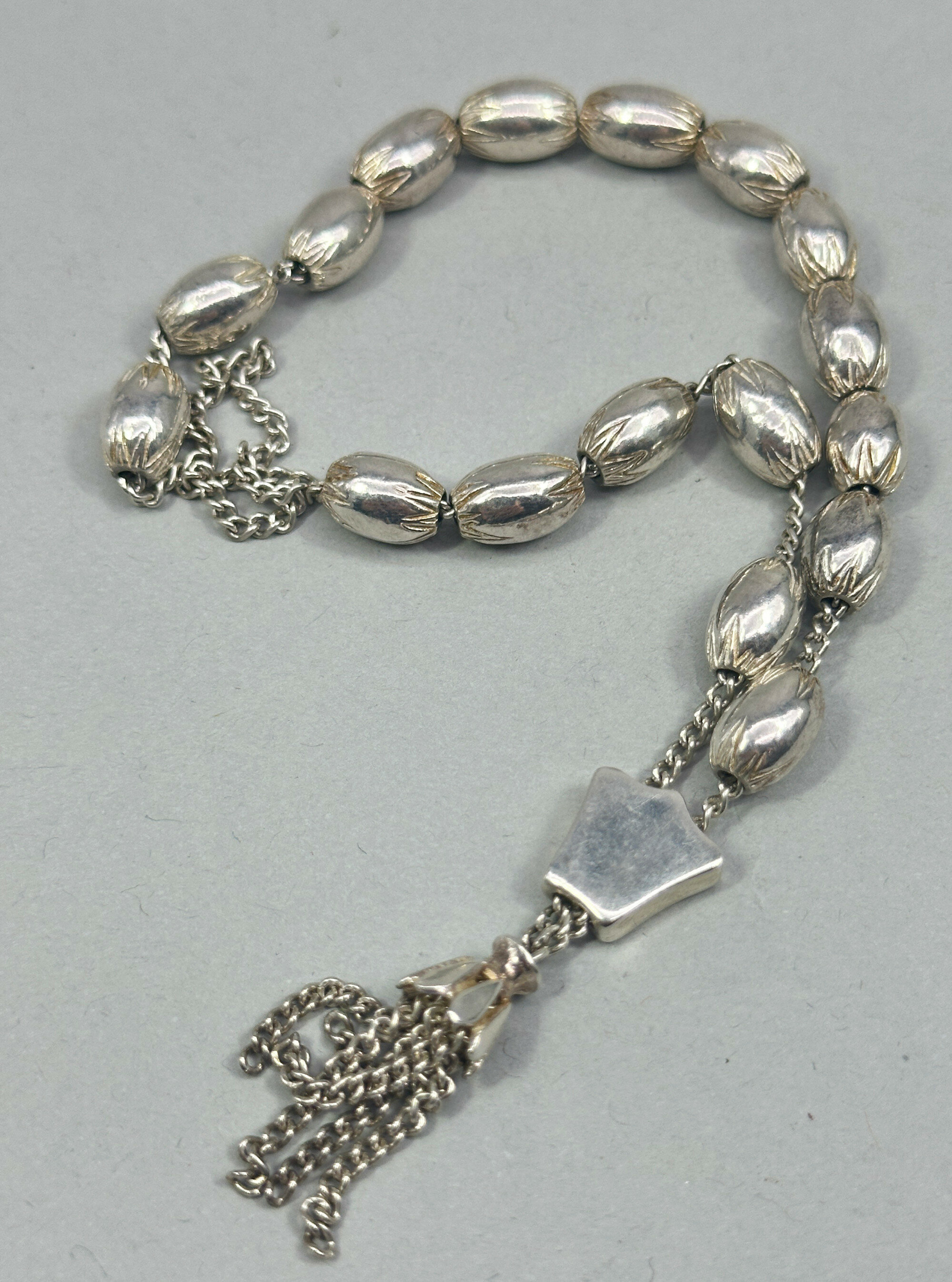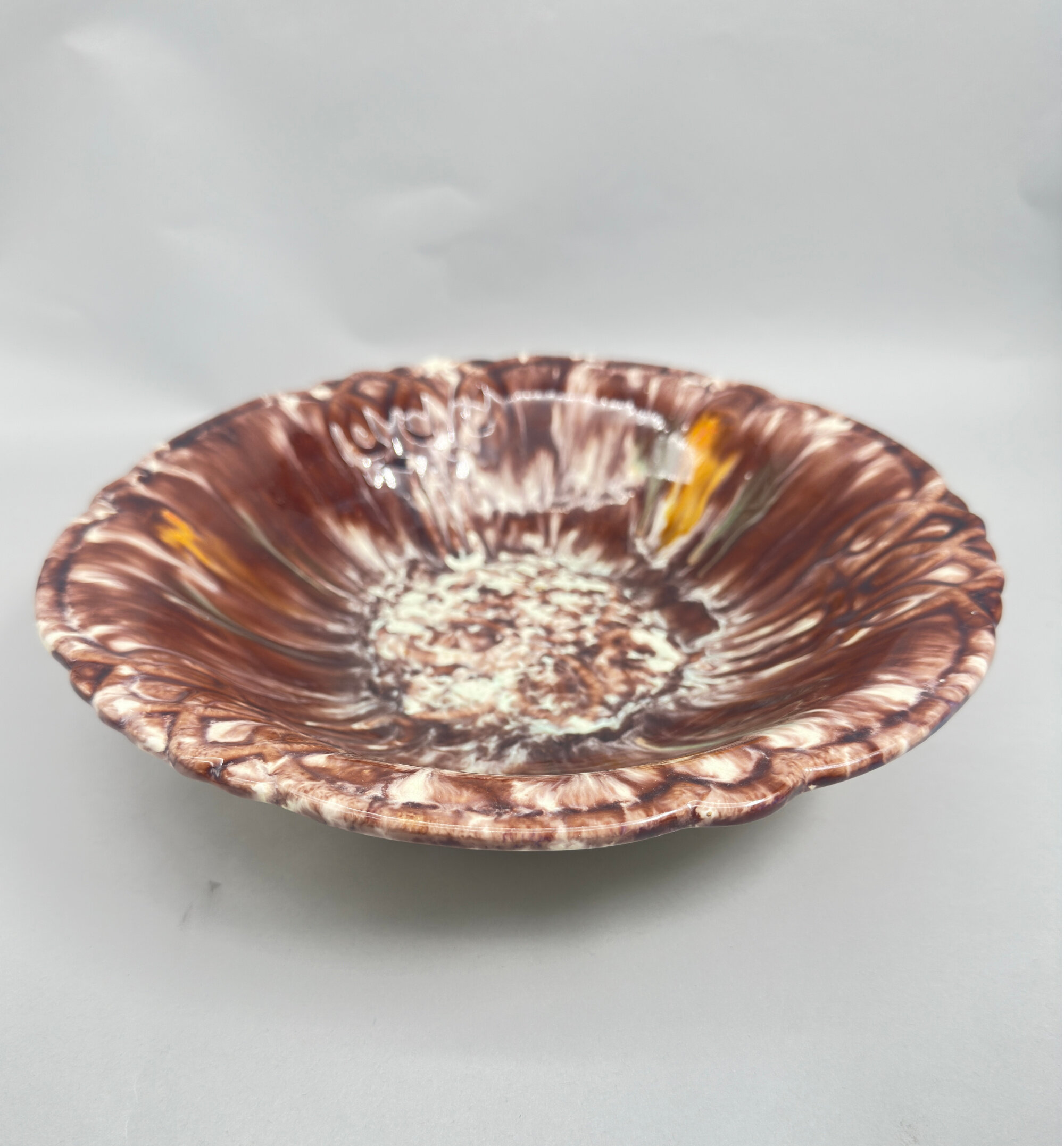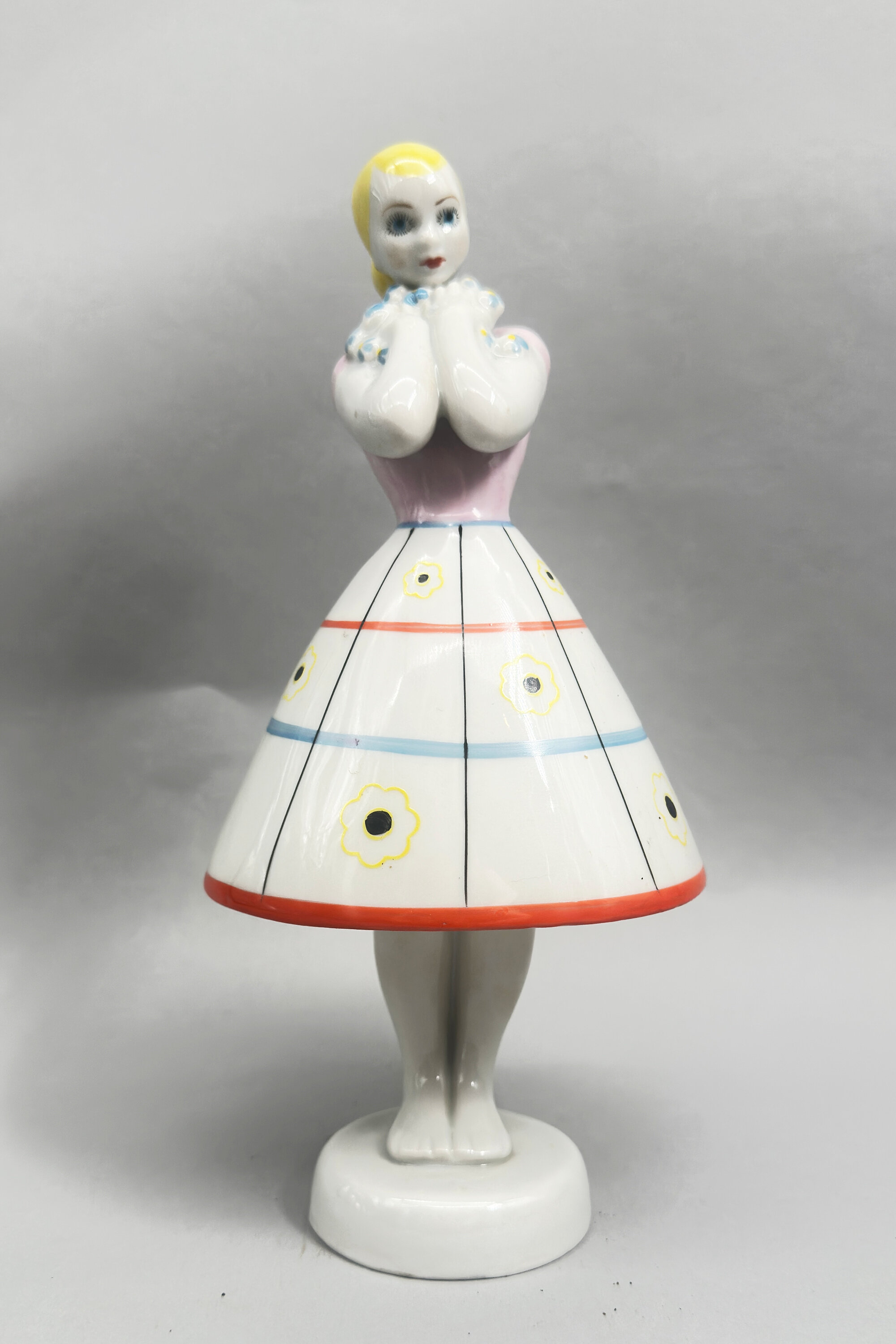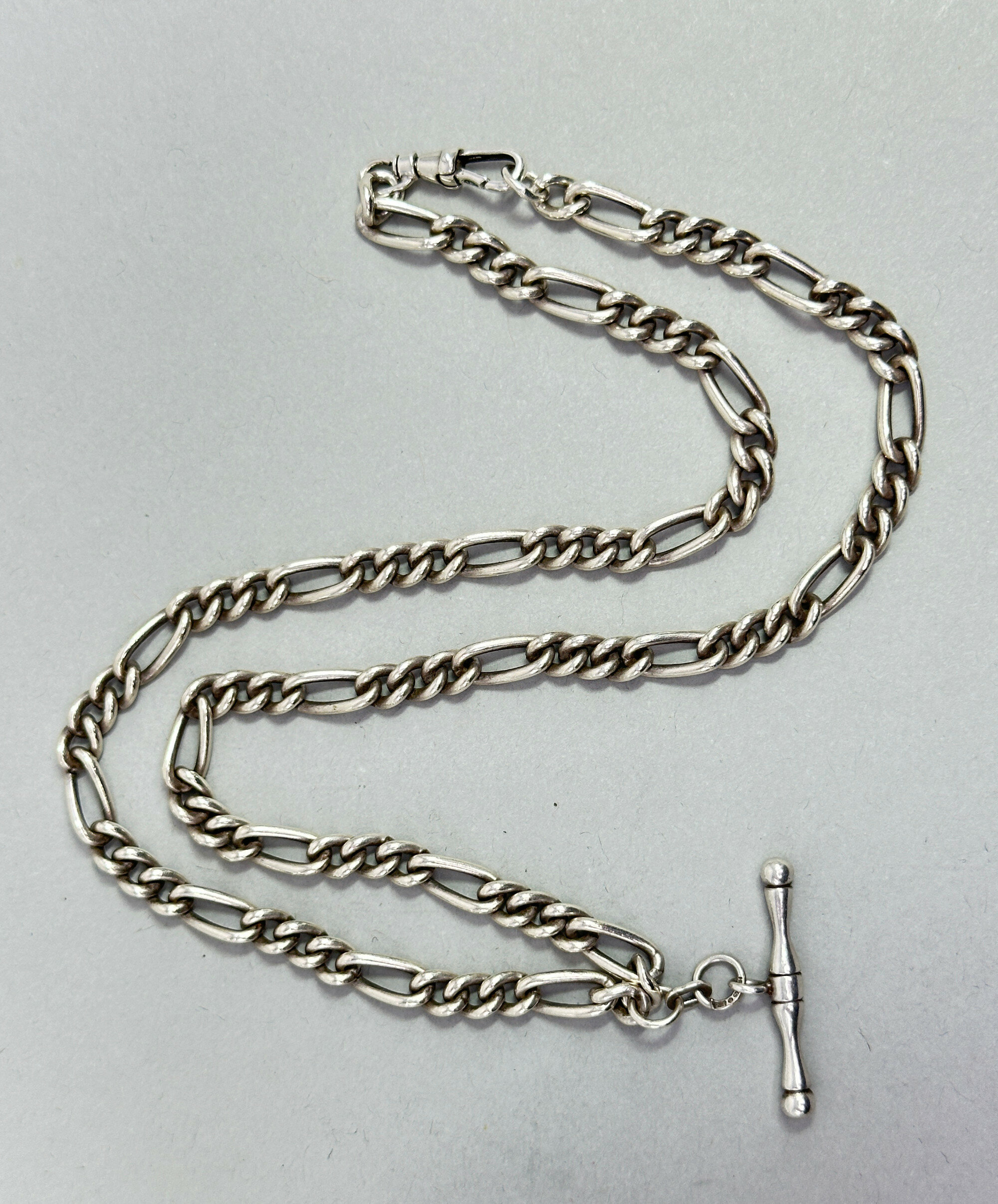
Prince Albert Necklace with T bar pendant c1900
Price: £95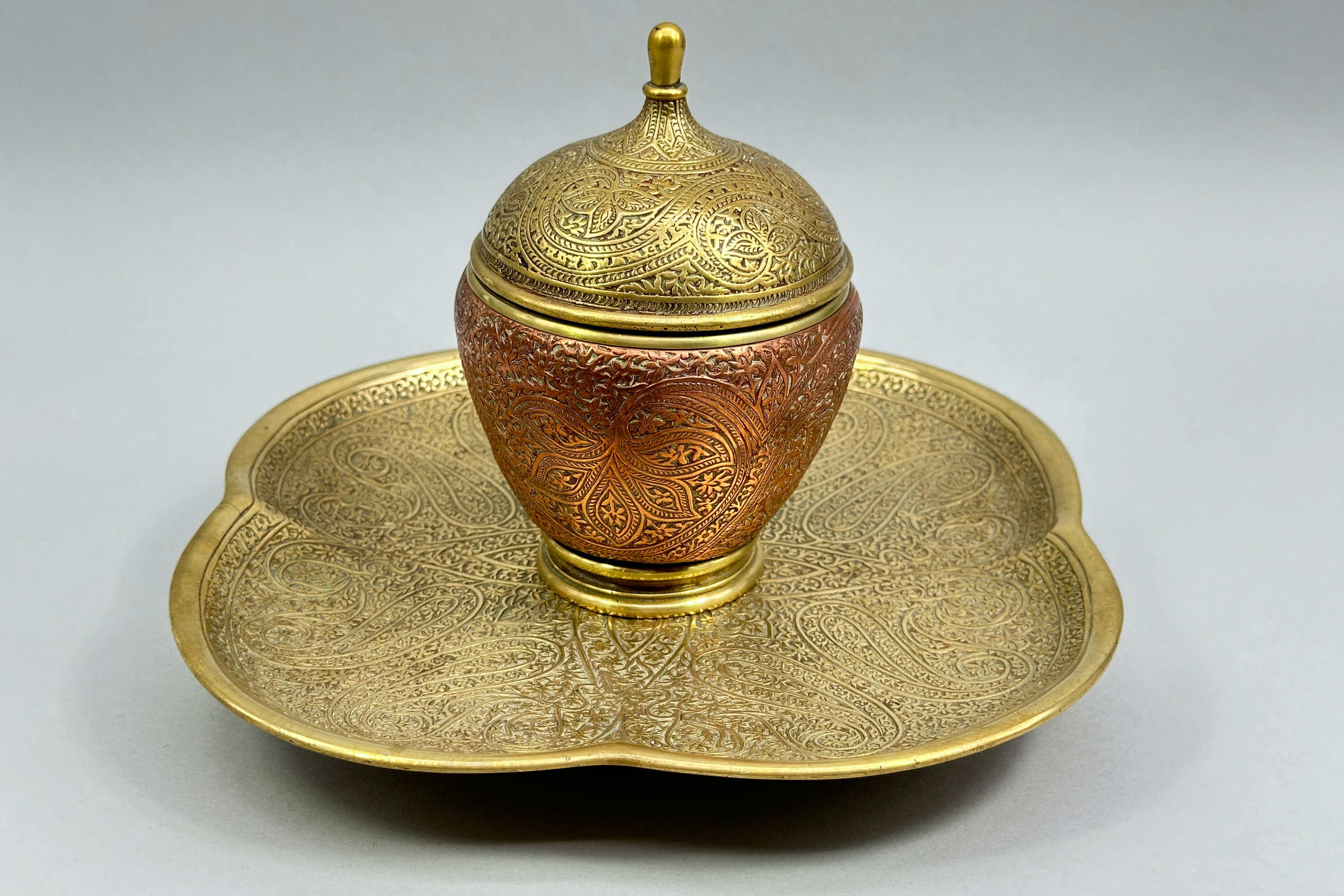
Indian Brass and Copper Inkwell, C20th
Price: £55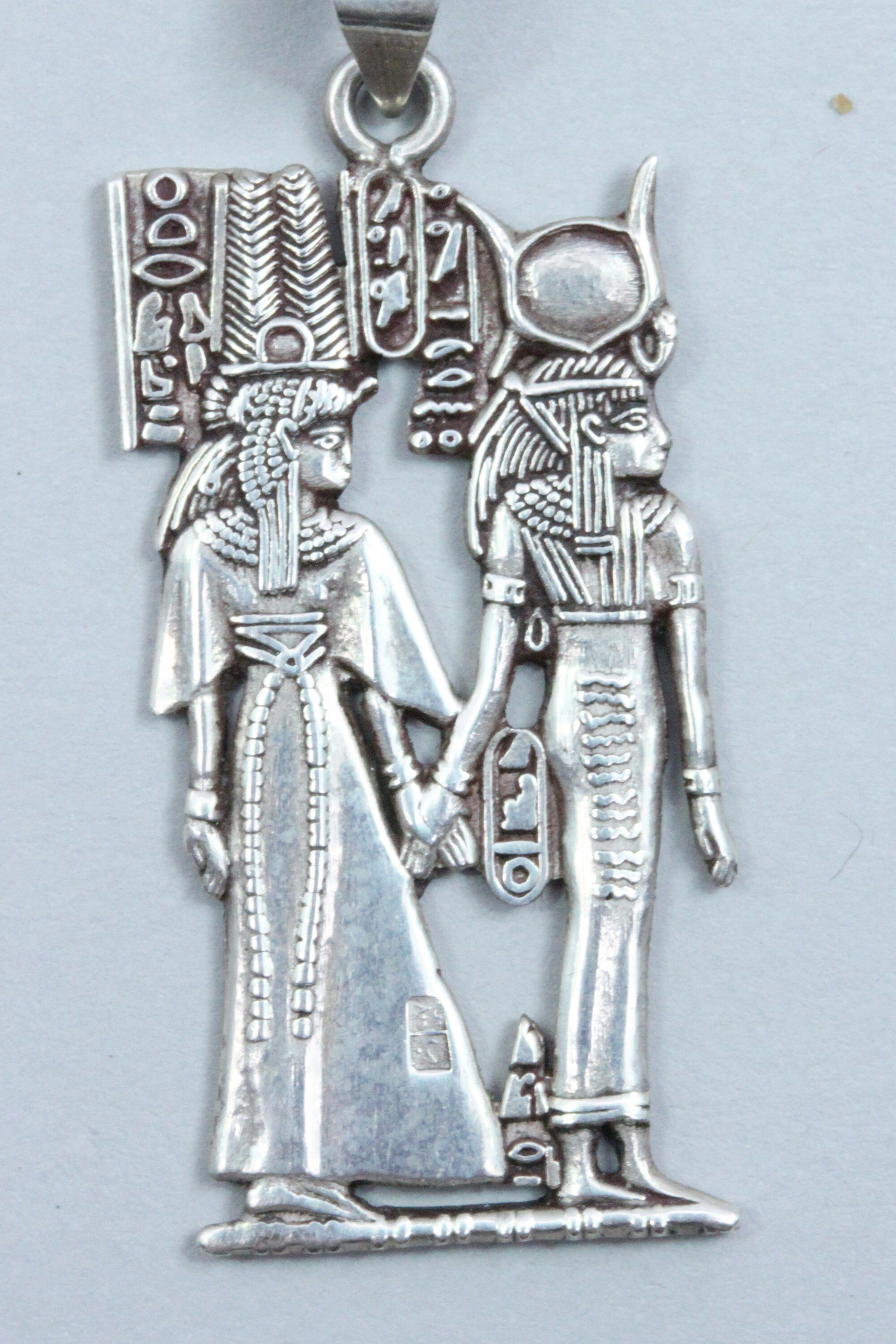
Silver Pendant, Tutankhamun and Ankhsenamun, Egyptian 1950s
Price: £35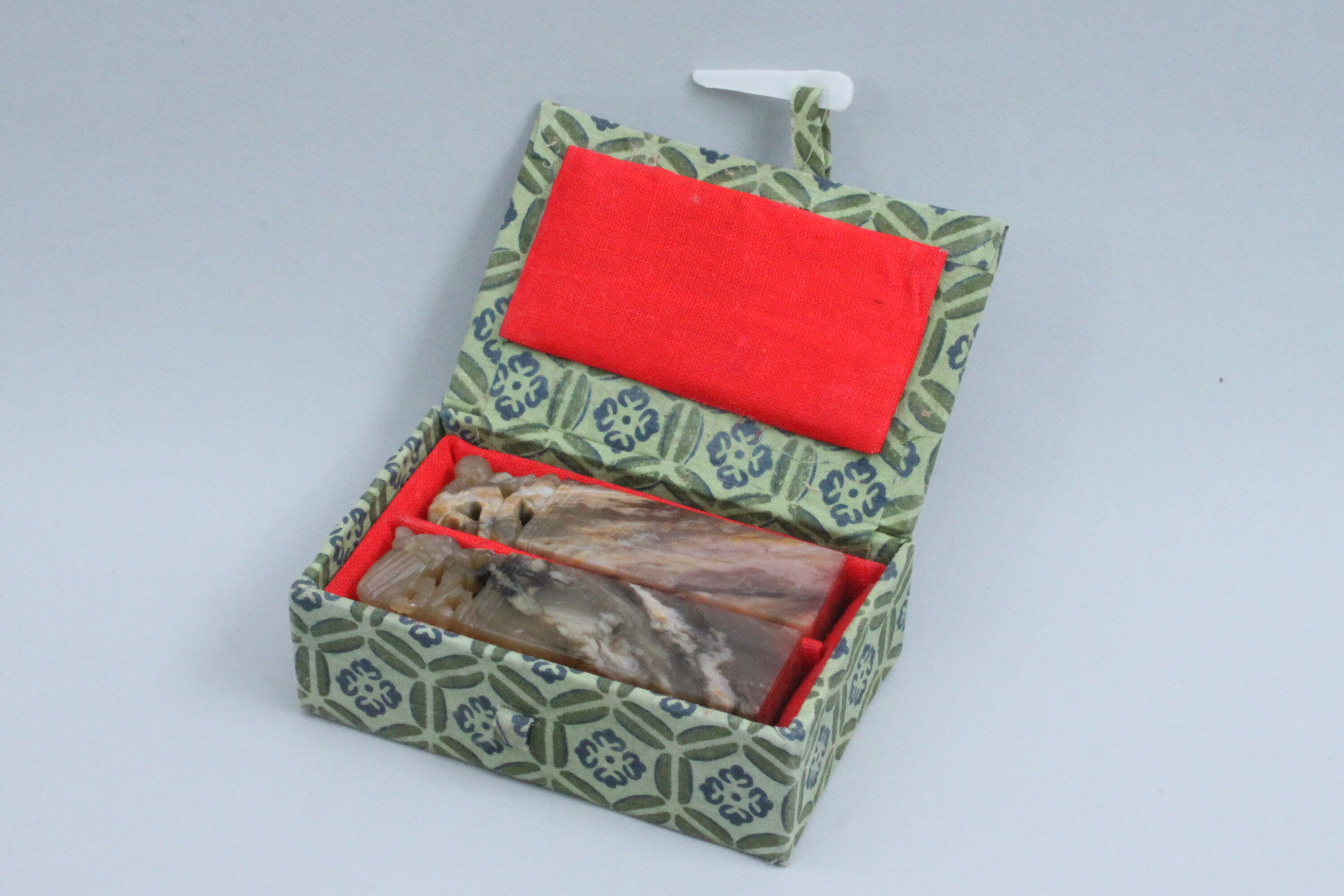
Pair of Chinese Soapstone Seals in a fitted box, C20th
Price: £45
Silver Cricket Box, Islamic probably Persian, early C20th
Price: £110
Chinese Framed Ceramic Plaque depicting Peony, C20th
Price: £150
Chinese Bone Netsuke carving of a man holding a musical instrument, early C20th
Price: £25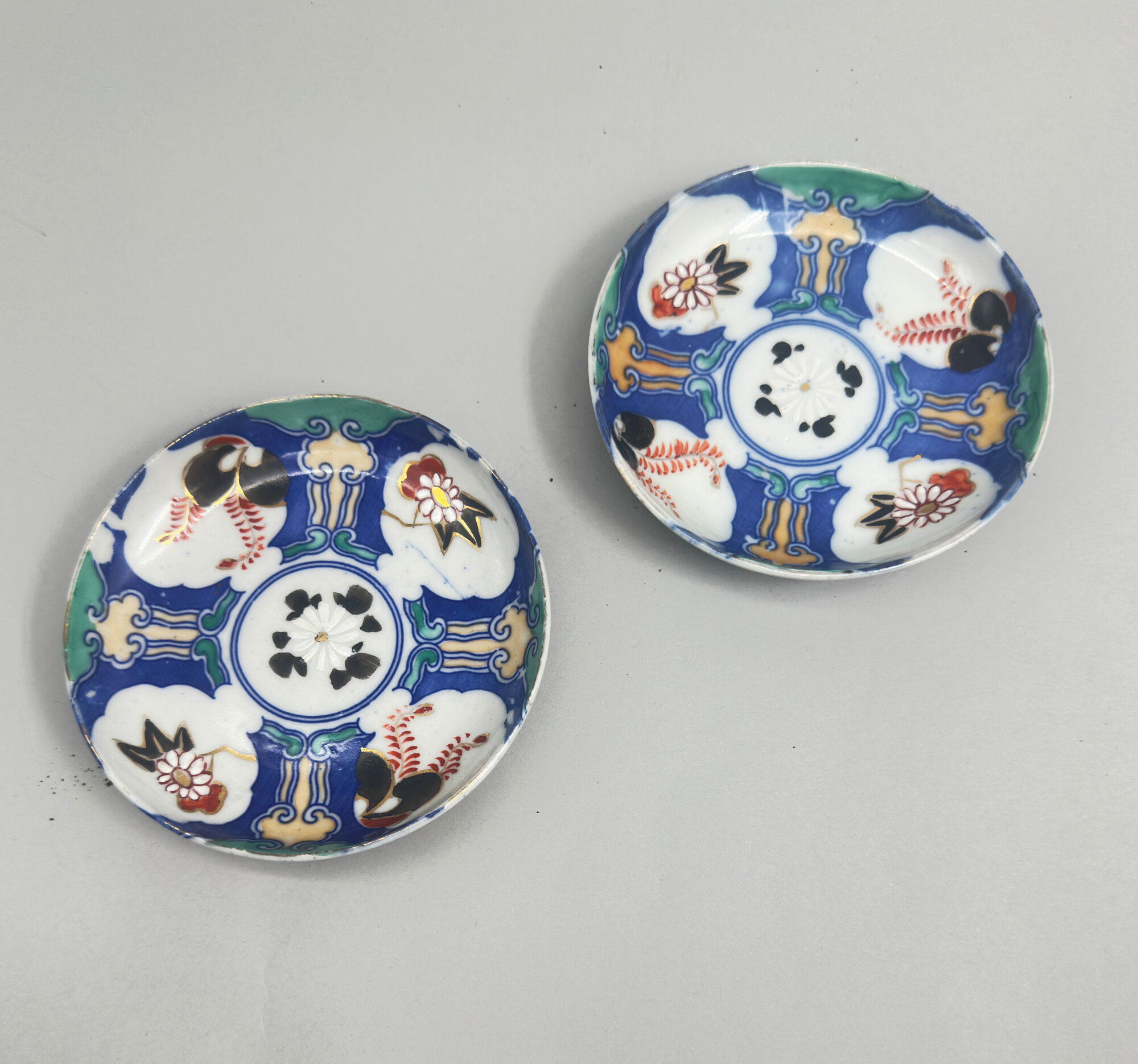
Pair of Japanese Arita small Dishes circa 1880
Price: £40The town of Arita in the former Hizen Province, northwestern Kyūshū island, was a major centre for the production of porcelains in Japan. Best known for blue and white pieces it also produced polychrome wares as well, including the familiar imari colourings. While similar to Imari, the wider palette of colours used here is usually termed ‘Arita’ and the decorative appeal of the style is clear. These bowls probably come from an original set of five and with slightly coarser decoration than usual were probably made for the domestic market. The paste of the foot implies a dating to the Meiji era (1868 - 1912) probably around 1880.
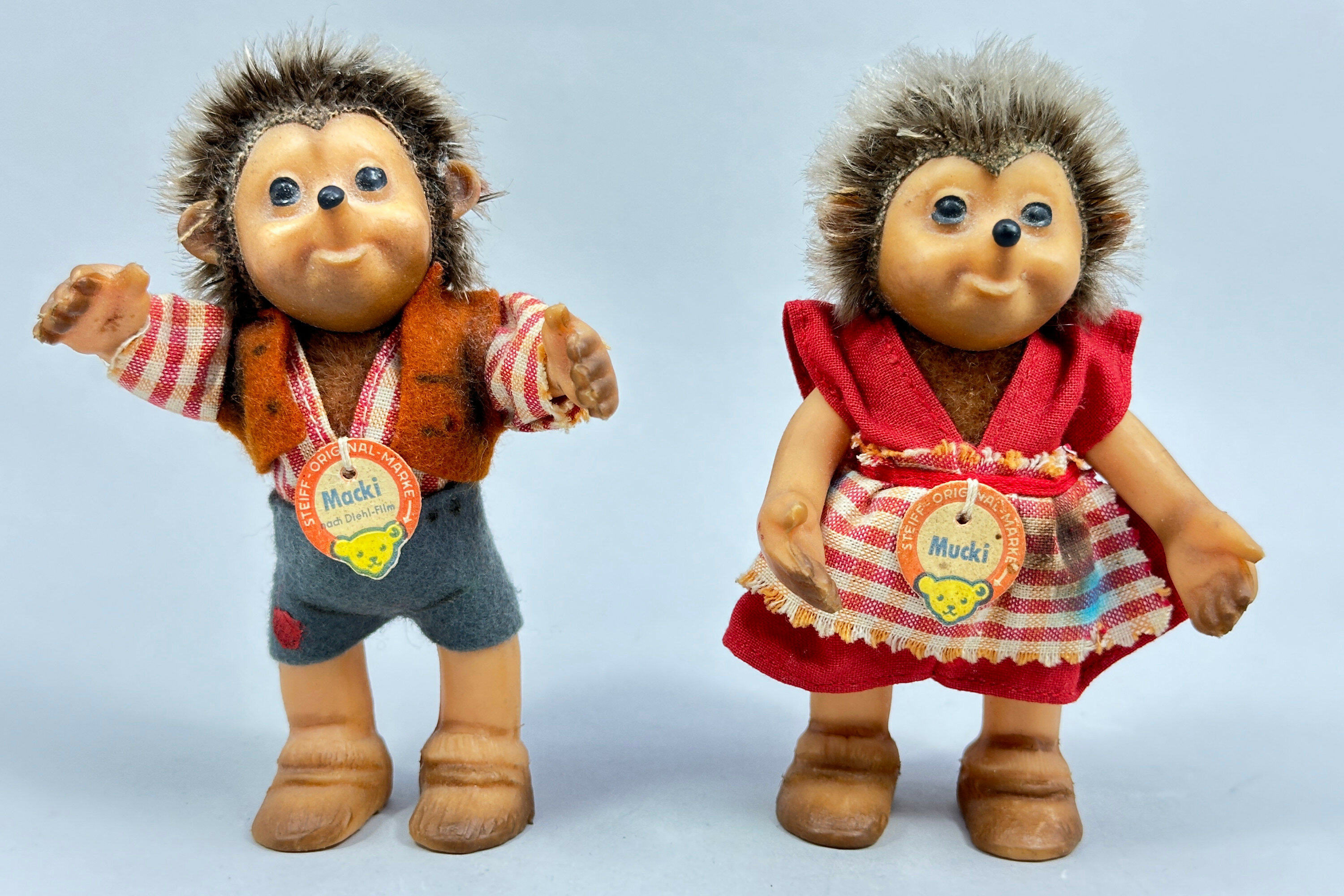
Steiff Hedgehogs : Macki and Mucki, 1950s/1960s
Price: £120…………………………………………………………………………………………........................................................................................…
The firm Steiff was begun by Margarete Steiff in 1880. A seamstress by training Margarete recognised a strong demand for some fabric elephants which she had made and intended for use as pincushions but soon became adopted as toys. Many other animals followed and a felt factory was founded in Giengen, Germany, in 1893 soon to be followed two years later by the first consignment of her wares to Harrods, London. In 1897, Margarete’s nephew Richard joined the firm and went on to design the first plush bear with movable arms and legs for which a substantial order was received of 3000 examples in 1903 from an American buyer who sensed a growing demand for these animals as a result of the US President Theodore ‘Teddy’ Roosevelt being shown in a photograph with a young cub in The Washington Post of the previous year. By 1907 a little under one million of these bears were being produced and turnover went on to increase substantially. Steiff bears can be purchased today and the earlier examples are actively sought after by collectors.
In the 1930s, Steiff began to collaborate with the Walt Disney company and characters from their films were reproduced starting, unsurprisingly, with Mickey Mouse and going on to include some of the most famous creations even up to the present day with ‘Nemo’ and ‘Woody’ from Toy Story being recent and popular additions.
The Hedgehog family, comprising Mecki and Micki with their children Macki and Mucki first appeared in 1951 and continued in production until the 1990s. These four characters are often found, sometimes with the characteristic round Steiff tag bearing their name and with the wording ‘Steiff–Original–Marke’ with an arrow pointing to a teddy bear’s head, but other hedgehog models which can be regarded as ‘cousins’ were made for a brief period in the 1960s. The nuclear family, though, comprised these four and they are sometimes illustrated together on postcards. Some of the round tags have additional wording ‘nach Diehl Film’ (‘from/after the film [maker] Diehl’) which refers to a German film company set up by three brothers Ferdinand, Hermann and Paul Diehl in 1937. They specialised in the ‘stop motion’ technique which involves the minute movement of model figures which, when photographed and with the images displayed in quick succession, allows the illusion of movement, now familiar today in the films featuring Wallace and Gromit.
Mecki and his family were popular characters in some of the films the Diehl brothers made and first made their appearance in 1949 designed as mascots for a German periodical called ‘Hor Zu’ which began publication in 1946 and covered radio and television news. Some of the tags attached to members of the family allude to this and Macki’s here reads at the back ‘Redaktionsigel von Hor Zu’ (‘the hedgehog editor of Hor Zu’). This explains the blue stain on Mucki’s skirt which is clearly meant to represent ink. Other members of the family also display marks on their clothes as a sign of being hard at work. Sensing the popularity of these characters, Stieff negotiated an exclusive right to produce dolls of them in 1951 and the hedgehogs became a staple of their output. The Diehls’ last film was made in 1970 and the hedgehogs featured in more than one over the years, becoming much loved characters in Germany during the 1950s and 1960s.
The techniques of production of the figures varied over time as did the attached labels. The earliest were made from 60% wool and 40% cotton with the faces formed from rubber like latex over a straw filling. Such example of these as survive are in rather poor condition. The very latest versions, made from 1968 to 1990 have a different form of chest name tag and a different ‘button’ label. (From the earliest times, Steiff toys had a yellow rectangular label listing the materials used and the country of origin and sometimes the price, attached by a small button marked ‘Steiff’. Unfortunately, these are missing here but the chest tags are intact and in good condition which does not always occur.) Dating of these two examples is therefore midway and probably to the late 1950s or early 1960s and they survive in near pristine condition making them an excellent addition to a collection of Steiff soft toys and a fine memento of almost iconic companions to so many children in post war Germany.
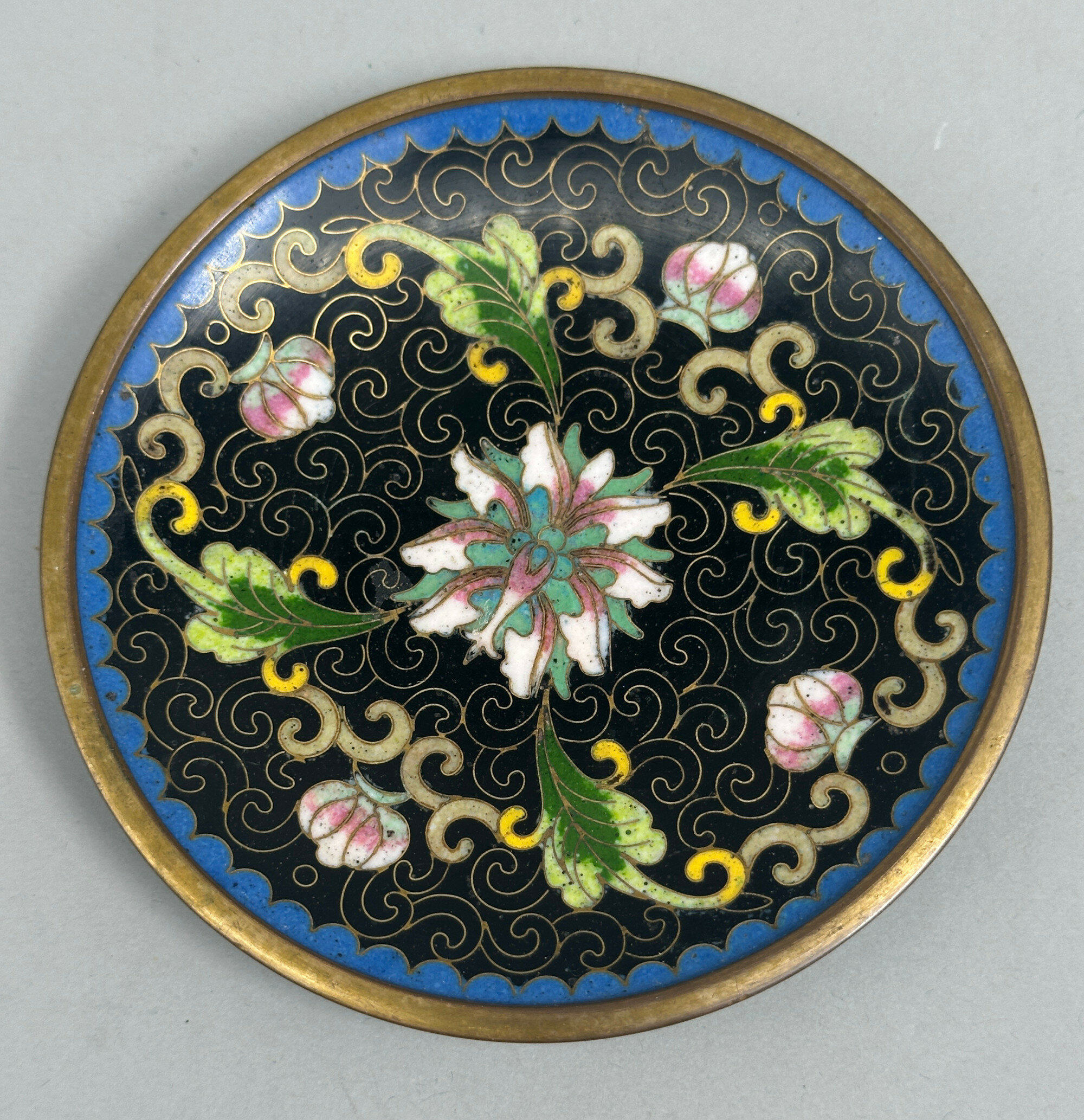
Small Chinese Cloisonné Dish decorated lotus, C20th
Price: £25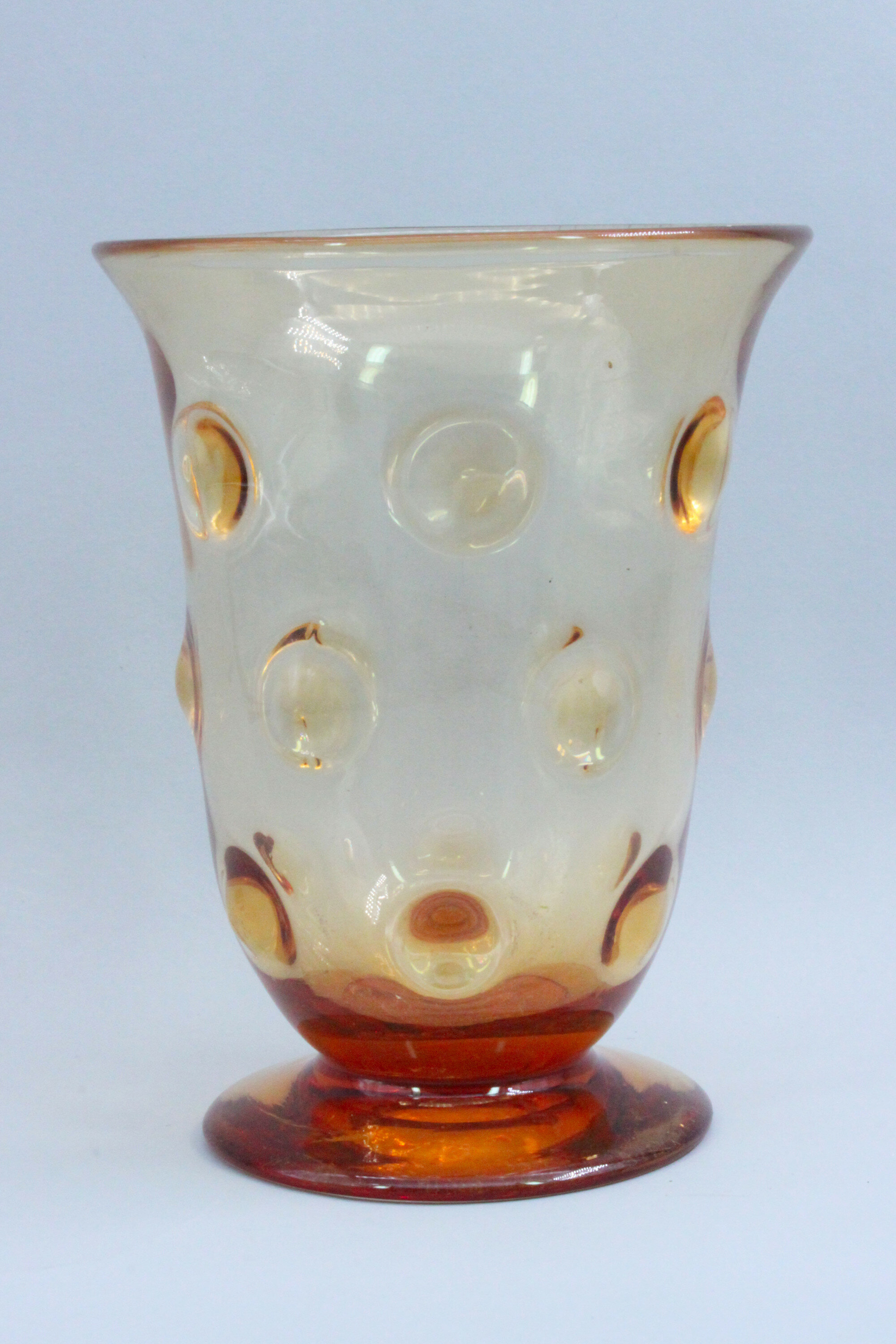
Golden Amber Webb Glass Vase, marked, 1950s
Price: £45Thomas Webb began his glass career in 1829, when he became a partner in the Wordsley Glassworks. Various career changes followed and in 1859 he was joined by his sons Thomas Wilkes Webb and Charles Webb and began trading as Thomas Webb & Sons based in Stourbridge. The firm was run by various family members until mergers started to occur in the early twentieth century and Sven Fogelberg, previously from Swedish glassworks Kosta, became manager in 1932. Production continued with more mergers in the 1960s and 1970s until the firm closed in 1990. This vase was made by Thomas Webb during the 1950s as part of their 'Gay Glass' range in a design called 'Old English Bull's Eye' and has the typical 'Webb England' mark to the base.
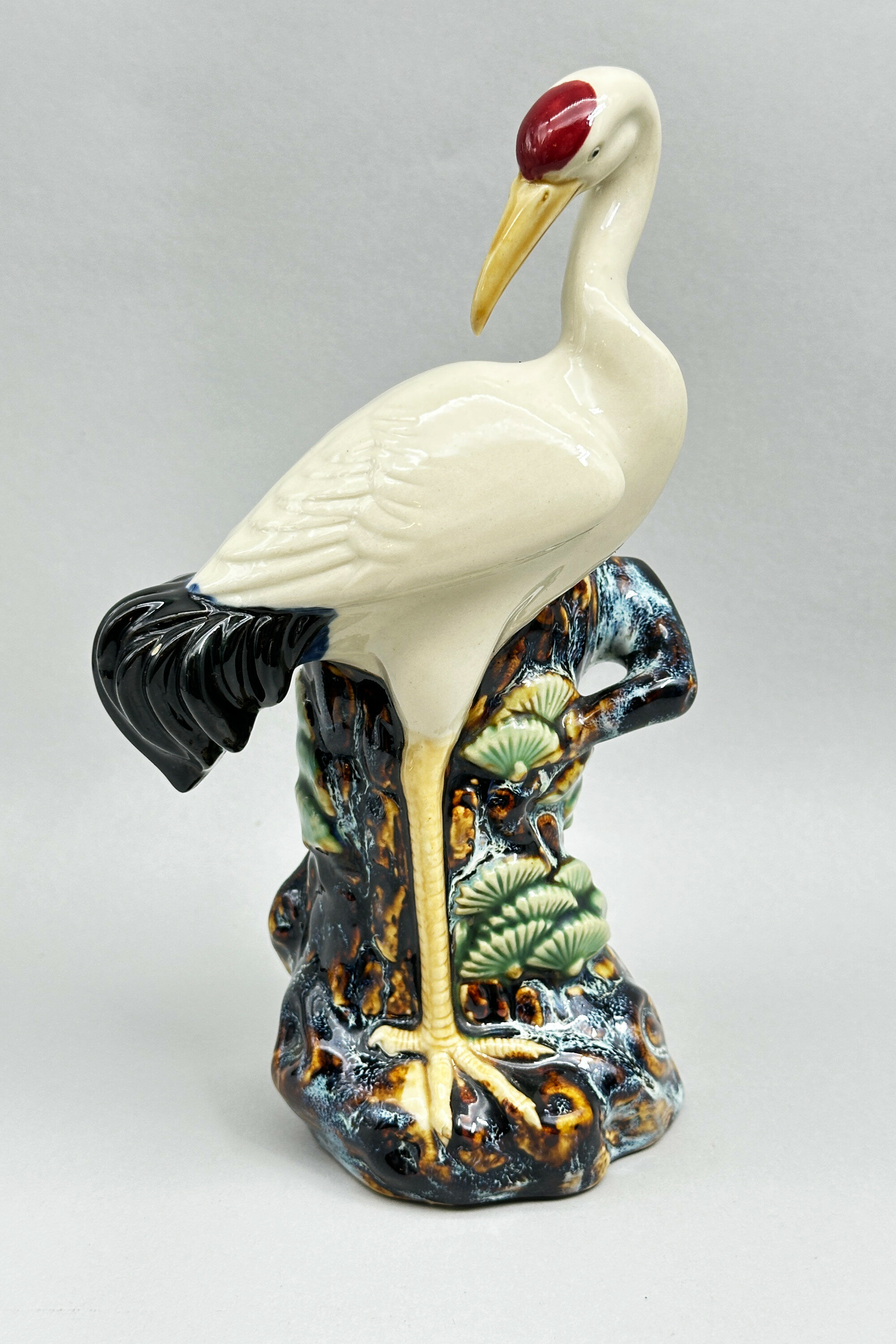
Chinese Majolica Style Brush Holder modelled as a Crane, mid C20th
Estimate: £30 – 40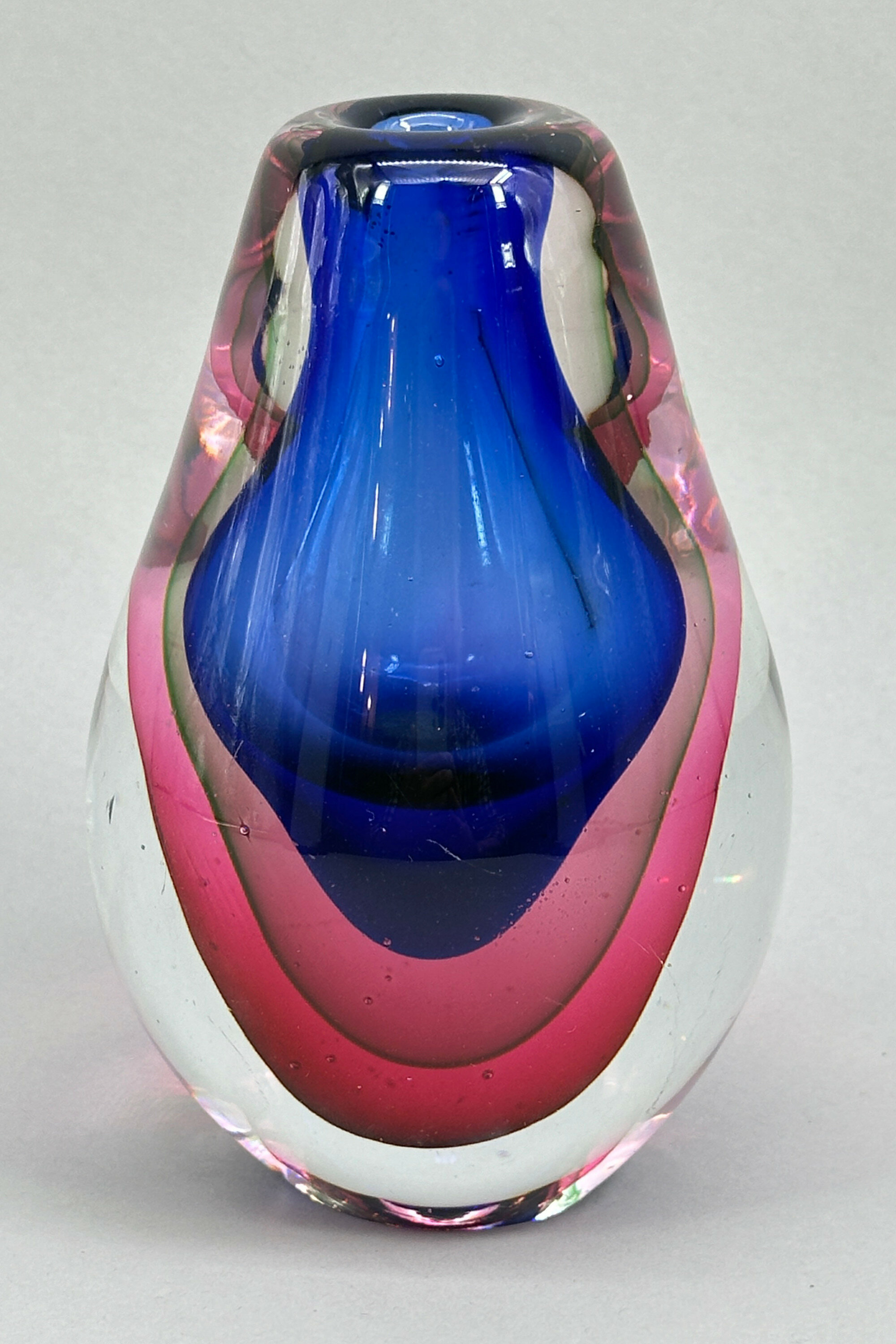
Murano glass four layer Sommerso tear drop shape Vase, 1960s
Estimate: £40 – 60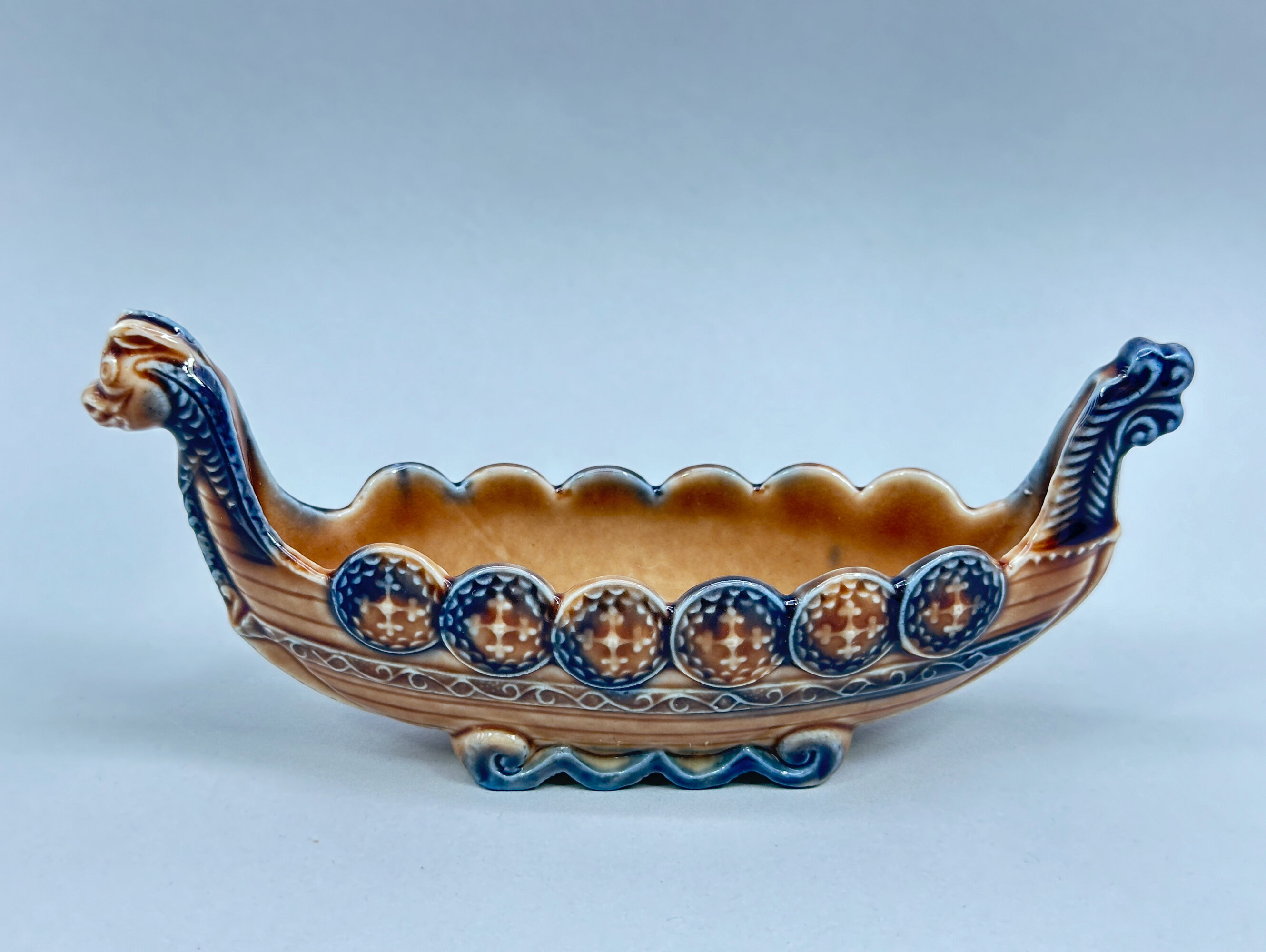
Ceramic Model of a Viking Longboat, Wade, 1950s/1960s
Price: £25Wade Ceramics Ltd was a manufacturer of porcelain and earthenware, headquartered in Stoke-on-Trent, England. Founded in 1867, it was run by various members of the Wade family until the death of George Anthony Wade in 1987 after which there was a succession of management buyouts. Despite substantial investment in 2009, the firm eventually went into administration in 2022. Wade produced a wide variety of ceramics, including the well known Wade Whimsies animal figurines.
Many of their pieces were designed to act as small containers for flowers and trinkets and this piece is a particularly amusing example of the type. Two colour ranges exist, one as here and one with much darker tones which is held to be later. Dating here, then, is most likely to the 1950s/1960s when the Wade production lines were in full swing and enjoying considerable popularity.
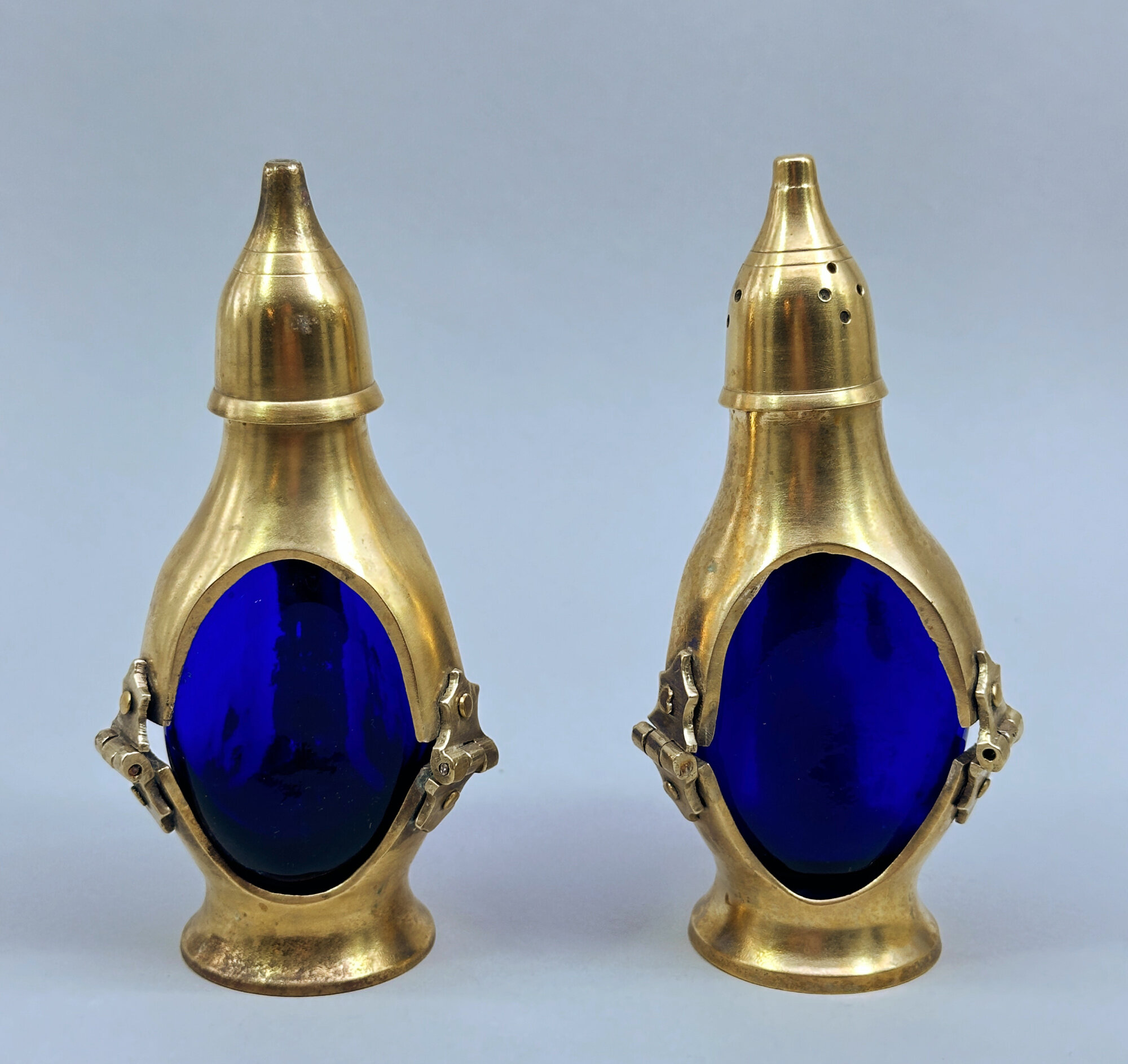
Arts and Crafts Brass and Cobalt Glass Salt and Pepper, early C20th
Price: £55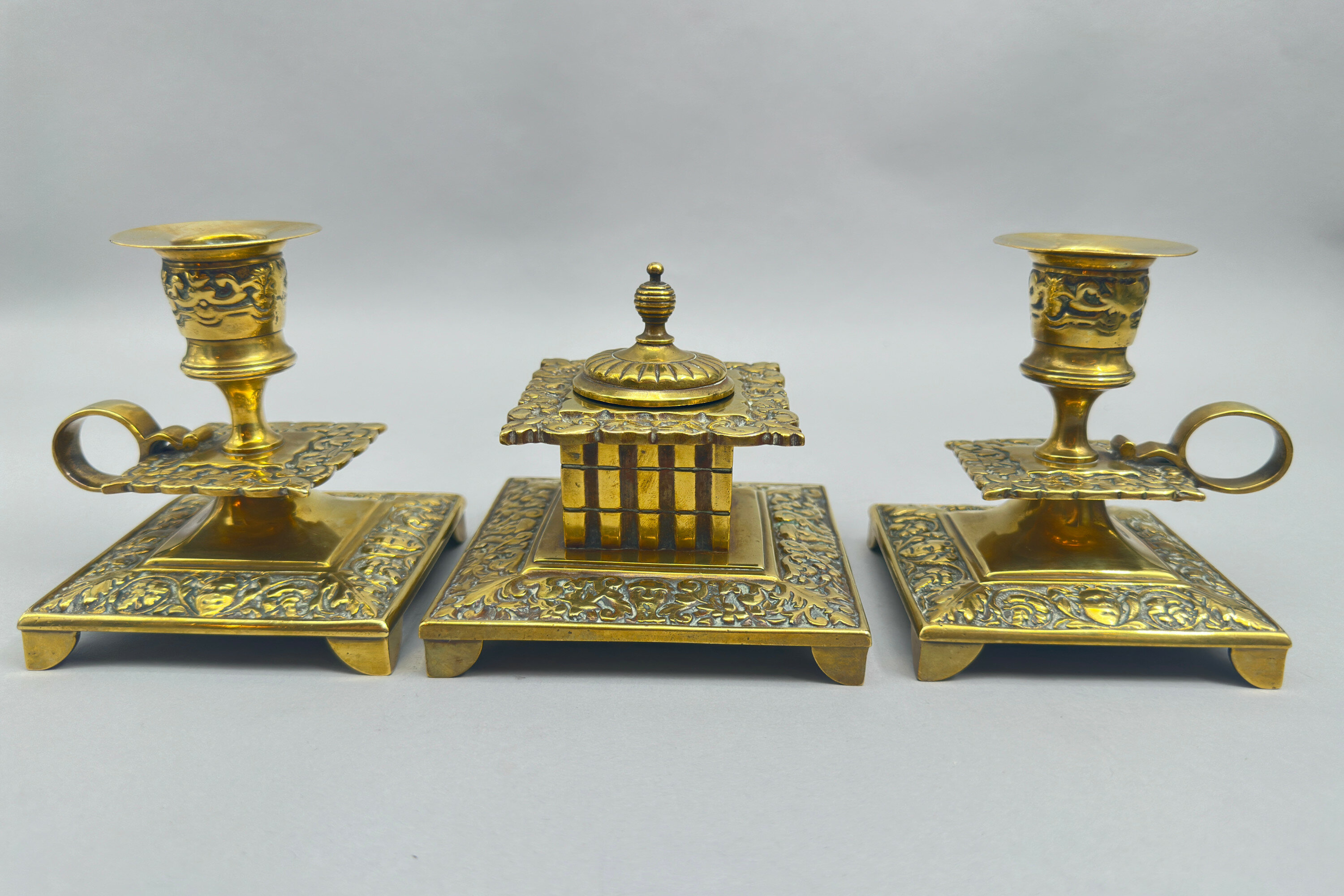
Renaissance Revival Brass Desk Set, English c 1900
Price: £55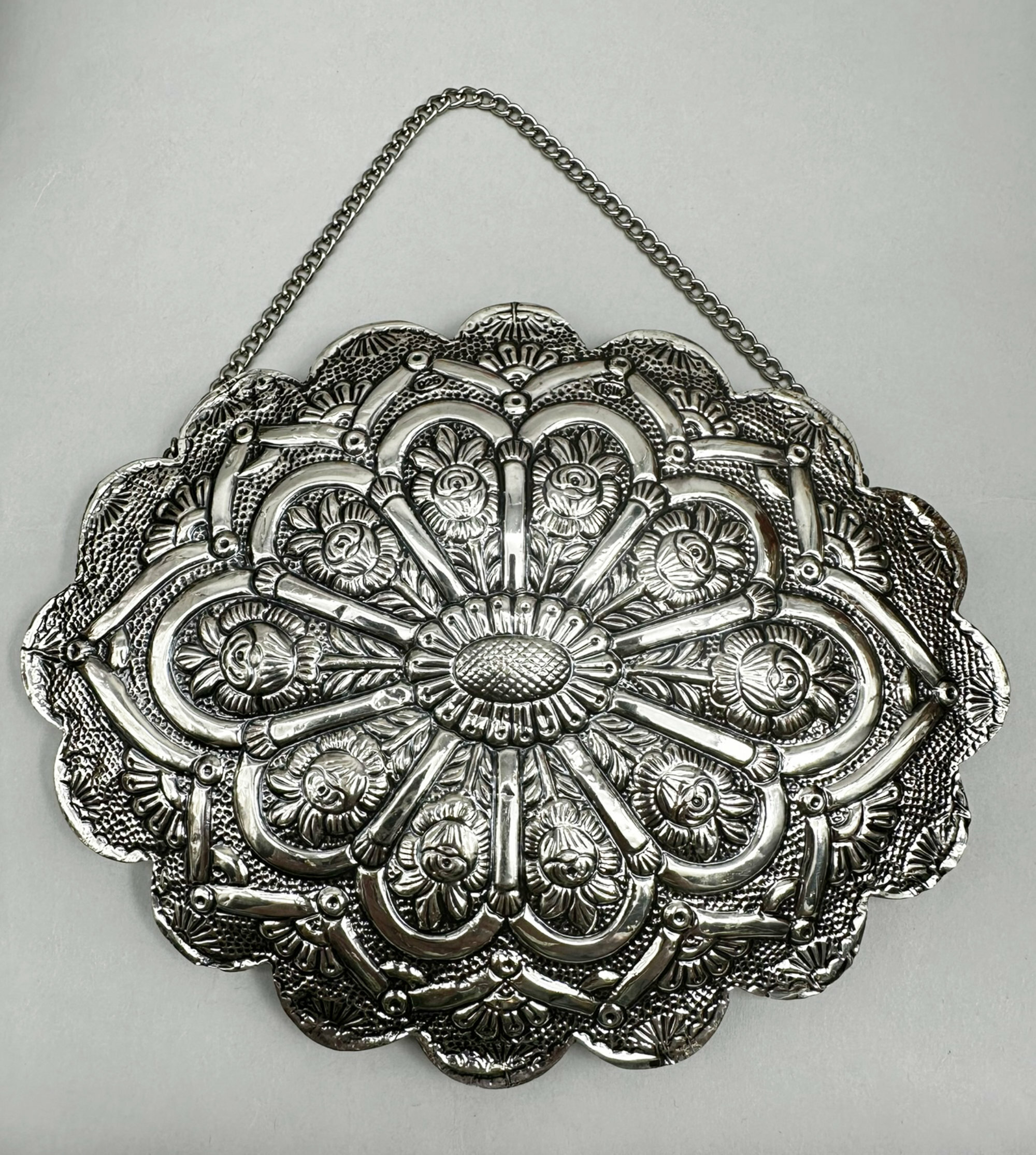
Outstanding Ottoman silver marriage mirror, Turkey early 20th century
Price: £125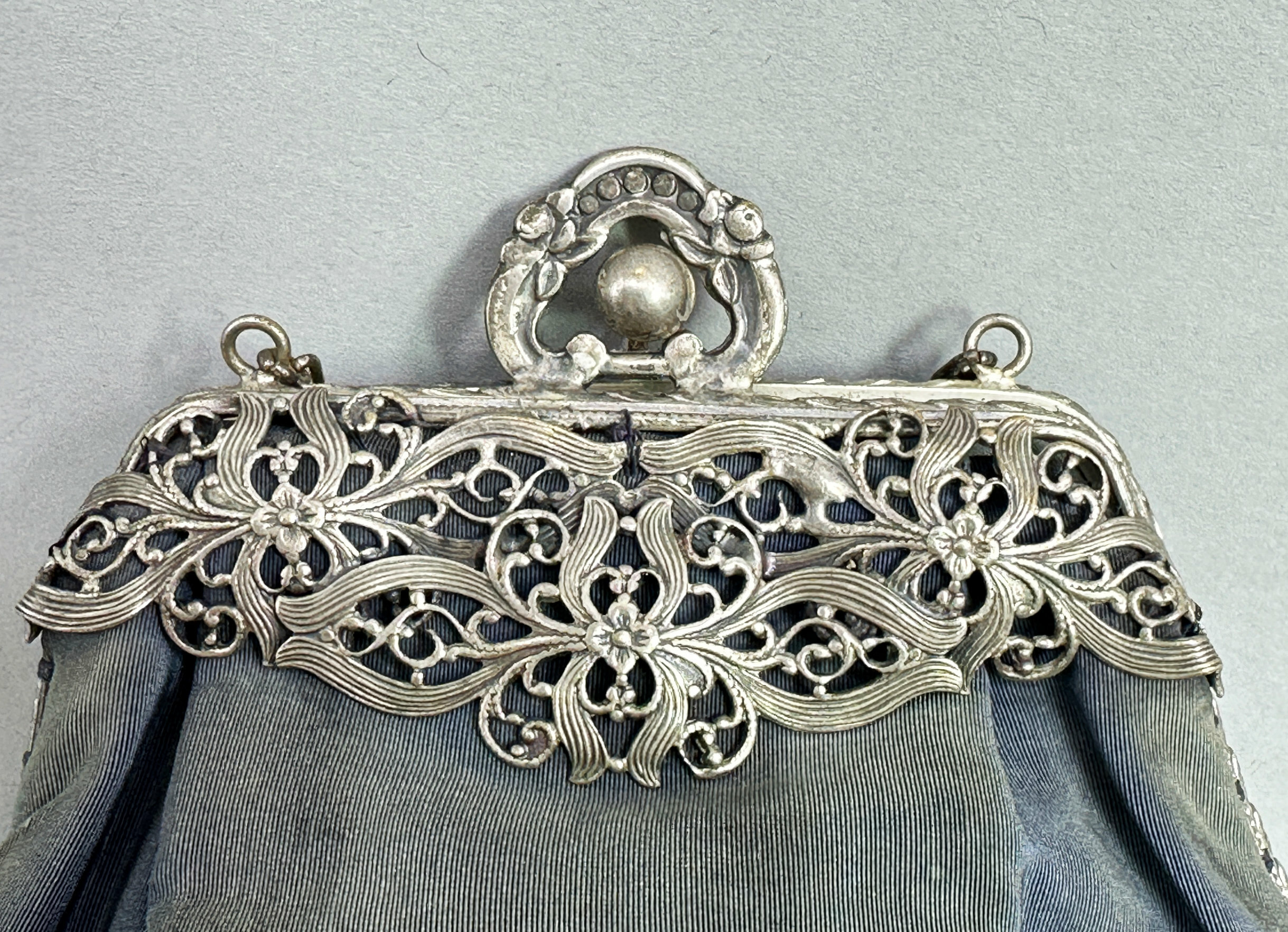
Victorian filigree style handbag c1900
Price: £25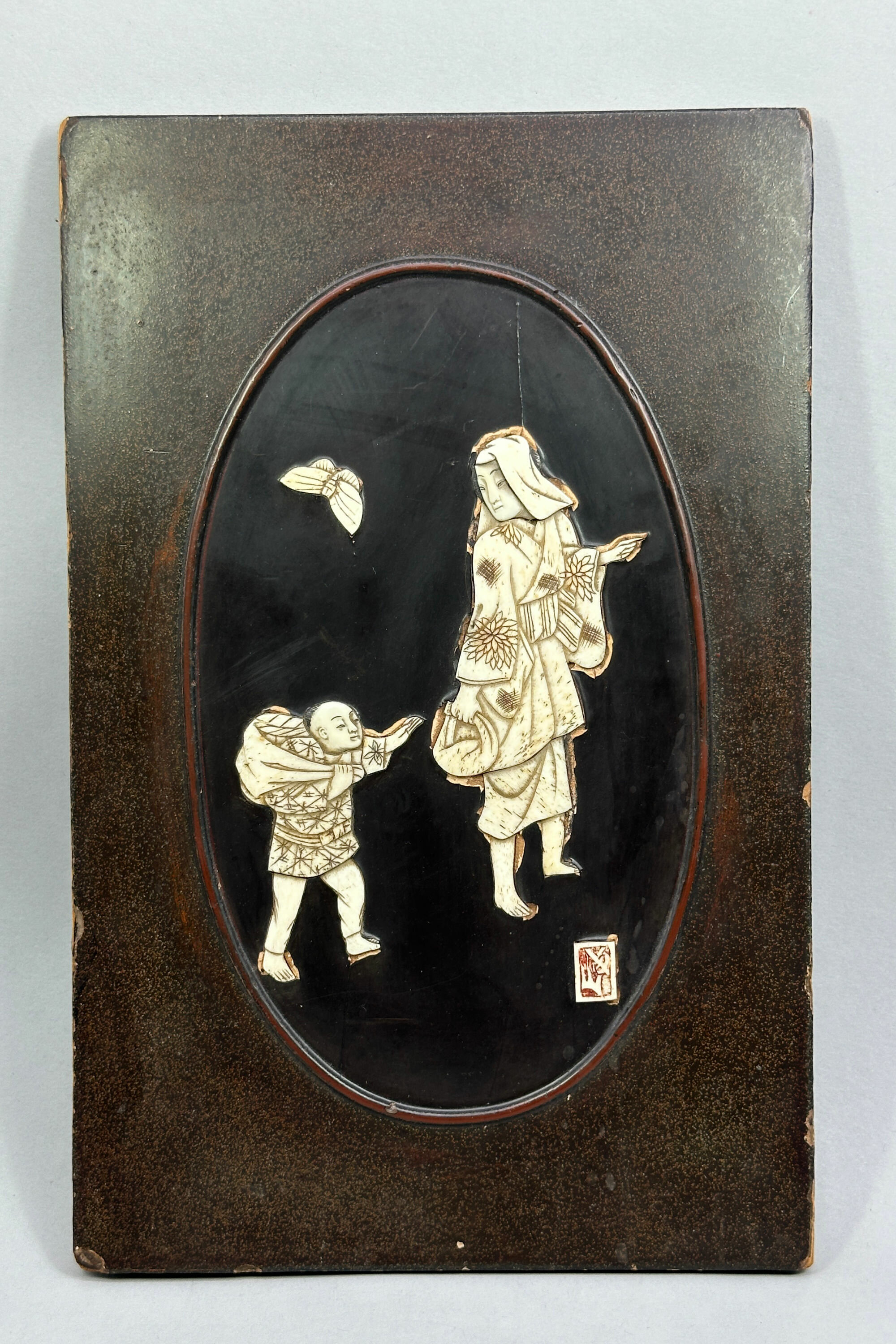
Japanese Bone and Lacquer Plaque, Lady and Boy, signed, late C19th
Price: £45These bone and lacquer plaques were produced in great quantities by Japanese artists in the late nineteenth century for export to the West and became a familiar feature of the European drawing room. The medium was easily subject to damage and loss, especially in respect of the bone inlay, and while this example has some slight damage this is confined to a crack in the lacquer ground of the panel itself and some chipping to the extremities of the panel. The decoration of the figures remains intact (the surround seems to have been cut away in some places to give added definition to the composition) and allows appreciation of the skill with which they were carved, presenting a genre scene of great charm.
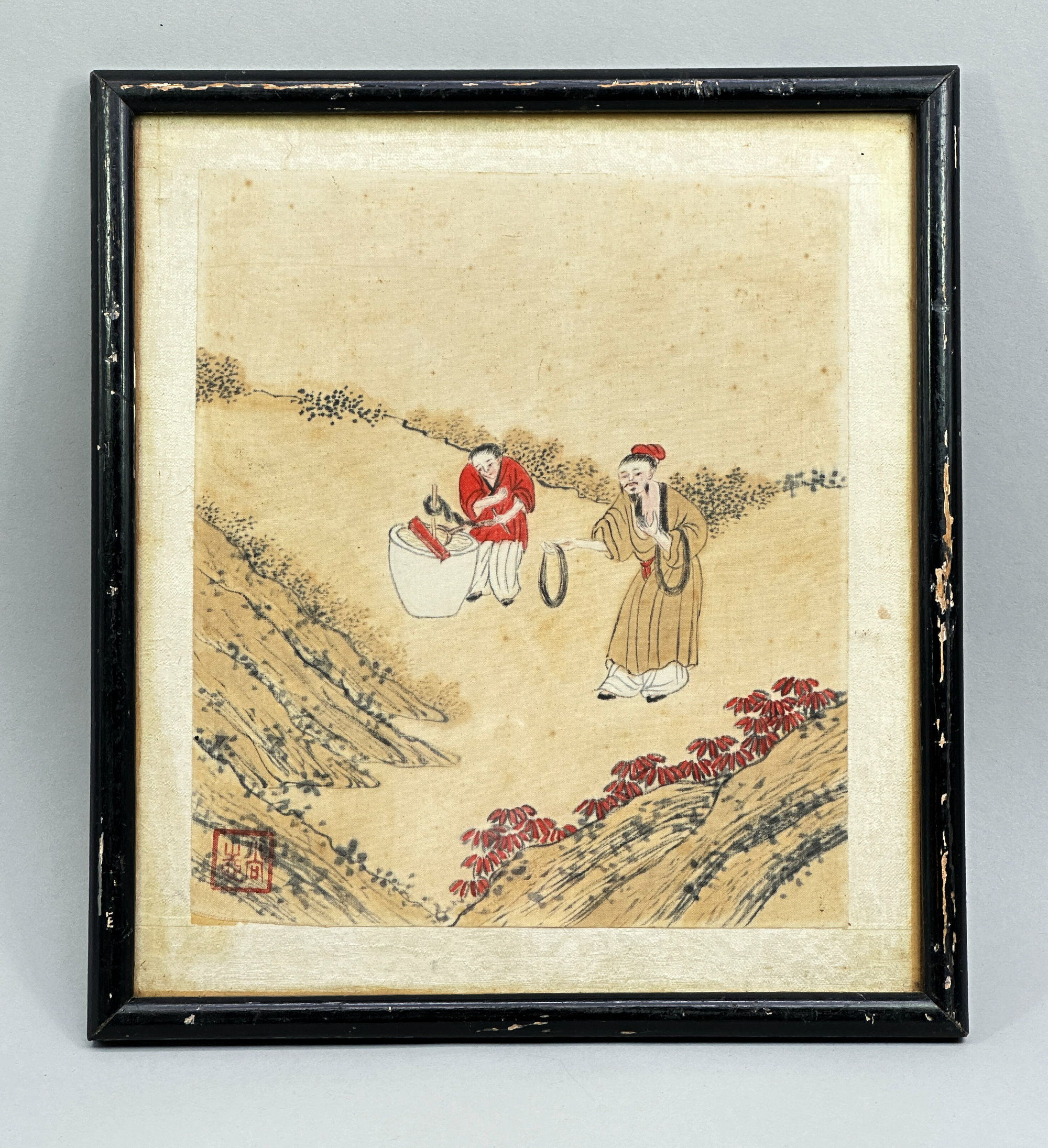
Framed Chinese painting on silk, two Silk Dyers, C19th/C20th
Price: £15
Miniature Staffordshire flatback model of two spaniels and a barrel, second half C19th
Price: £55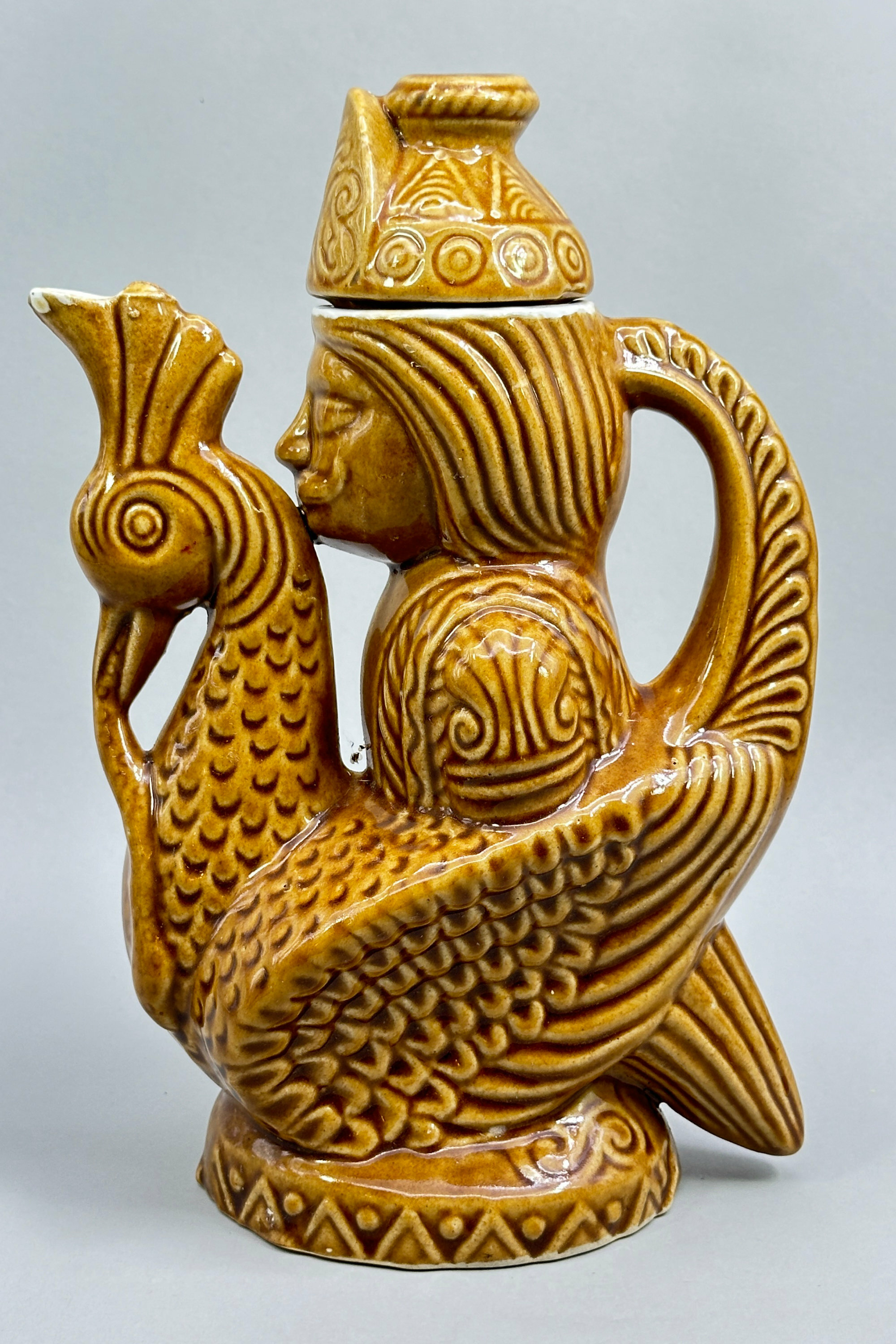
Bird form ewer with cover, possibly Russian c1960
Price: £45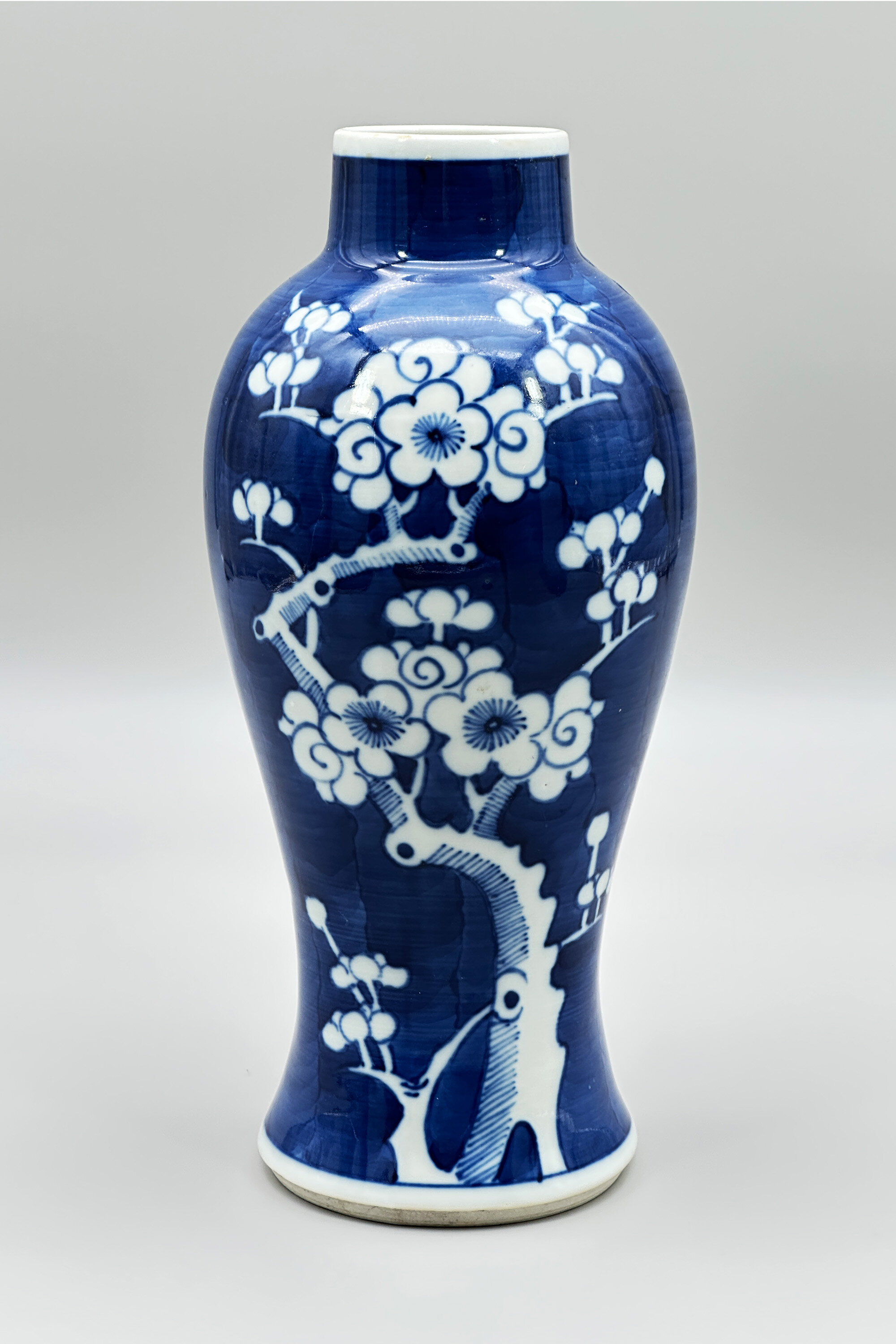
Chinese Blue and White Vase decorated with flowering Prunus circa 1900
Price: £55Flowering prunus or plum blossom is one of the most iconic of the decorative designs used by Chinese potters and first appears in the Kangxi period (1662-1722). Kangxi ginger jars in the pattern were highly prized by Victorian collectors with one example, the legendary ‘Huth’ jar, fetching 5900 guineas, a little over £6000, at auction in 1905, a price equivalent to over a quarter pf a million pounds today. The tree symbolises perseverance and renewal and was usually shown against a pattern of ‘cracked ice, representing the end of Winter and the beginning of Spring. Branches of plum blossom convey the ‘Five Blessings’ : longevity, wealth, health, love of virtue and a peaceful death. The number five was an auspicious number for the Chinese and is reflected in the five petal form of the prunus flower.
Once evolved, the design was continuously repeated by Chinese potters and is even produced today. Many of late nineteenth century pieces display a rather more slapdash interpretation of the pattern as here where the ‘cracked ice’ of the eighteenth century pieces is replaced by the repeated brush strokes of a blue wash ground and the painting of the tree itself is sketchy. The style of decoration and the paste of the foot indicate a circa date to around 1900, but this modest interpretation of centuries old pattern still possesses a charm of its own.
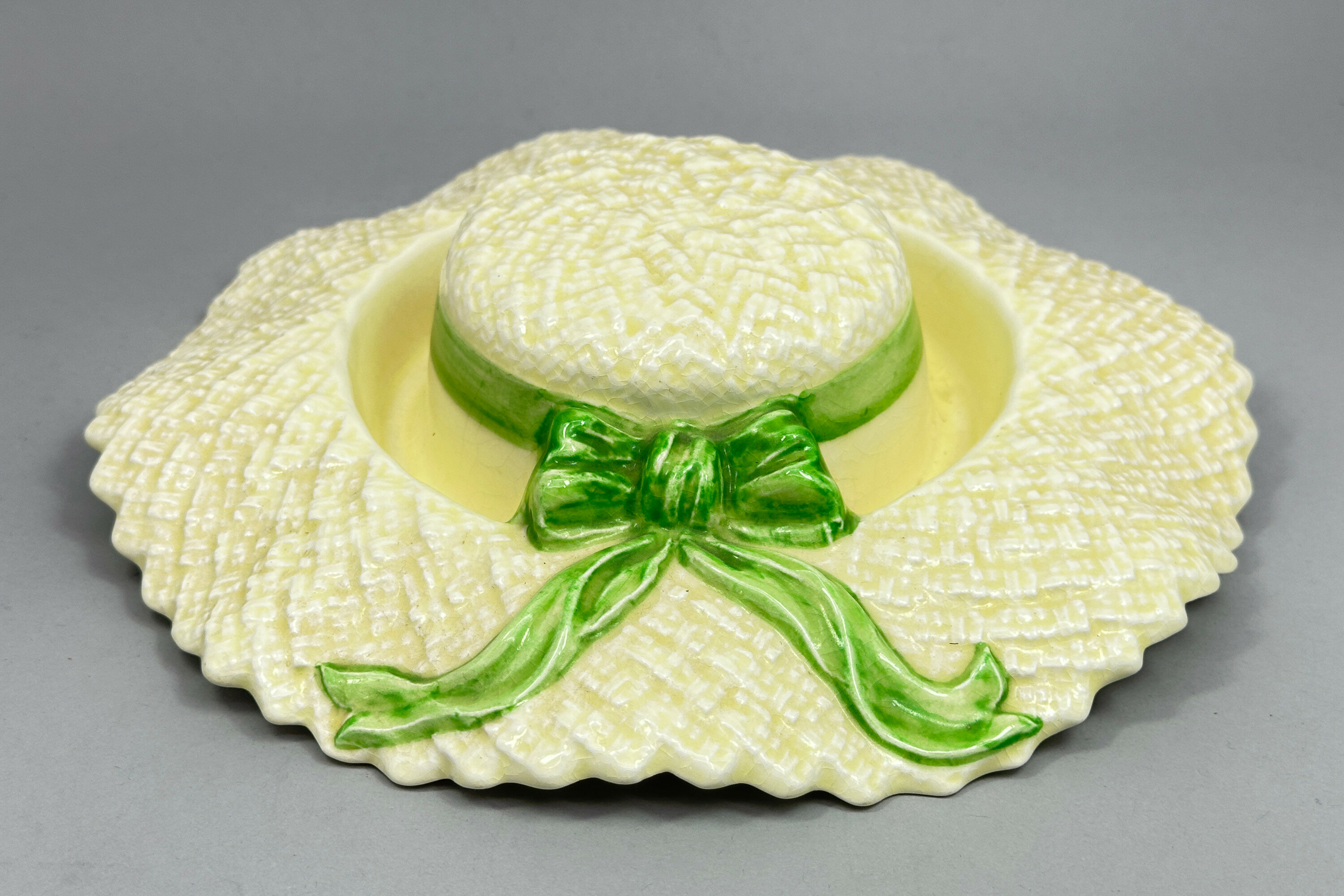
Novelty Bonnet Posy Vase, 1940s/1950s
Price: £25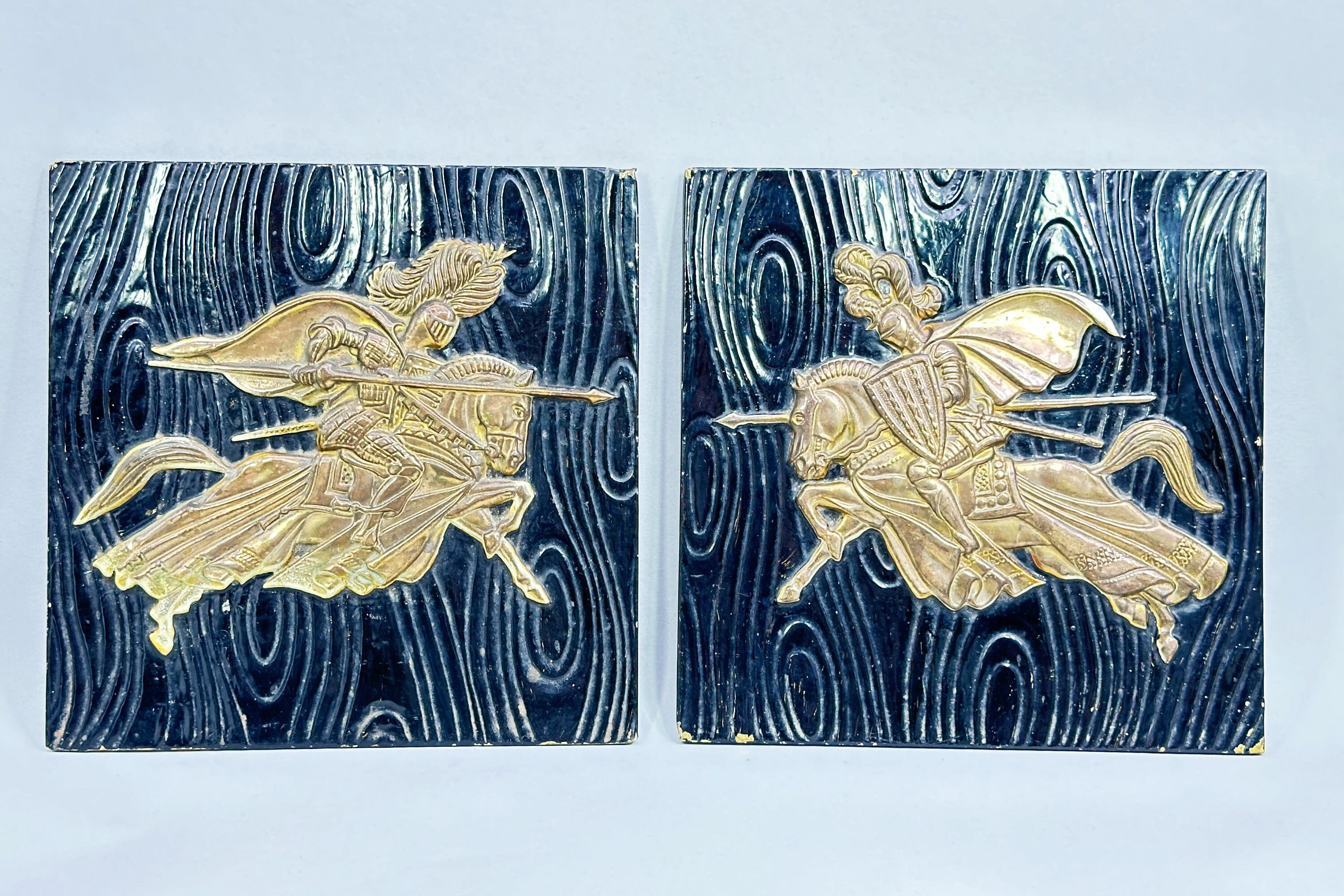
Pair of Brass Wall Plaques of Jousting Knights, Peerage Brass, mid C20th
Price: £45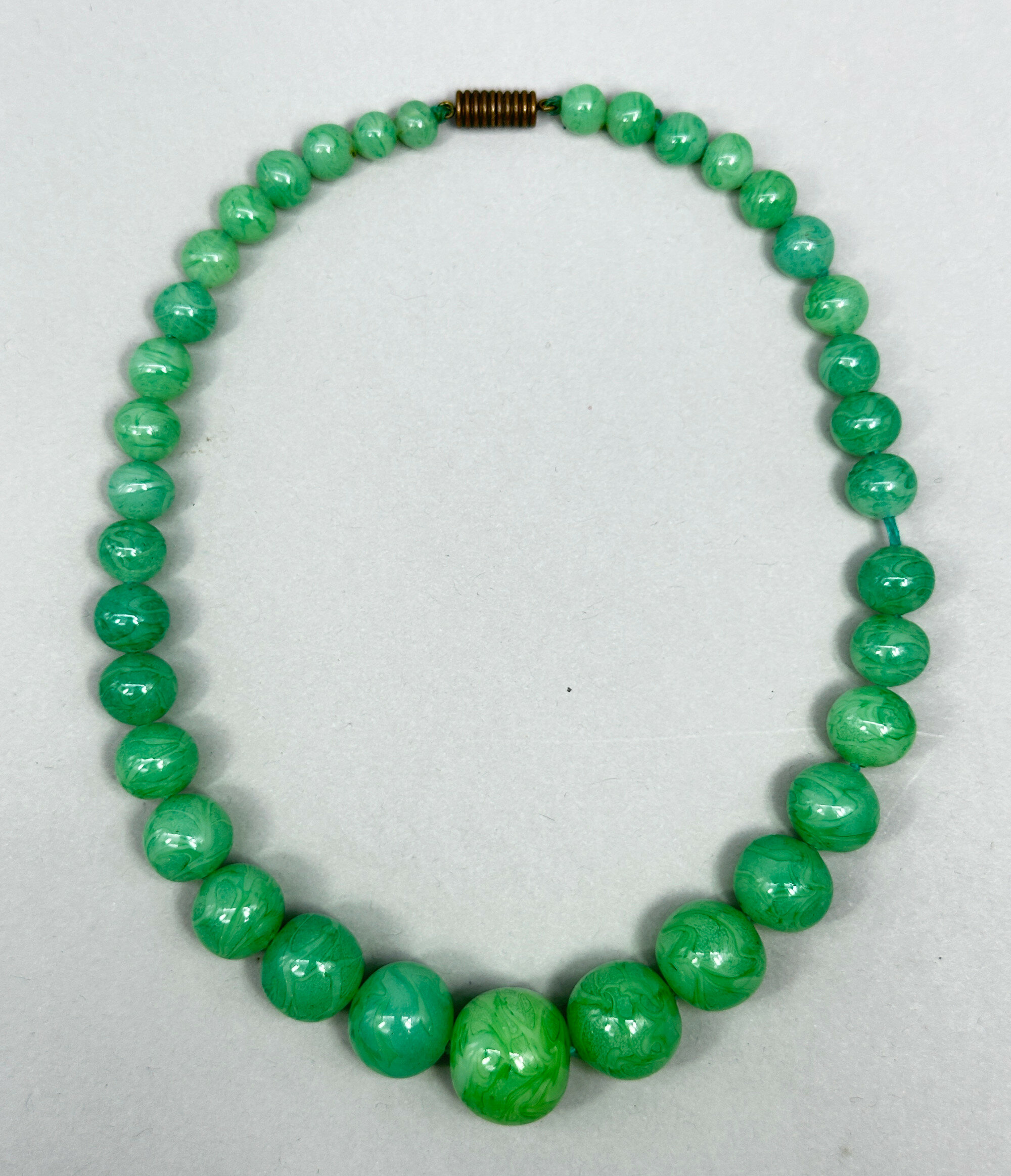
Strand of large Peking glass beads c1920
Price: £25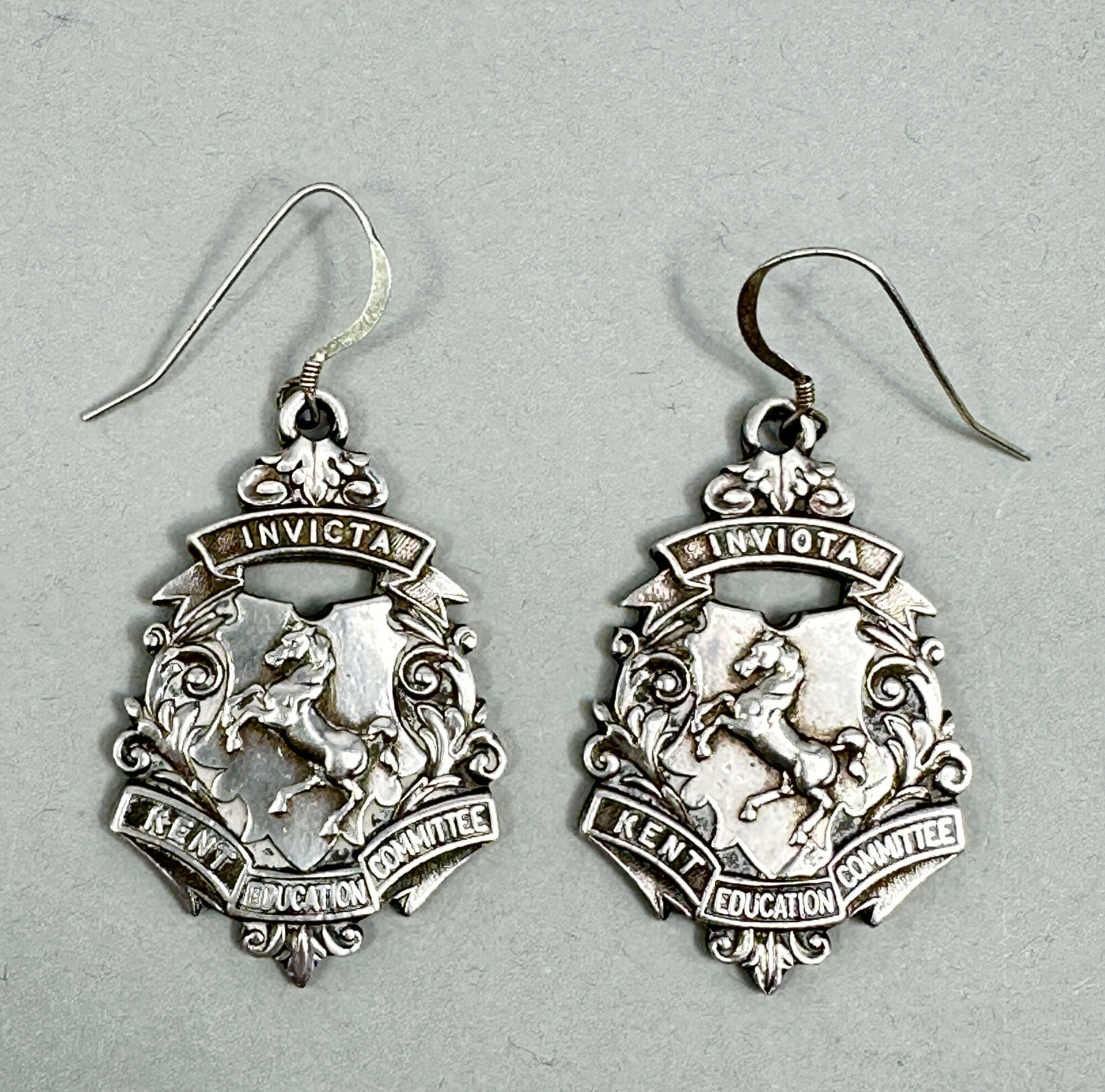
Pair of silver fobs adapted as earrings, Birmingham 1904 & 1905
Price: £75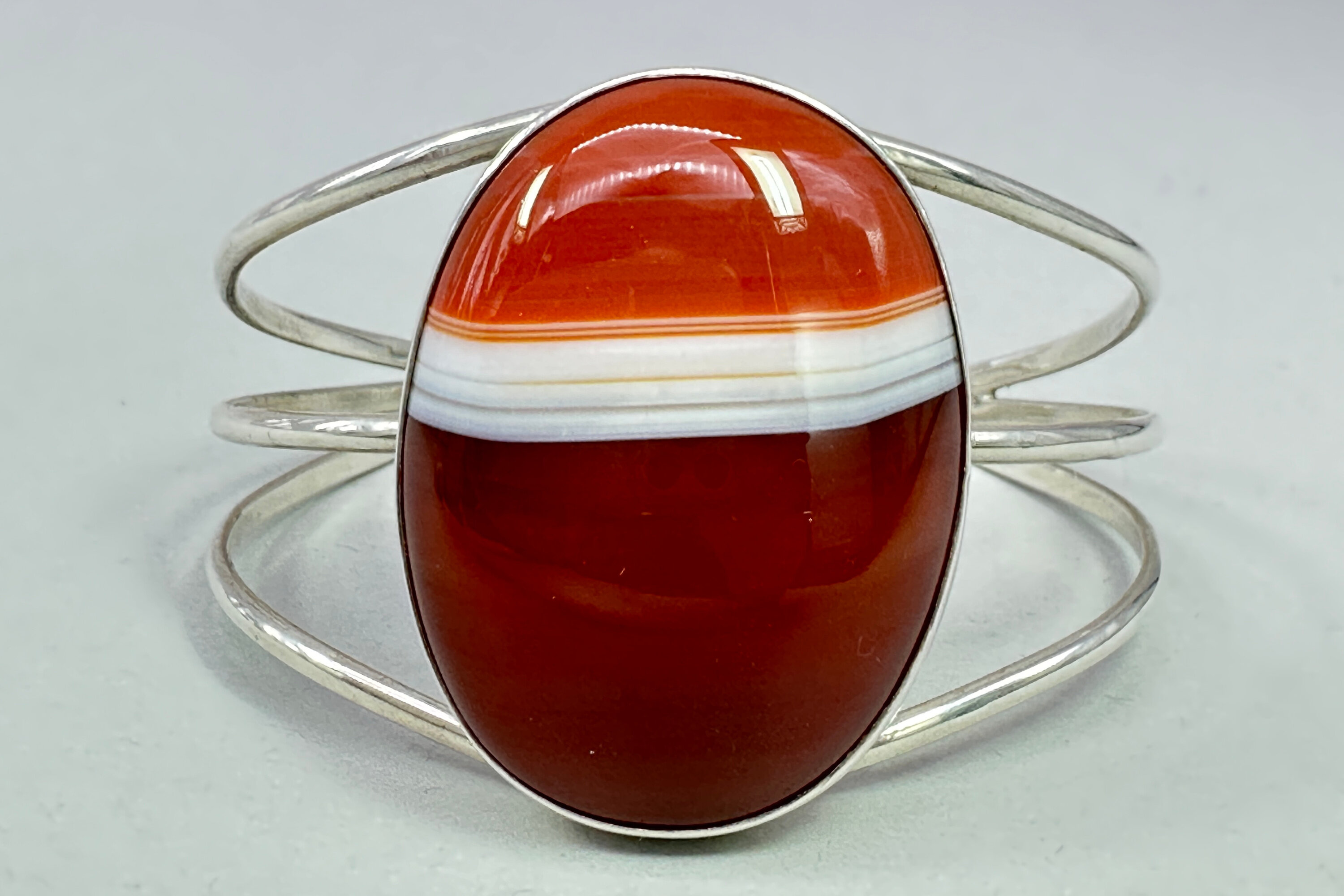
Silver cuff bracelet set with Scottish banded carnelian stone, Birmingham 1975
Price: £85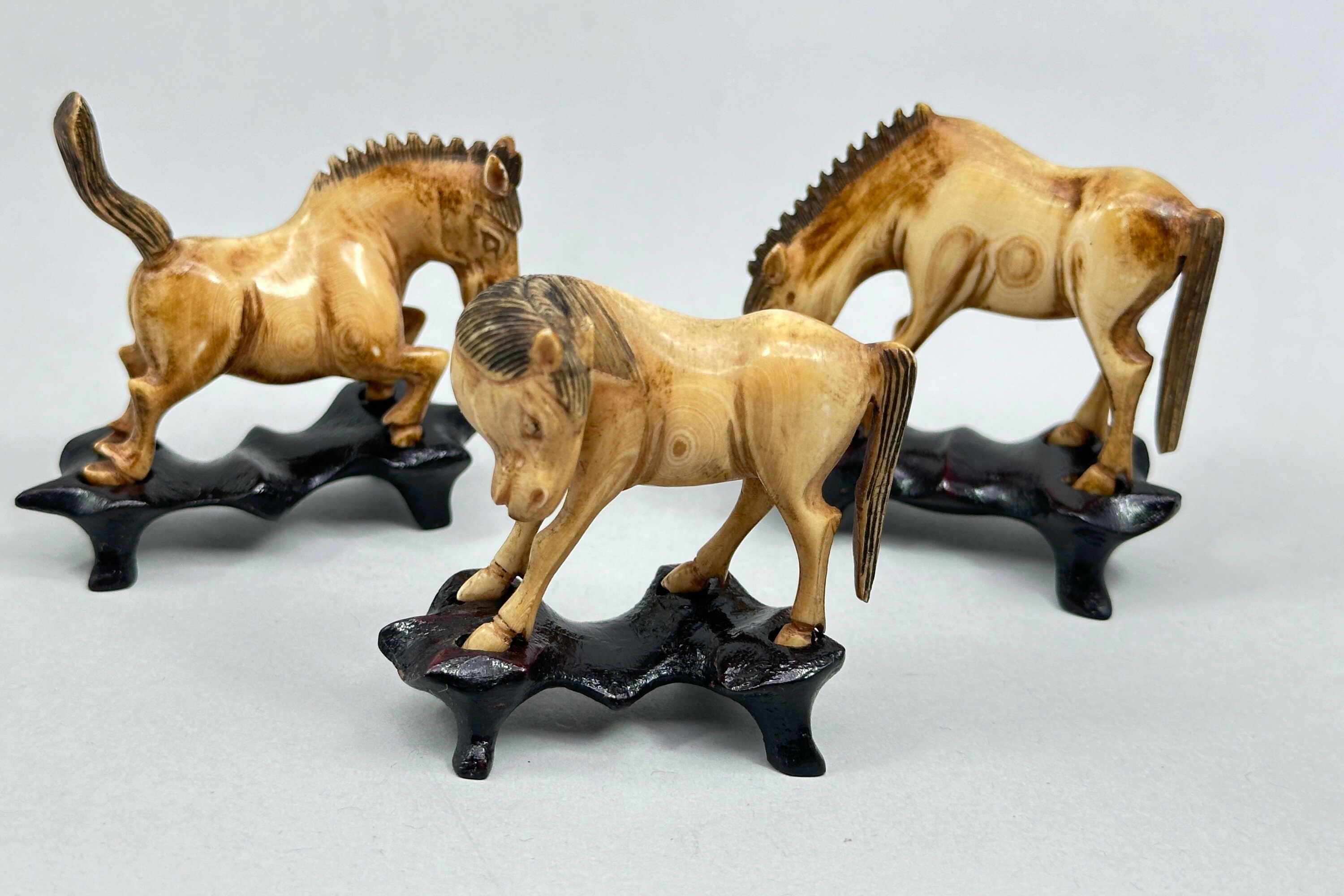
Group of Three Chinese carved bone Horses with wood stands, probably mid C20th
Price: £30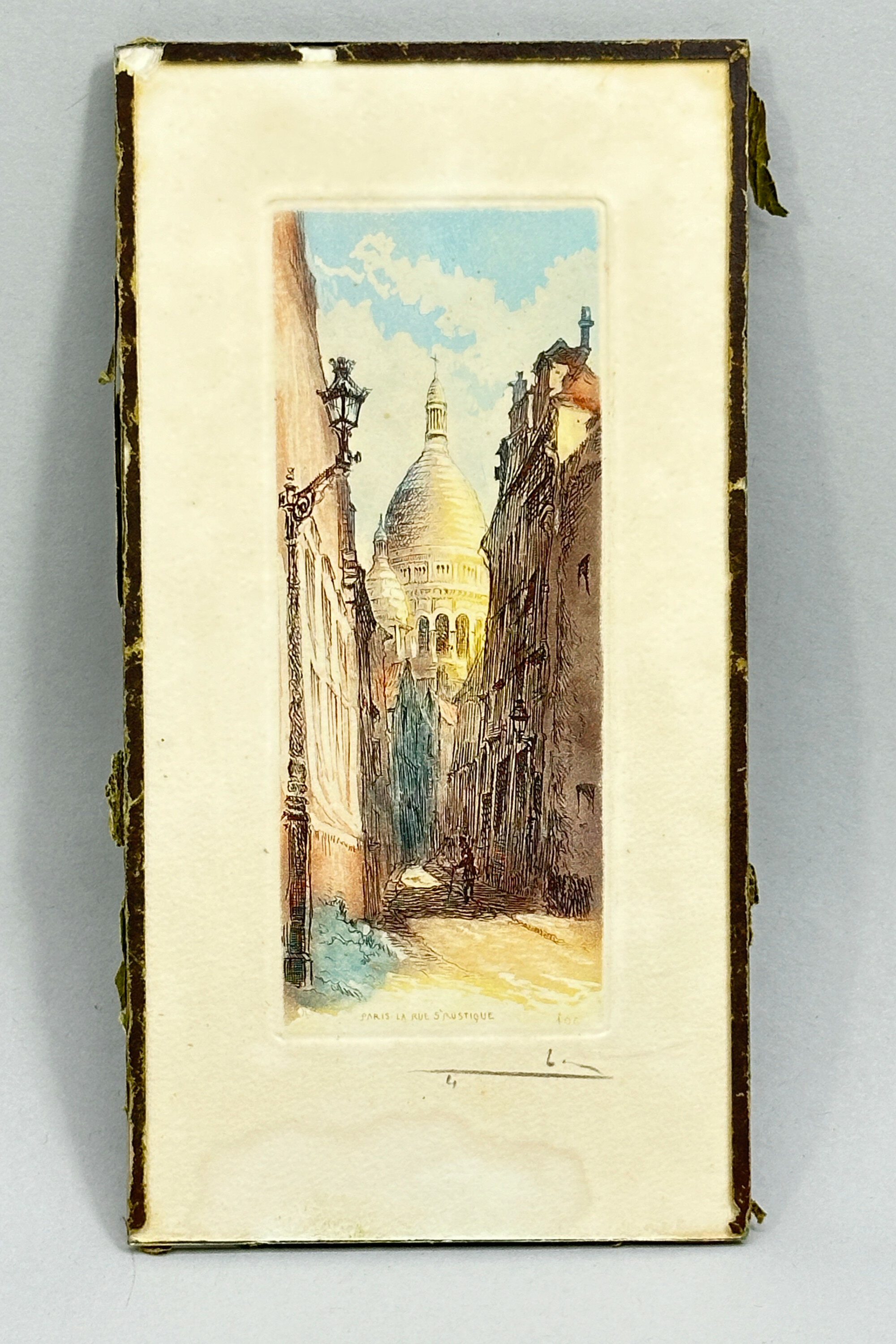
French Orientalist etching aquatint - Paris La Rue Saint Rustique
Price: £35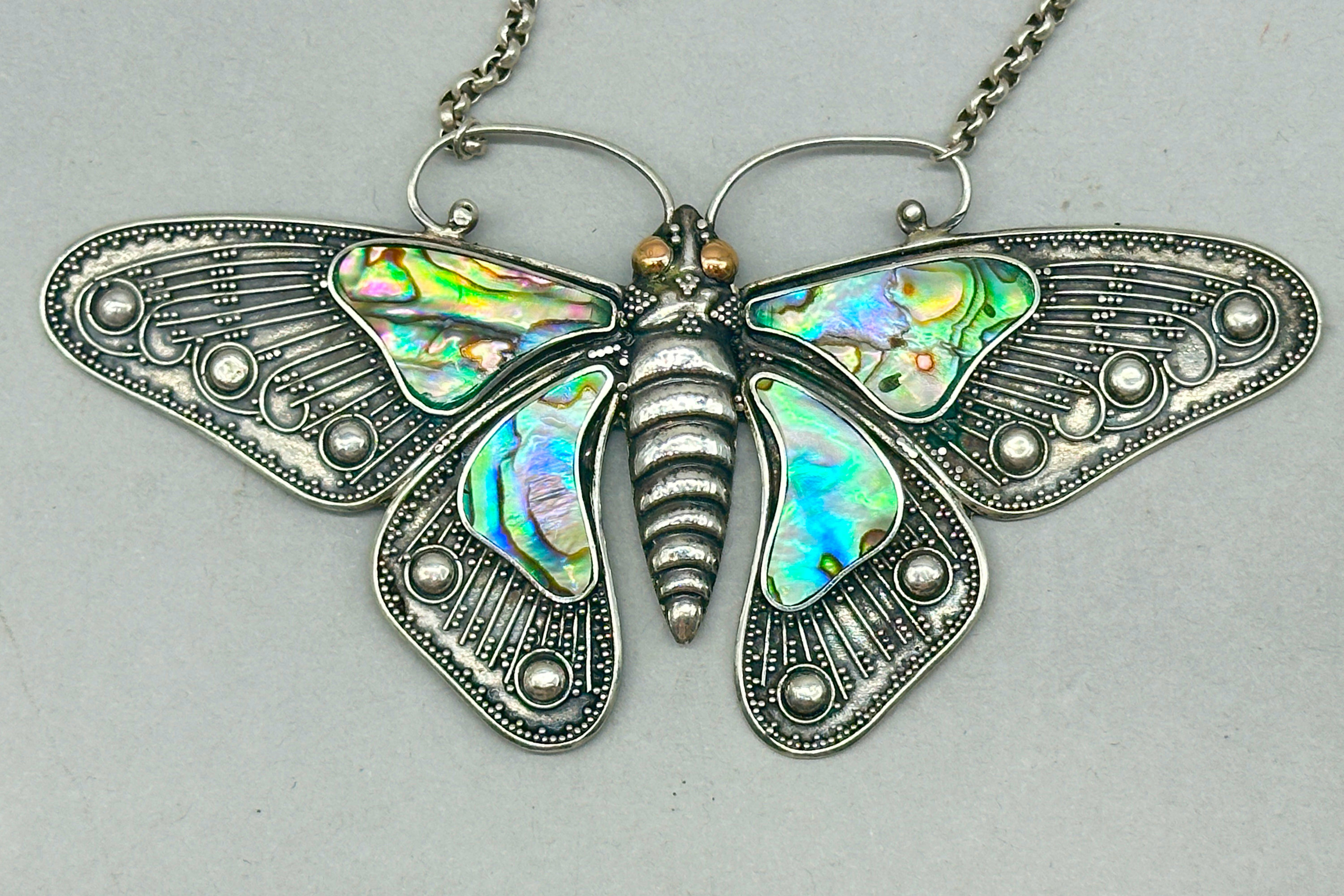
Silver Butterfly form Pendant set with Abalone, Bali, C20th
Price: £95
Pair of Doulton Lambeth Vases, signed and dated 1882
Price: £150The Doulton factory began production in 1815, first at Vauxhall and later moving to Lambeth. In 1882 it opened an additional factory at Burslem, Stoke on Trent in the centre of the English pottery. Known at first mainly for utilitarian works it began to develop decorative wares more extensively in the 1860s and soon gained a reputation for its distinctive designs. As the factory mark indicates, these pieces were made at the Lambeth factory and the absence of ‘England’ below it indicates that it dates to before 1891. The Lambeth ware pieces were often marked with the date of manufacture, here 1882 which is fully consistent with a design inspired by Eastern influence. The artist’s mark, ‘B’ with a tail, which appears on both pieces, is for Alice L Burlton, whose signature can be seen on other pieces of a similar date with similar raised decoration. The other three markings ‘B’ and ‘OO’ presumably indicate the pattern number.
In general, Doulton designs were often both striking an experimental and this pair of vases is an example of their work at its best, a striking form combined with skilful decoration making them true collector’s items.
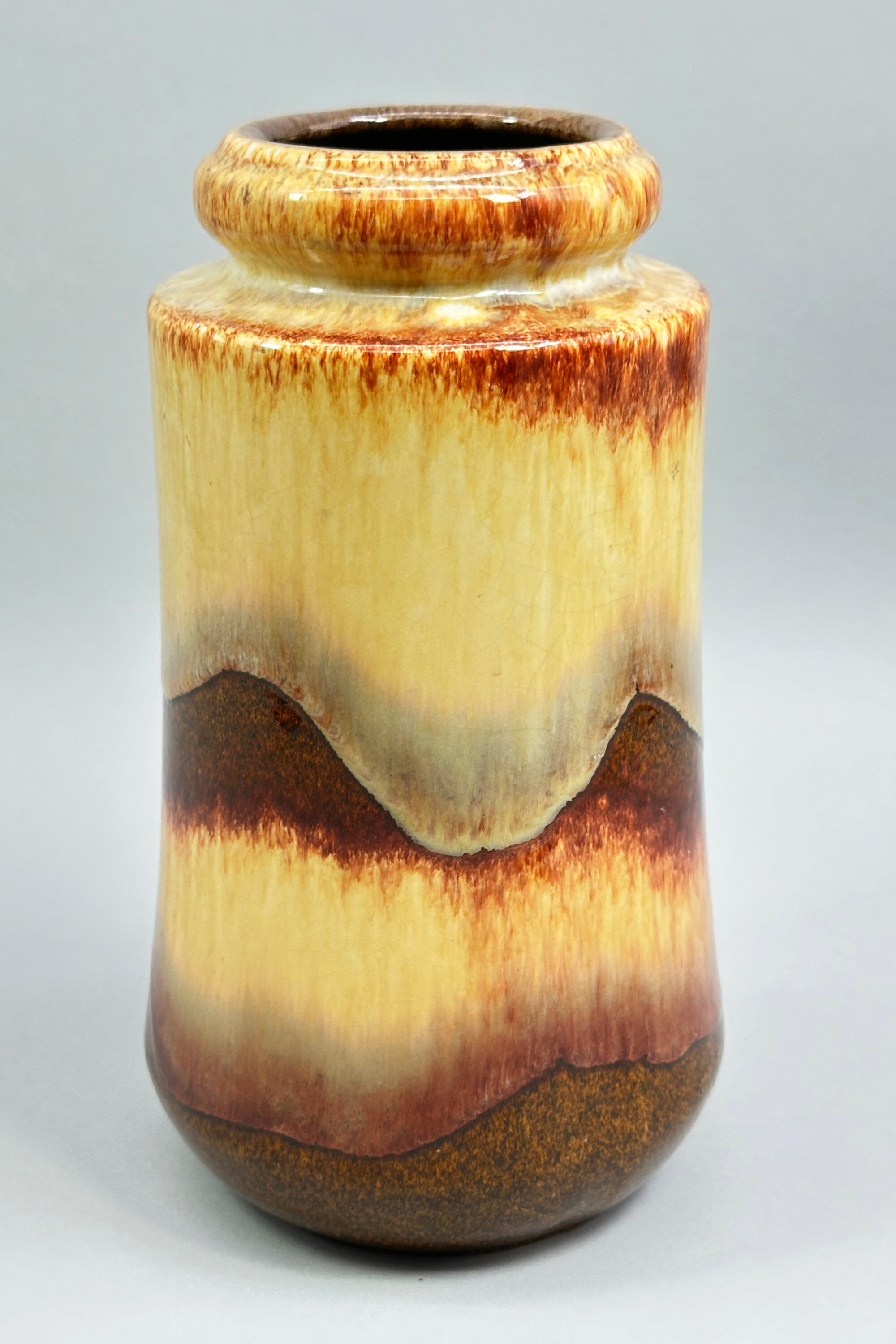
West German Studio Pottery Vase, Scheurich, 1960s
Price: £35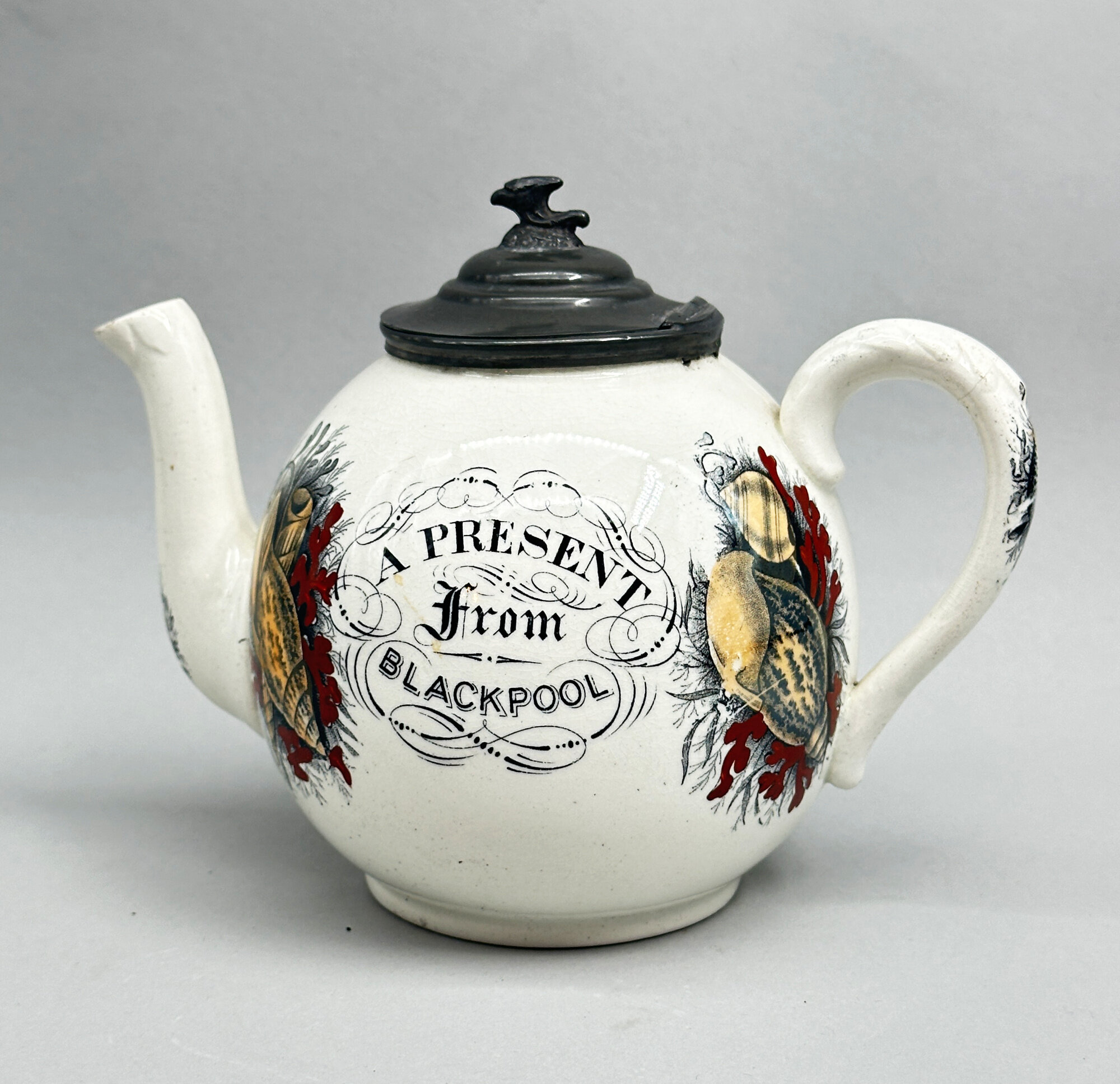
Blackpool souvenir teapot c1920
Price: £35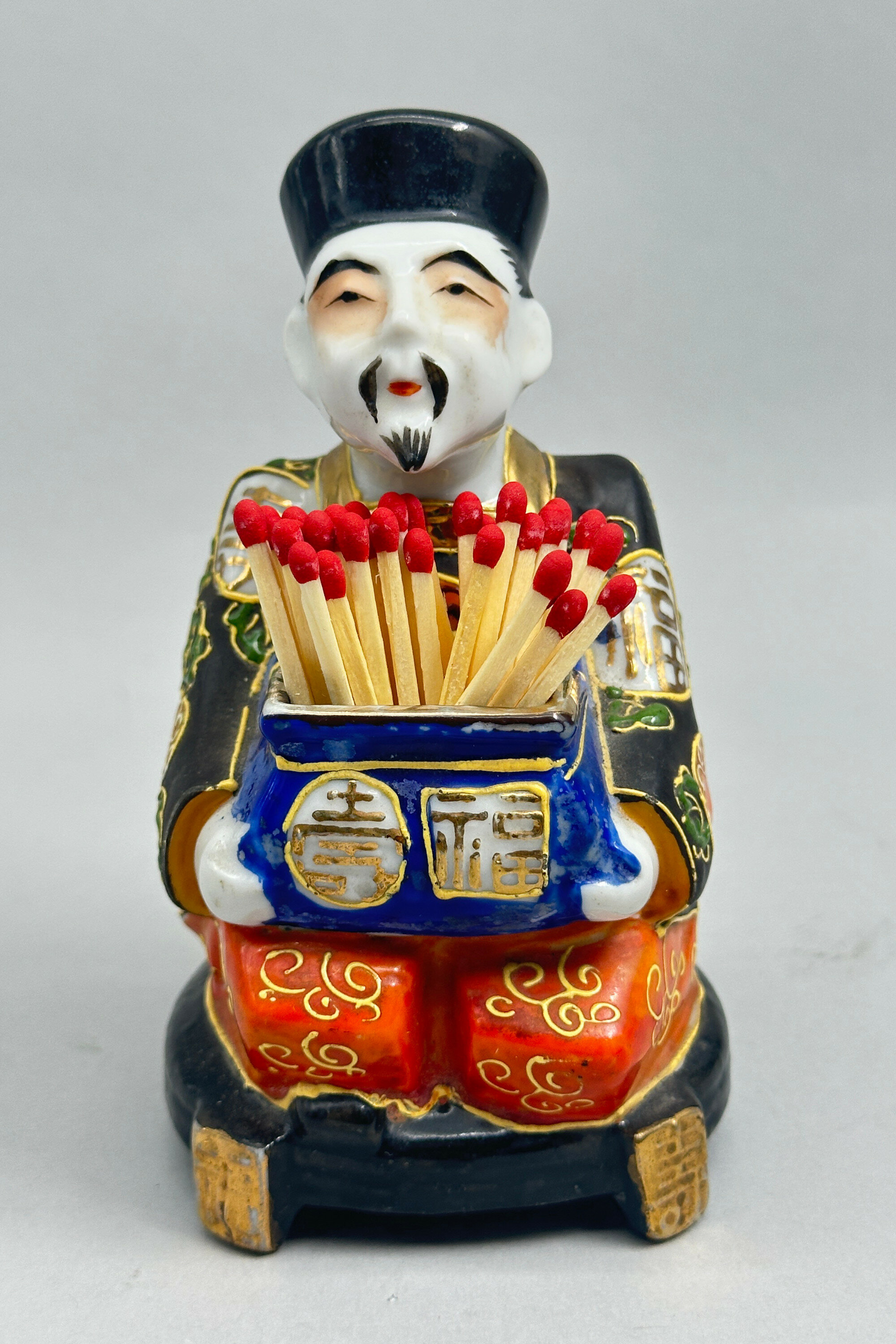
Japanese satsuma style match stick holder c1940
Price: £45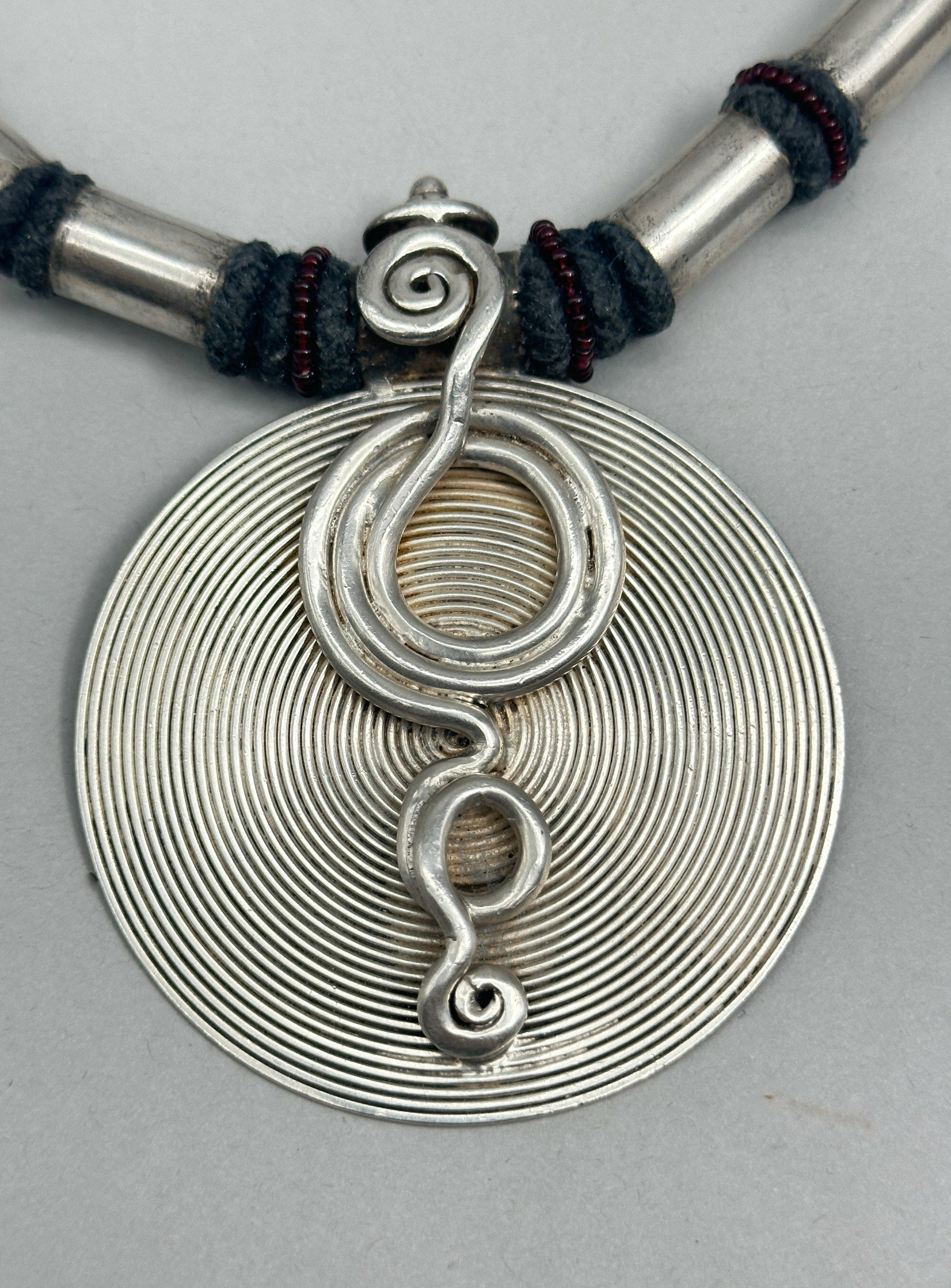
Indian tribal necklace, 19th century
Price: £175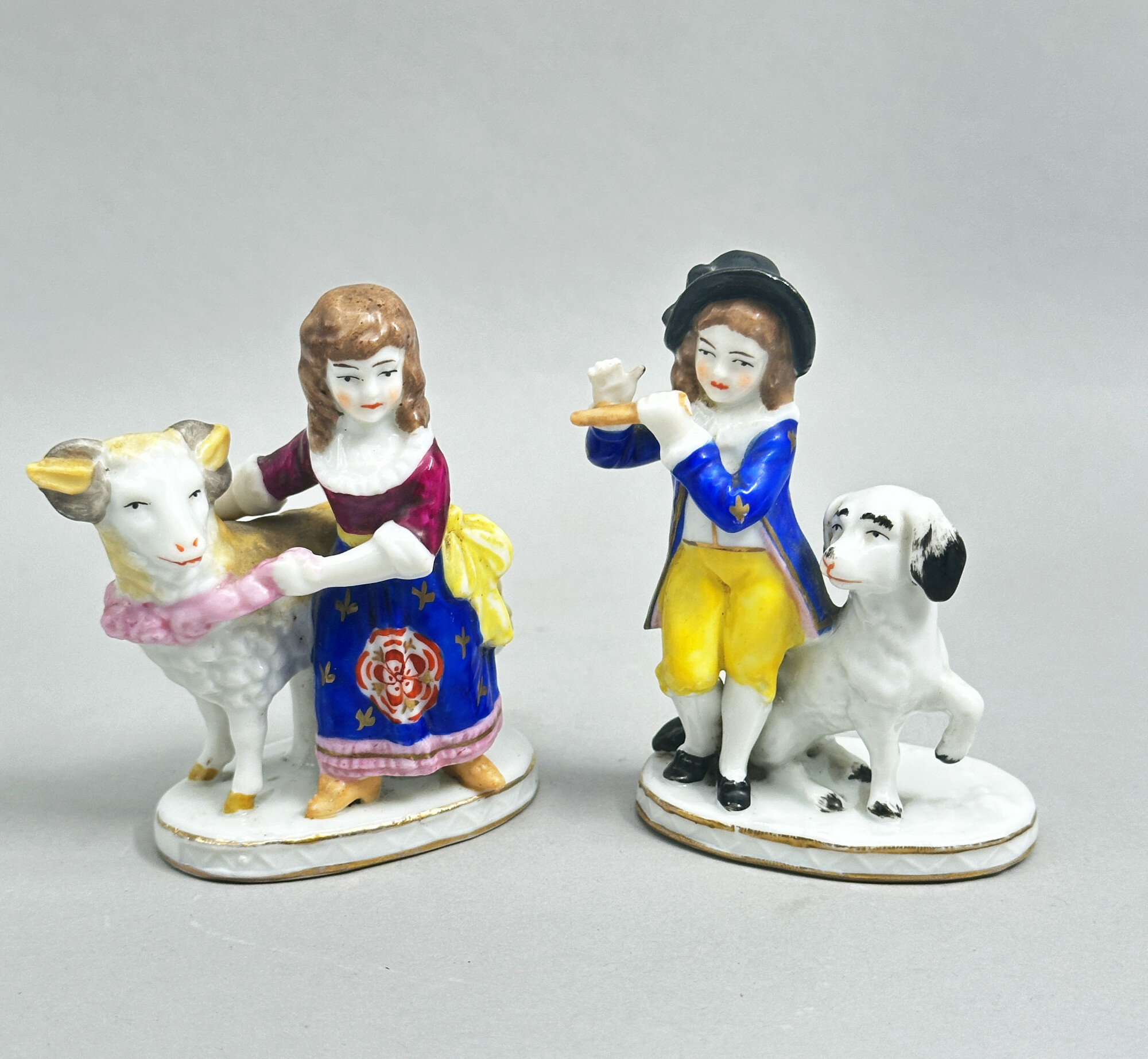
Pair of Chelsea style Figures of a Country Couple, probably Samson late C19th
Price: £55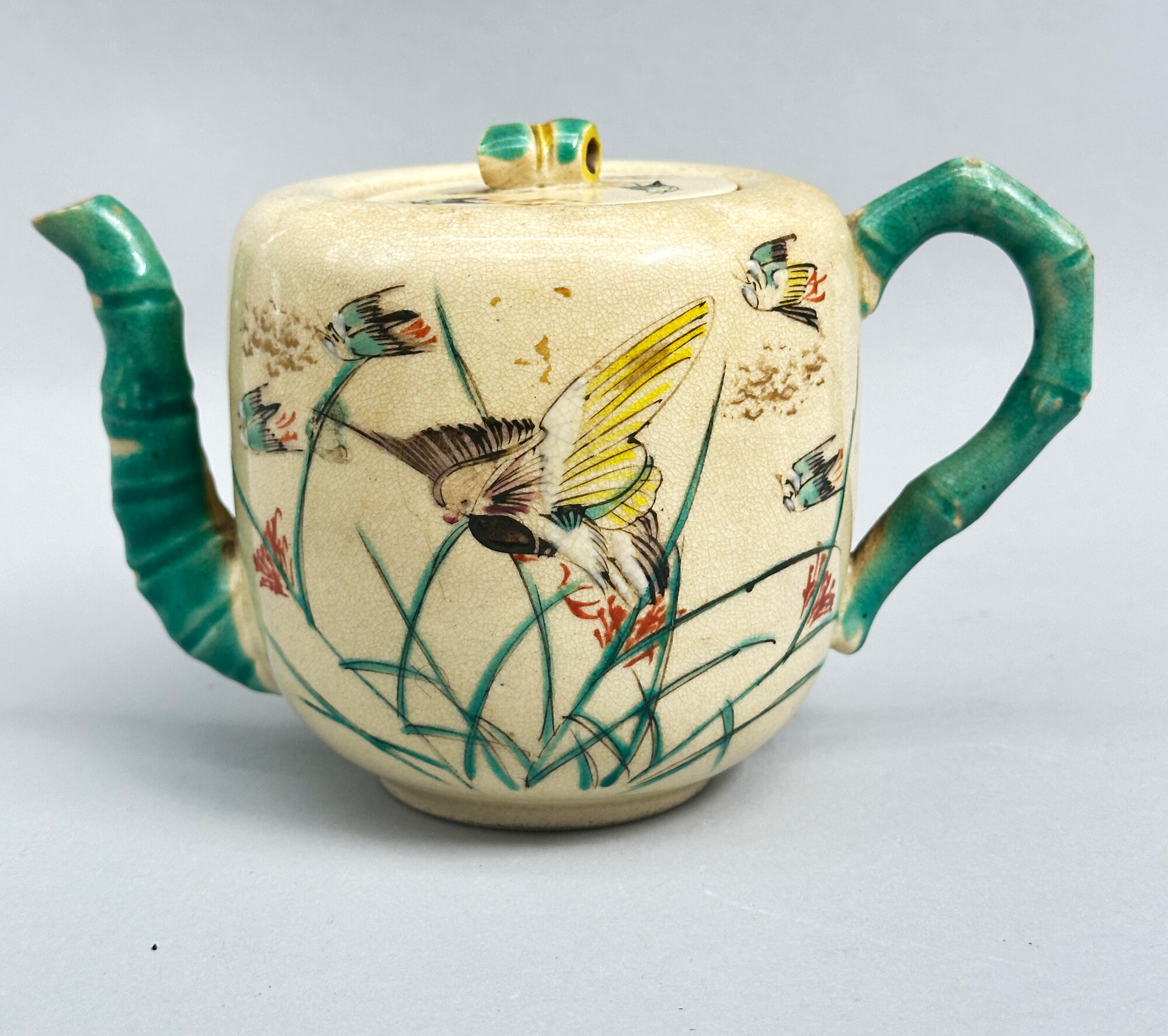
Japanese Awata ware Teapot and Cover, signed, circa 1900
Price: £25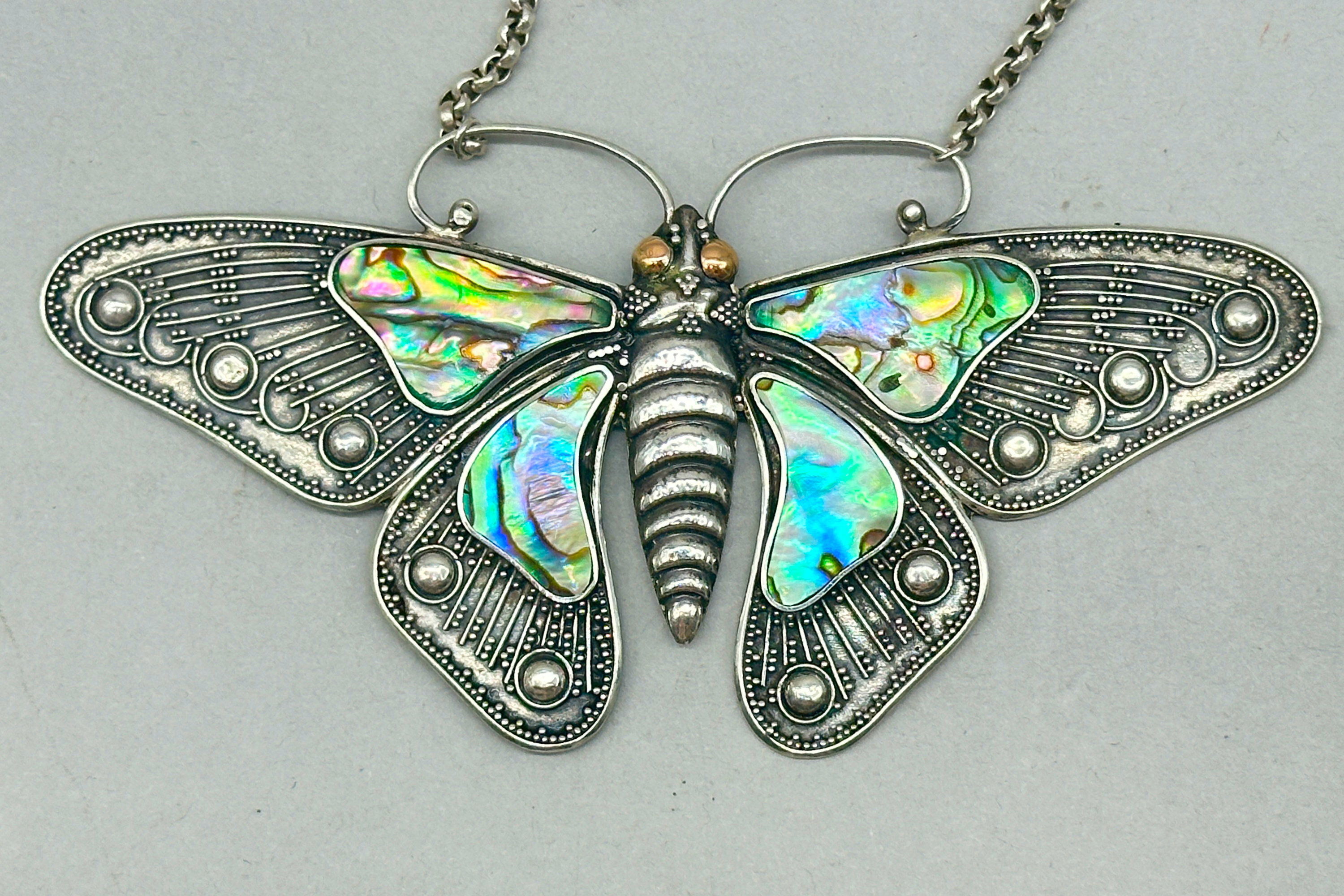
Silver Butterfly form Pendant set with Abalone, Bali, C20th
Price: £95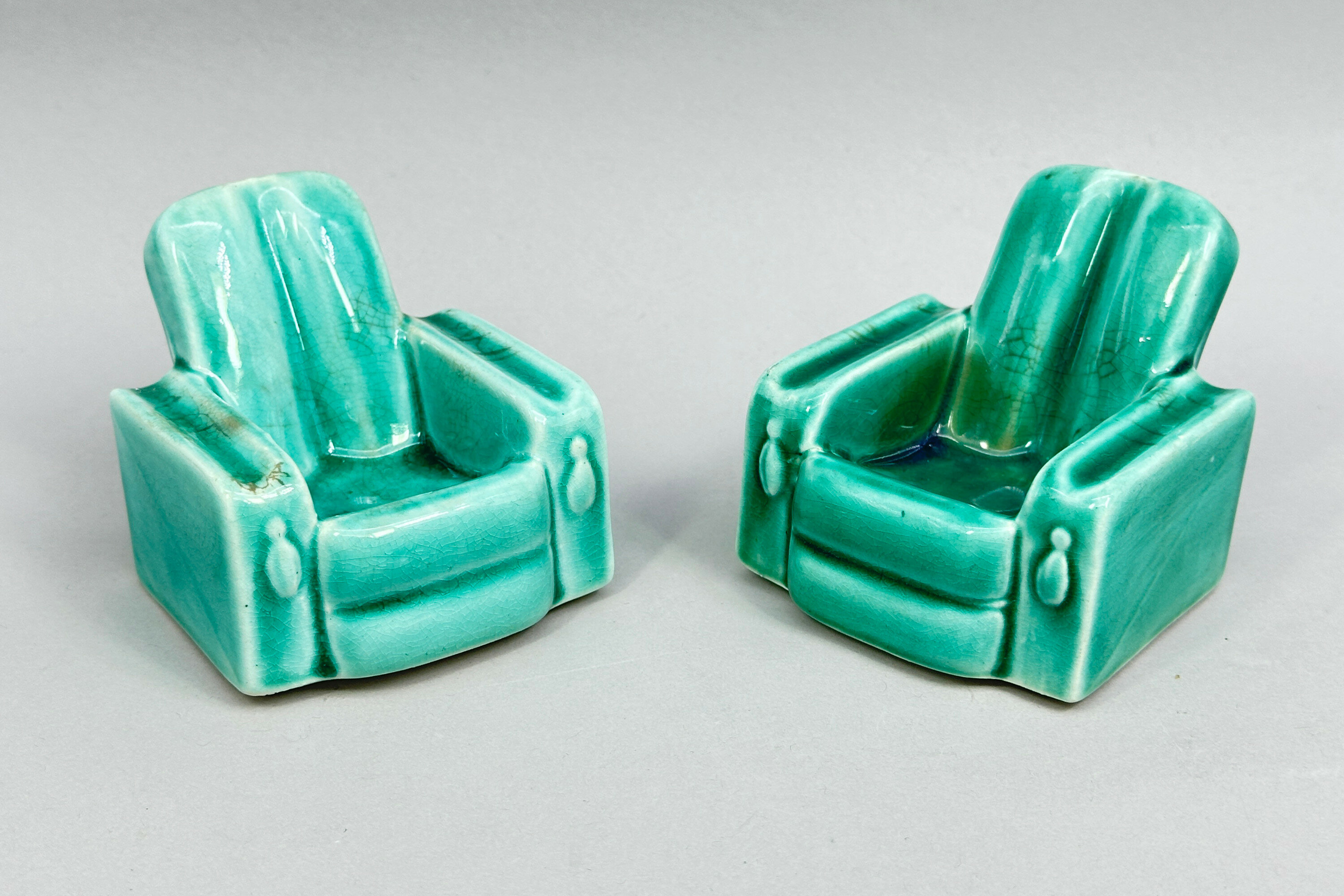
Pair of Vintage Art Deco style armchair Pipe Rests, English c1930
Price: £55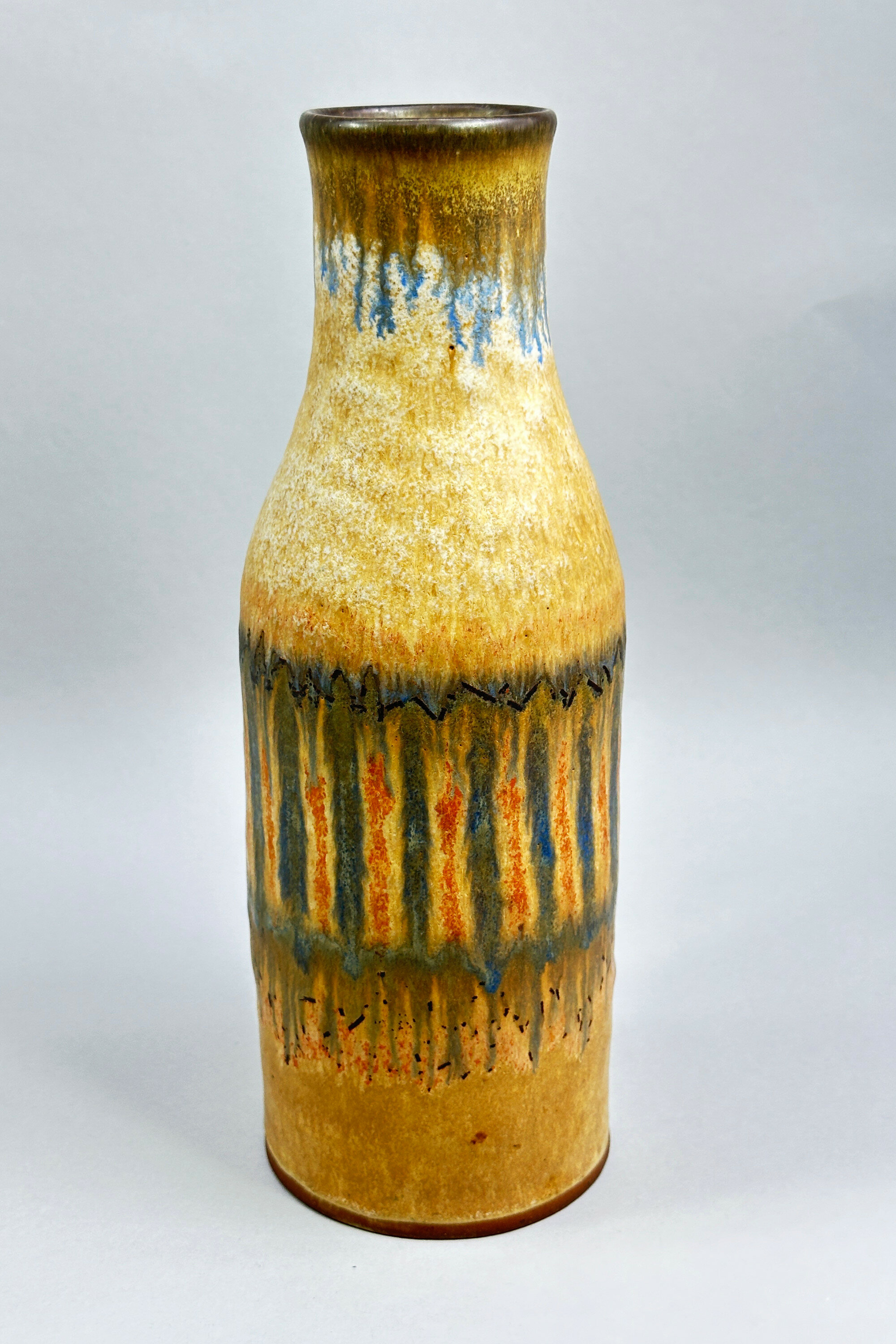
Studio Pottery Vase signed Kamini, Greece, 1970s
Price: £45Although ‘Kamini’ is both the Greek word for a kiln and the name of a village on the Greek island of Hydra, it actually stands here for the Greek firm of that name whose registered office was at Kallithea, a suburb of Athens. The Kamini pottery produced a wide range of appealing but often slightly rustic wares in the 1970s, many with the splash glaze effects we see here and all stamped with the firm’s name. This vase stands out somewhat for the simple lines of its form and the variety of effects in its decoration with a particularly pleasing palette of colours and demonstrates that this Mediterranean pottery could well rival at times the work of some of its European competitors.
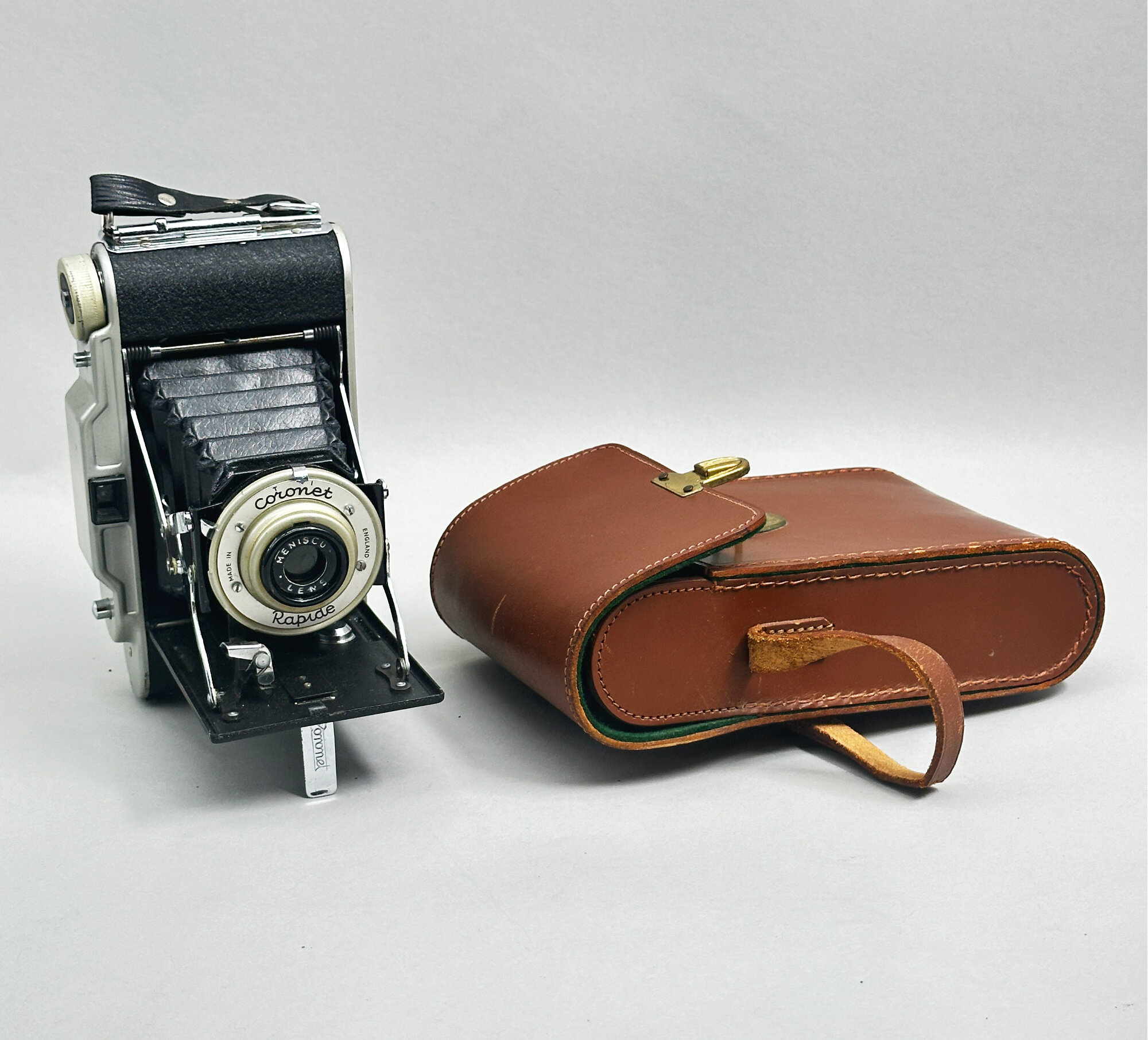
Mint Coronet Rapid camera with case 1950s
Price: £45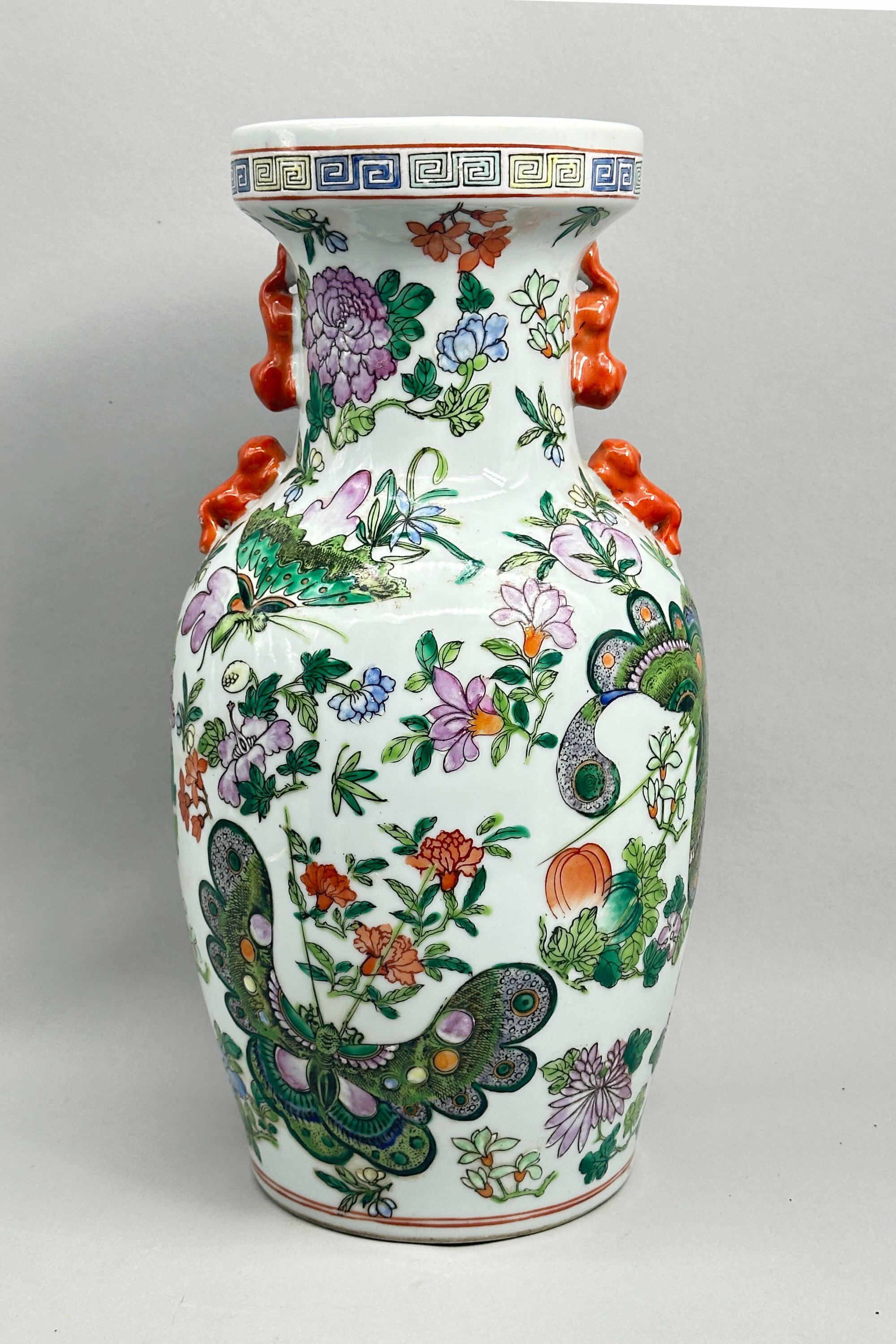
Chinese Cantonese style Vase decorated butterflies, late C20th
Price: £150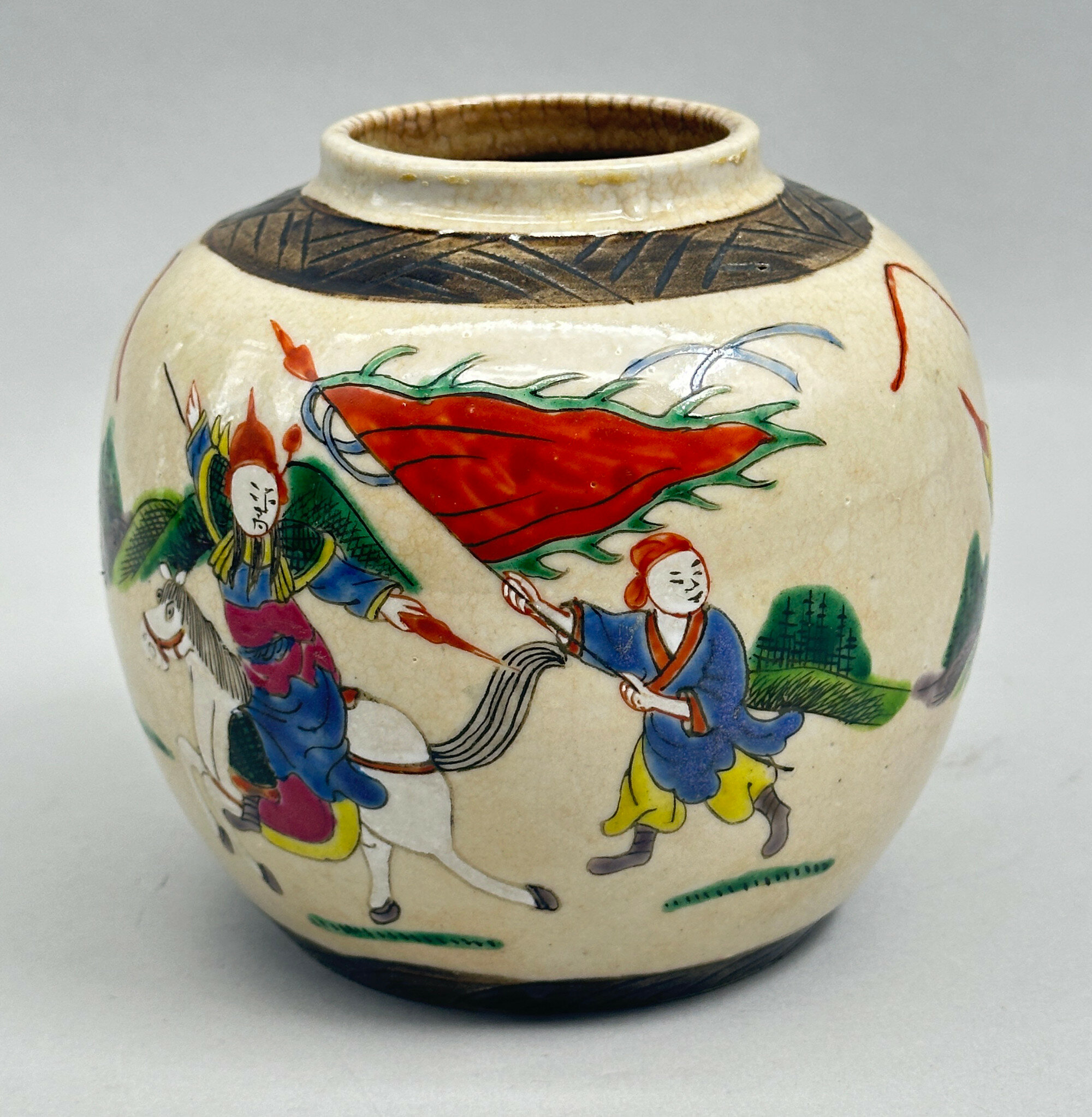
Chinese Crackleware Ginger Jar decorated with Warriors circa 1900
Price: £25'Crackleware' glazed pieces, usually with 'bronzed’ bands, were a staple output of the Chinese potteries from the mid nineteenth century onwards and were produced in a wide variety of mainly vase shape forms, both in polychrome and blue and white and intended as decorative pieces for the Victorian rooms of the West. As with other ceramic types, the quality deteriorated and this piece is typical of the late productions with a more modest level of craftsmanship but still retaining a naif charm. As with many ginger jars, this one lacks its original domed cover which would have been decorated to match.
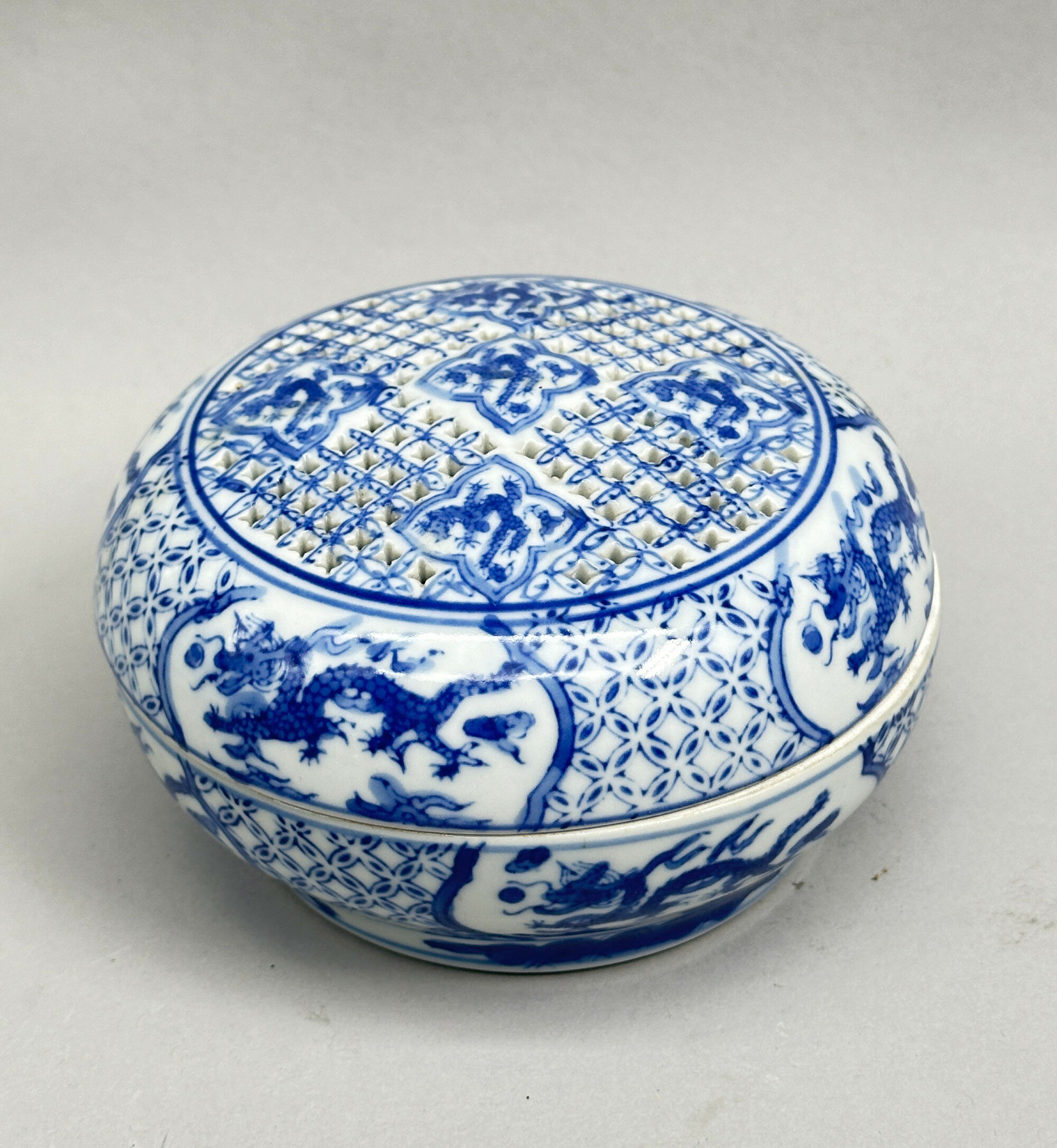
Chinese Blue and White Box and Cover with pierced lid, late C20th
Price: £25The Charles Sadek Import Company was founded in 1936 by the father and son Charles and Norman Sadek and began by importing decorative items from Japan later broadening their range to a wider variety of suppliers including China. These pieces were sold under the ‘Andrea by Sadek’ brand, named after Norman's daughter Andrea. The business continued to a third generation until it was taken over by Fitz & Floyd in 2015.
This box, then, is a typical example of their range of wares, good quality decorative items marketed at an affordable price. The quality of these boxes can vary and this piece seems to be an above average example.
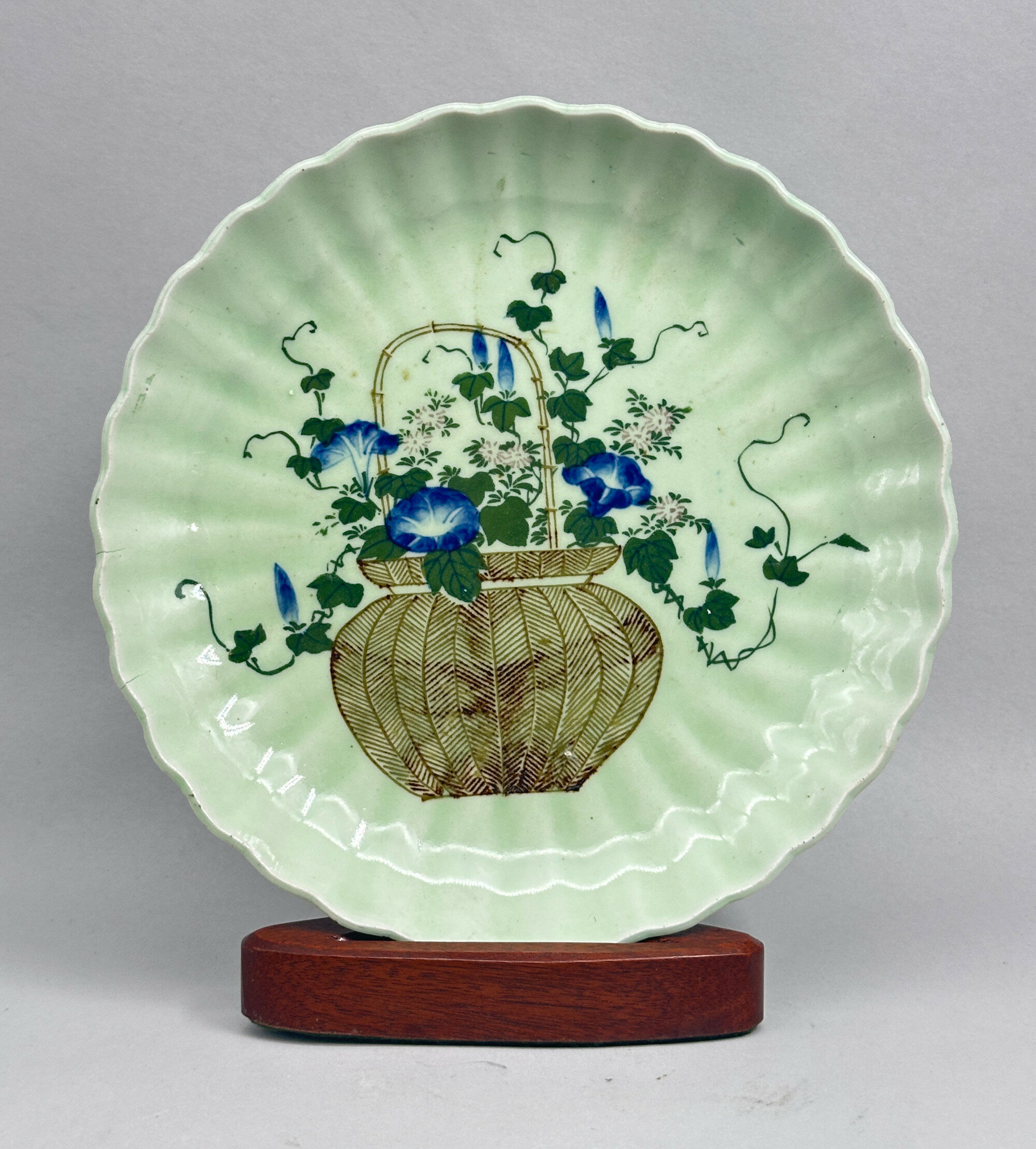
Japanese Celadon Dish decorated basket of flowers, circa 1900
Price: £45Celadon glazed wares with enamel decoration in fairly muted colours are a familiar product amongst the ceramics produced by Japanese potters at the end of the nineteenth century but examples of this type of dish are rather less commonly found. The basket of flowers is a regular decorative feature of Chinese ceramics, but given here a slightly different interpretation with the depiction of lotus, the emblem of summer. The mark probably imitates Chinese ‘commendation’ marks inscribed within the foot rim, another nod on the part of the Japanese potters towards their Chinese counterparts.
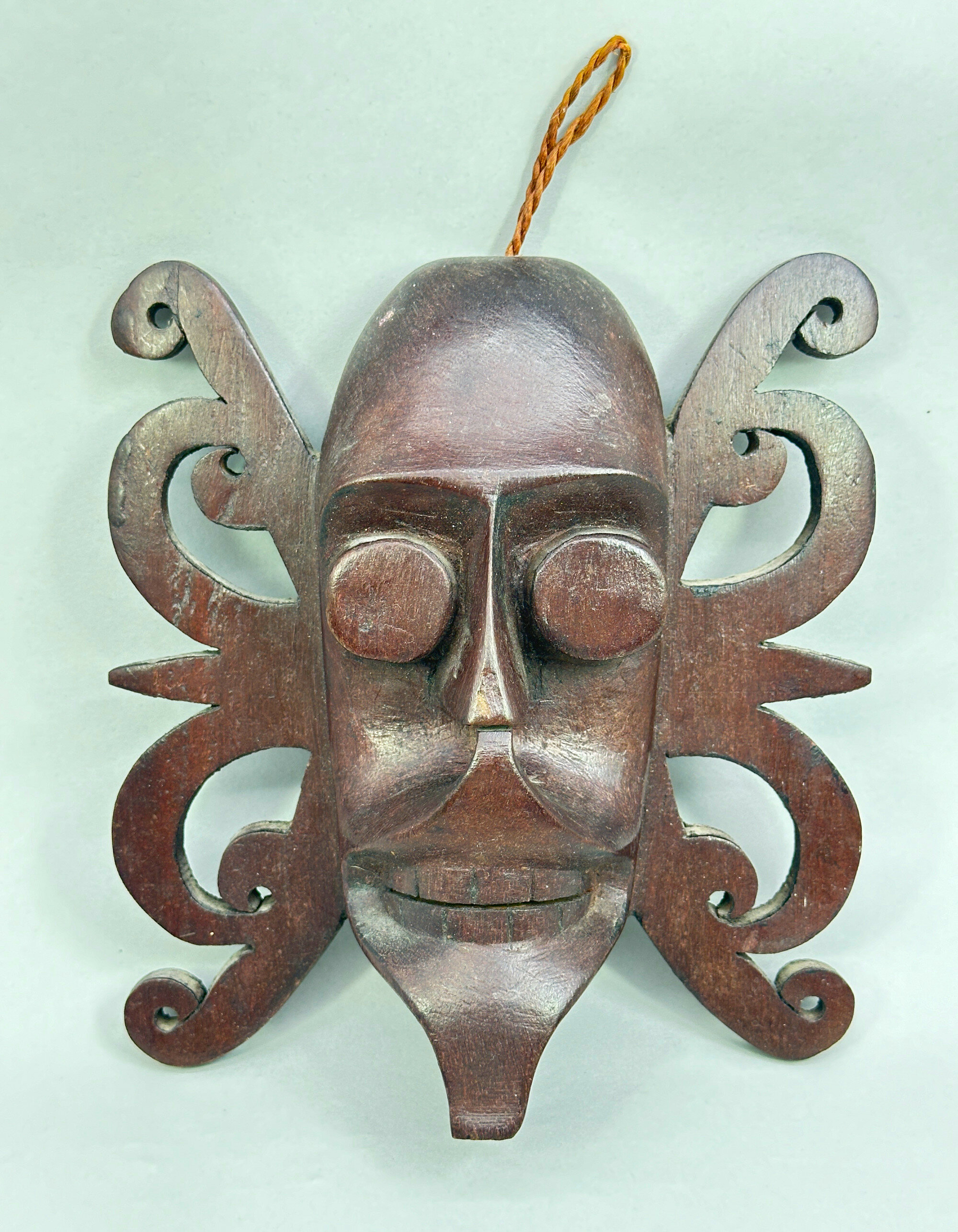
Wood Mask, Borneo late C20th
Price: £25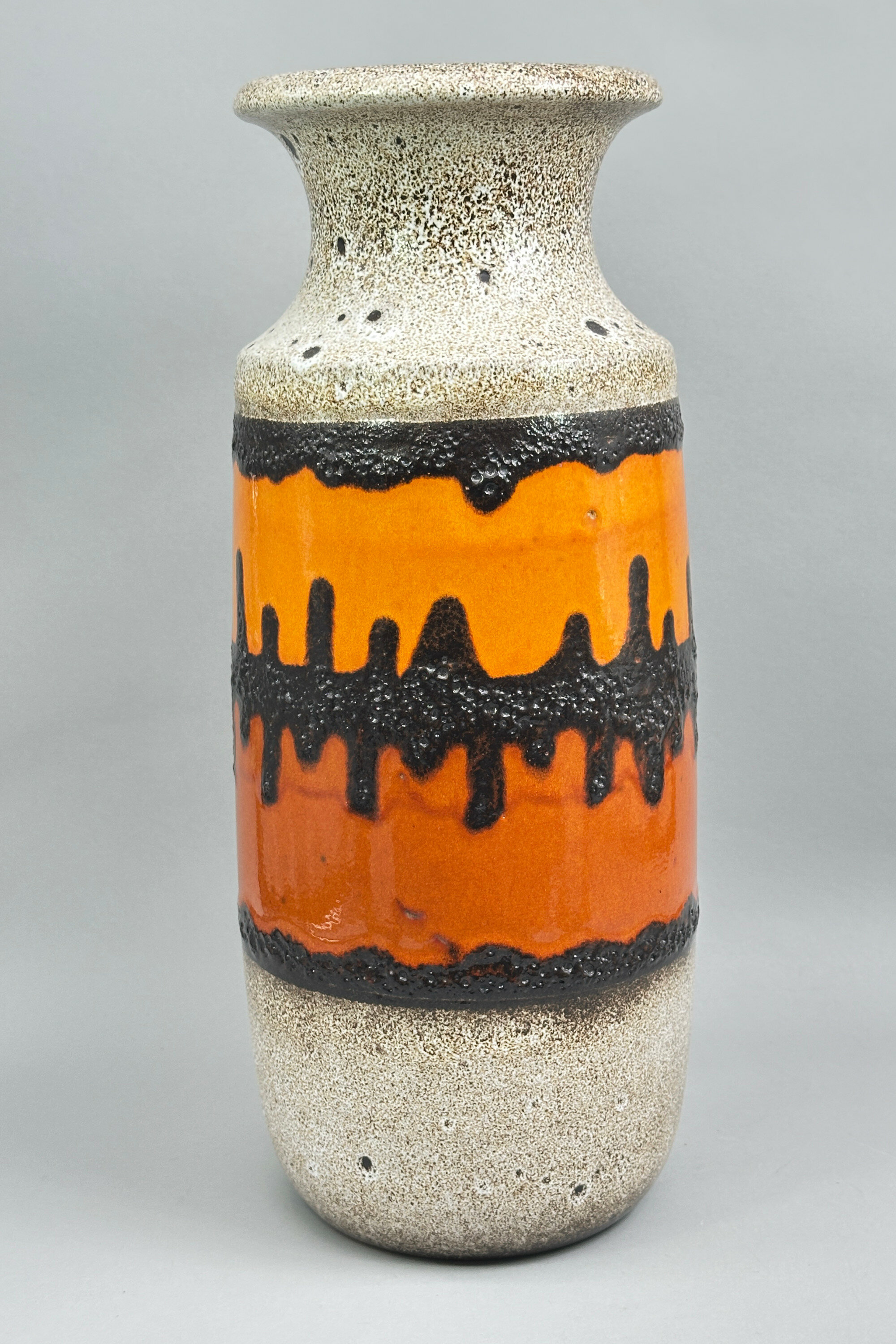
West German Studio Pottery Vase, Scheurich 259-41, 1970s
Price: £150……………………………………………………………………………………….....................................................................................… .
It took time for Germany to rebuild after the Second World War and it was not until 1949 that the country regained its national identity. The production of ceramics slowly revived and began to gain momentum in the 1950s eventually reaching a total of over one hundred companies and studio potteries. Some of the concerns produced a substantial output including Carstens, Bay, ES, and Dümler & Breiden but the most prolific of all was Scheurich. In 1927 Alois Scheurich established with a partner a company named ‘Scheurich and Greulich’ (S&G) which focused on producing low cost ceramic and glass items (see image 7). The success of this business provided the springboard for the creation of ‘Scheurich KG Keramikfabrik’ in 1954. While it commenced production rather later than some of its competitors it soon grew to overtake them and the glaze colourings for which it became best known were produced in the 1970s. Eventually the firm changed direction yet again and is now known for producing ceramic garden ornaments which have an international appeal.
Most of the Scheurich pieces are marked, nearly always with two sets of numbers ‘XXX-XX’ and the wording ‘W.GERMANY’, although there are variants. The firm’s name can appear in addition, as here, where we see as well ‘SCHEURICH KERAMIK’, and it is thought that this indicates a later dating to the 1970s/1980s. The first three numbers are the model number and the last two the height in centimetres, here ‘259-41’. ‘259’, as with nearly all the model numbers, was made with a wide variety of glaze colourings and effects. Equally, similar colours and patterns were used on different models. The shape is one of the firm’s most successful. The cylindrical body narrows gently towards the base and has a well defined shoulder with a concave neck and an inturning rim. The bright orange at the centre is bordered with and divided by irregular black ‘crusty effect’ bands. These are an excellent example of the apocryphally named ‘lava’ glaze for which Scheurich was so well known. Either side of this are two sections of grey speckle glaze which complete the whole. The vase is glazed brown inside and at the base which has the factory markings in raised lettering. Similar glaze combinations can be found on other pieces but the result is rarely as successful as here and the colour scheme used enhances the classic simplicity of the shape, loosely derived from a Chinese original.
This is a vase to appeal to decorators and collectors alike and is very much a ‘one off’ example of these popular wares standing rather apart from its many companions.
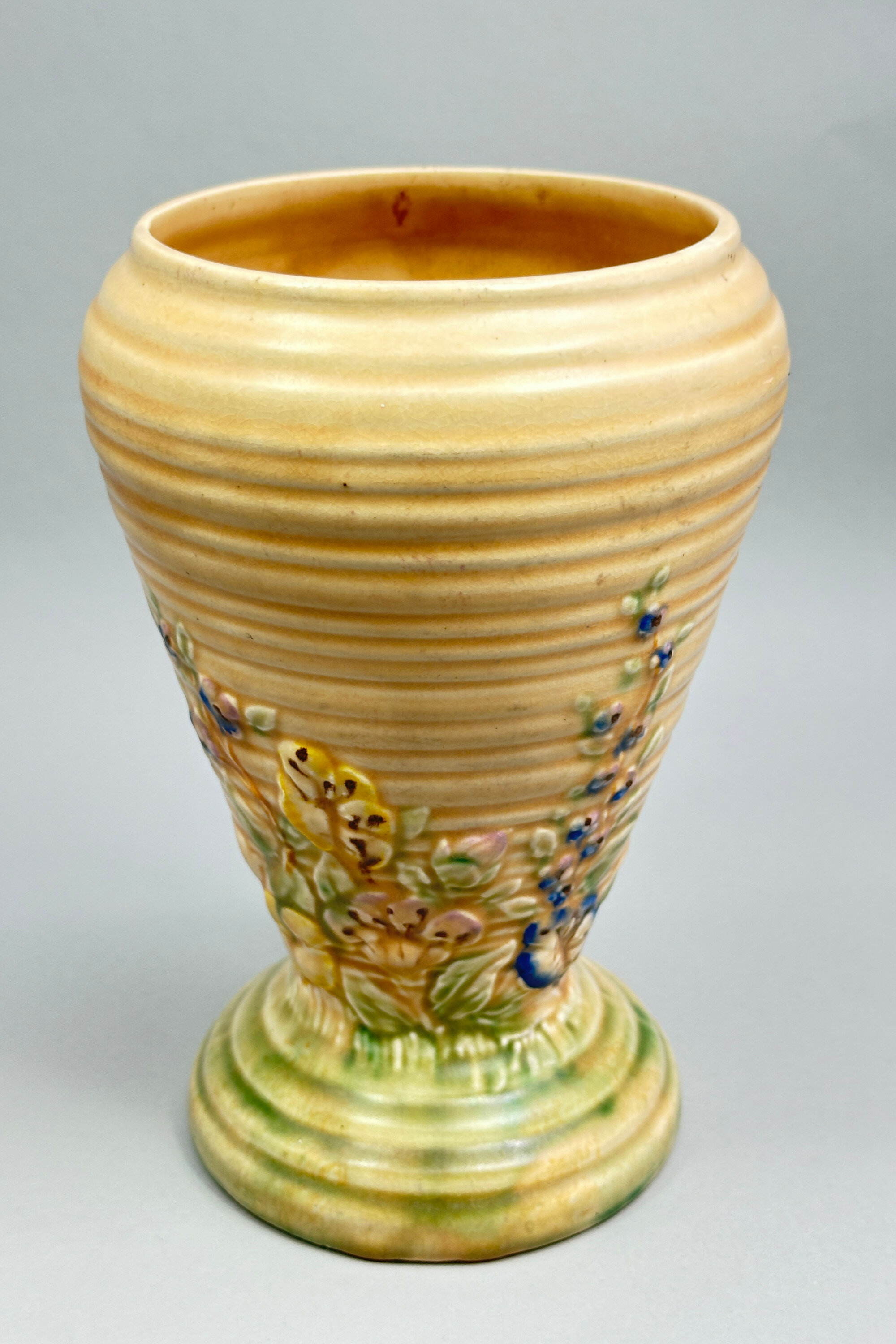
Art Deco Vase, Springtime, Price Brothers, Staffordshire, 1930s
Estimate: £20 – 30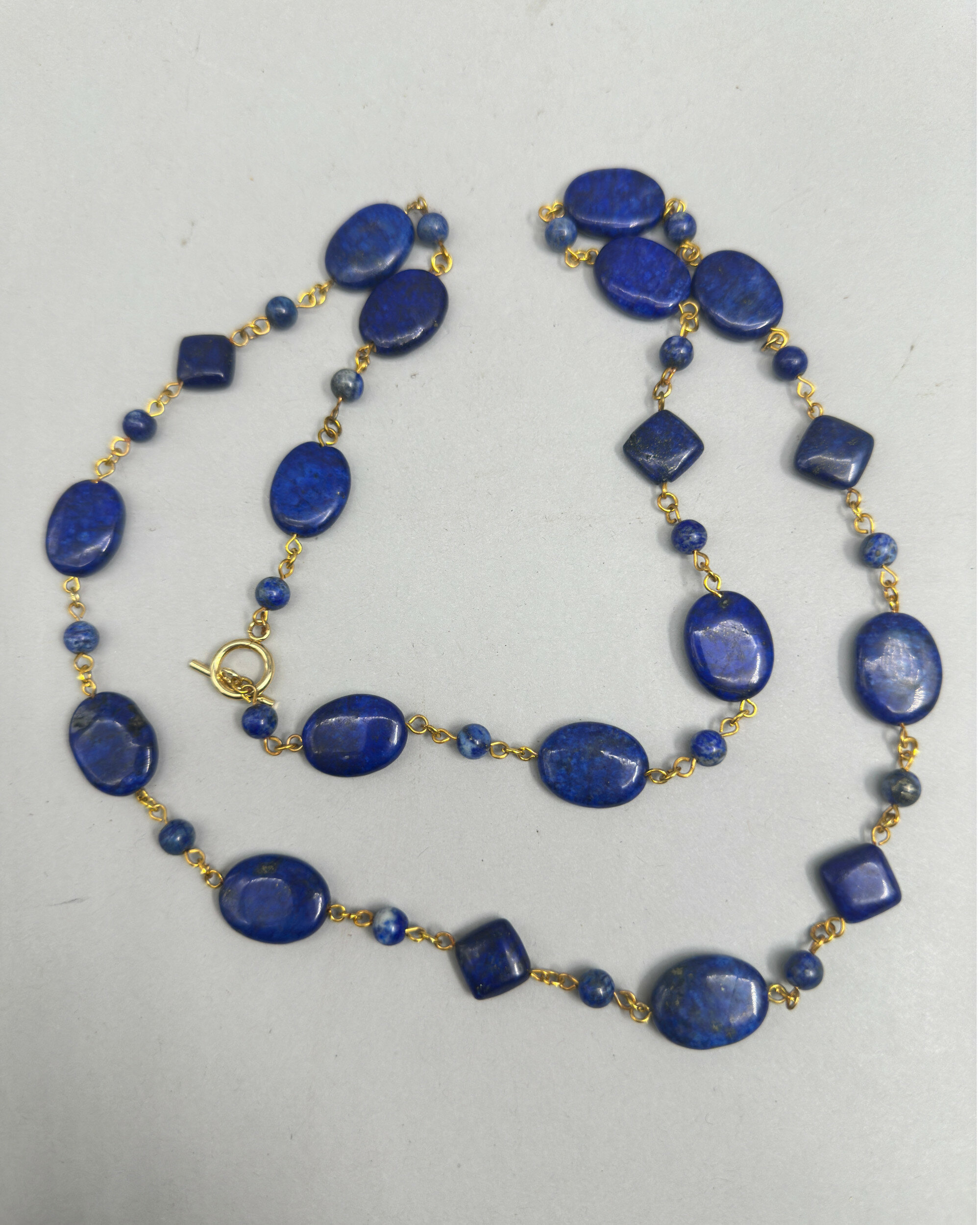
Long lapis lazuli bead necklace c1980
Price: £30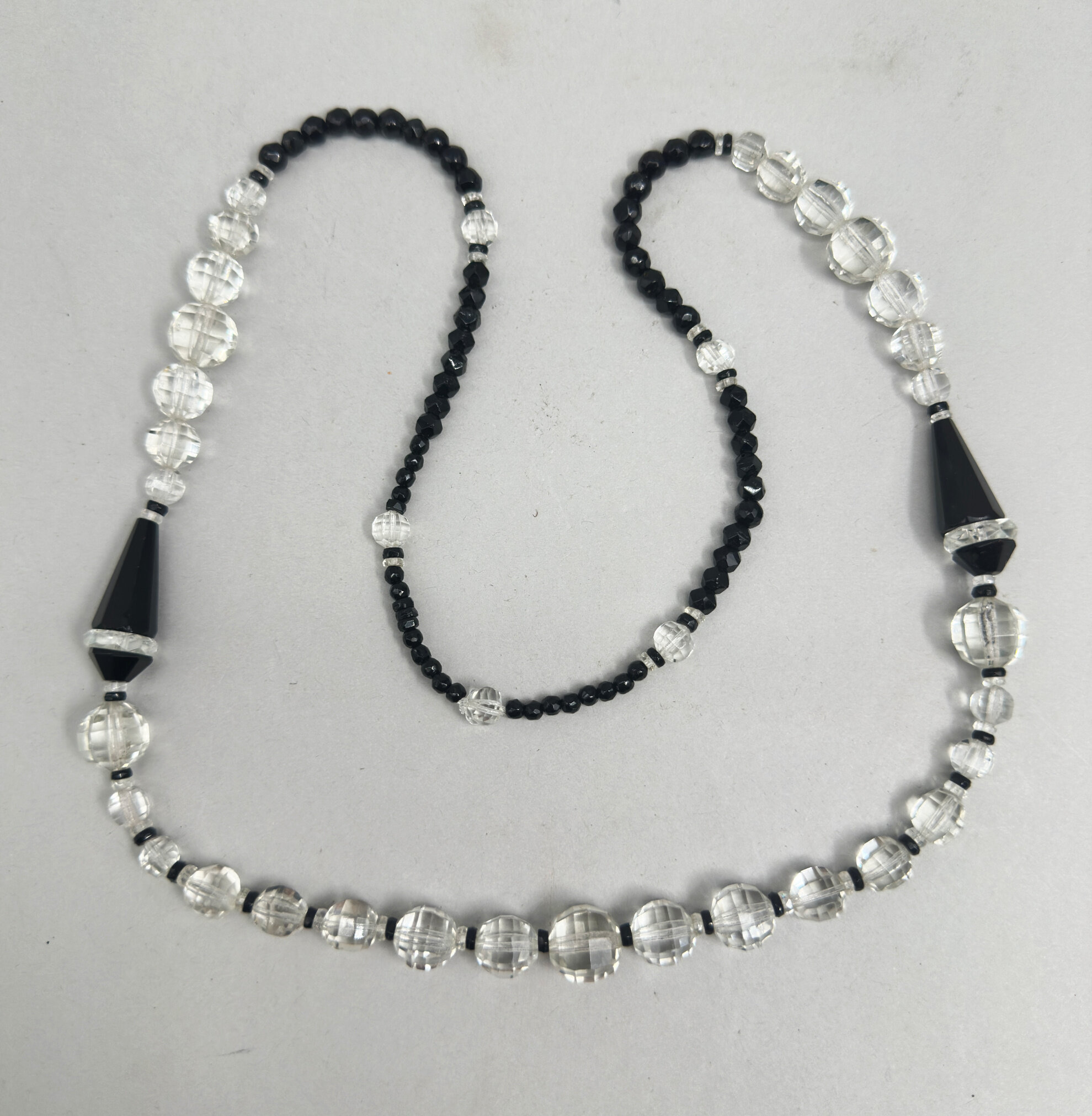
Outstanding Art Deco necklace with French jet and rock crystal beads c1920
Price: £175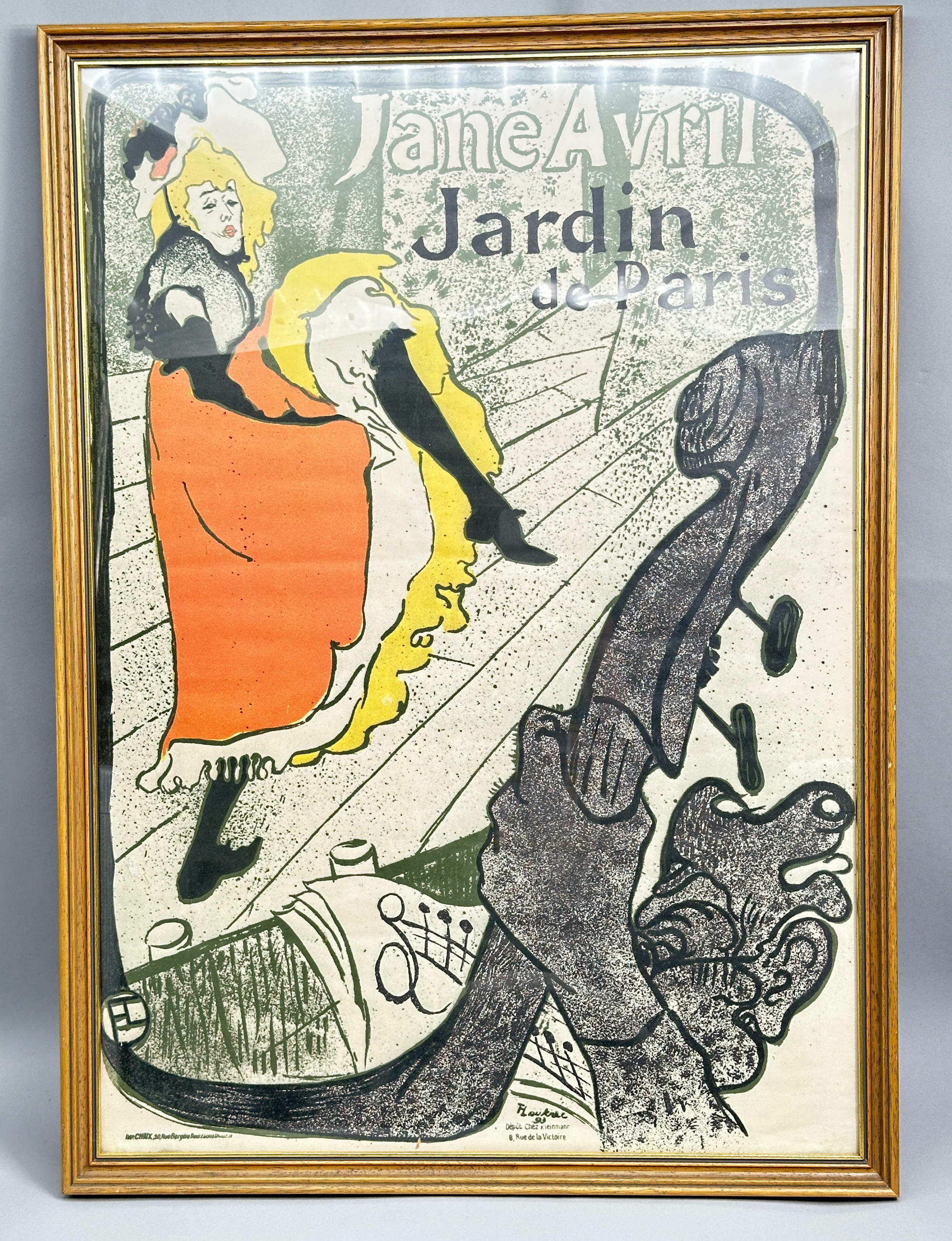
Reproduction Toulouse Lautrec poster, Jane Avril, probably mid C20th in later frame
Price: £95Reproductions were soon produced, one of the earliest being a bookplate, number 110, in the 1898 publication ‘Les Maîtres de l'affiche’ edited by Jules Chéret, which played a considerable part in promoting the poster as a work of art. Most of the copies produced are smaller and of variable print quality but this version is very true to the original and is not a current reprint. It employs a printing technique known as ‘giclée’, a French term meaning ‘sprayed’, referring to the operation of a printer which uses small spraying devices that can match colours and apply ink with precision, producing high quality reproductions of original art (see images 4 and 6). When viewed out of the frame, which is doubtless later, its age and the accuracy of the colours can be clearly seen suggesting a much earlier dating than most of the versions on offer (few of which are full size) probably to the mid twentieth century. One of Lautrec’s most famous images can be enjoyed, then, to the full in a contemporary domestic setting.
[The telephone number on the address label at the reverse, employing the exchange code for Cowes, Isle of Wight (0983) implies that the frame was made around the time of or before ‘PhONEday’ in April 1995.]
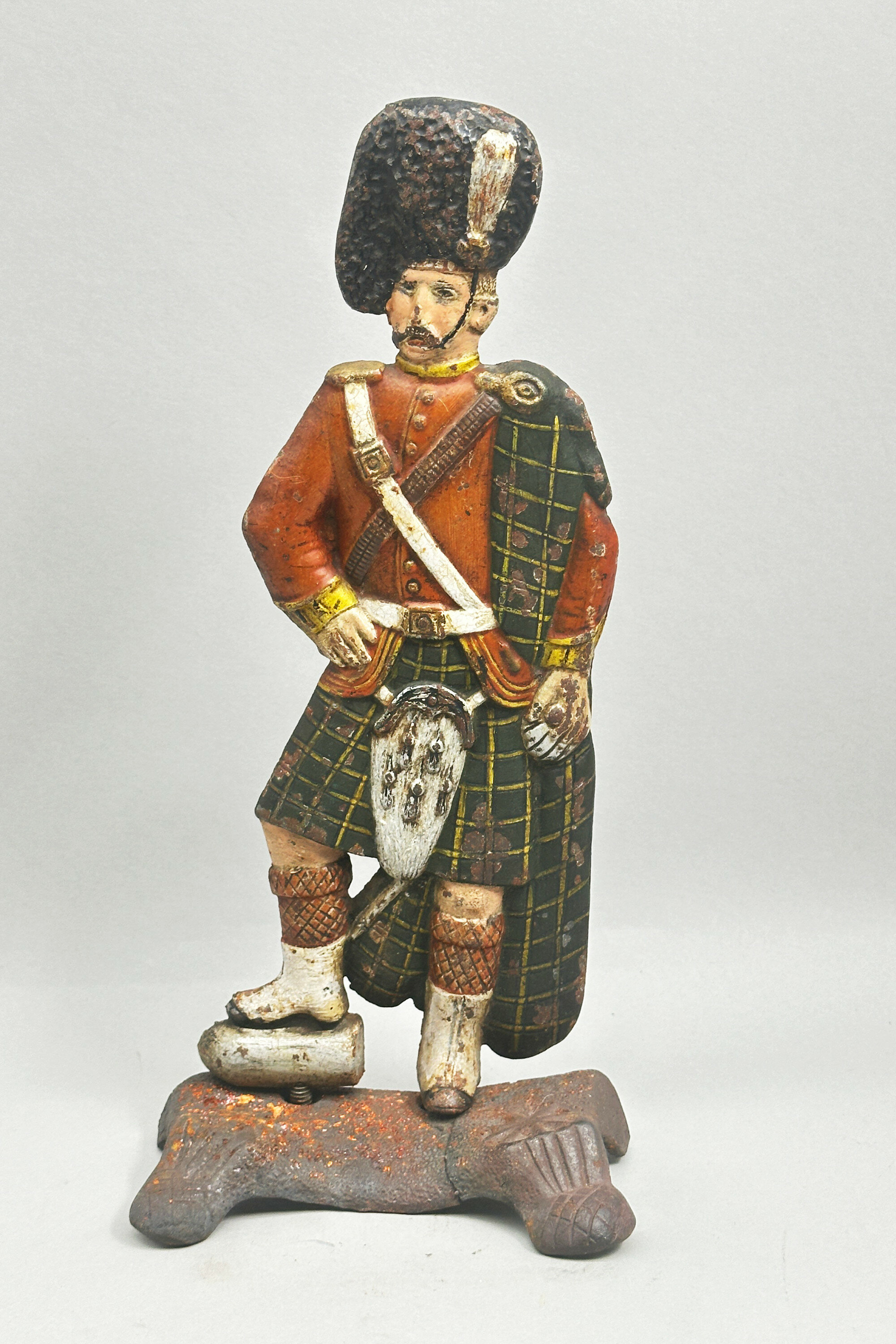
Victorian Black Watch iron doorstop c1890
Price: £25
Pair of Beige Opaline Glass Vases, enamelled decoration, probably French late C19th
Price: £75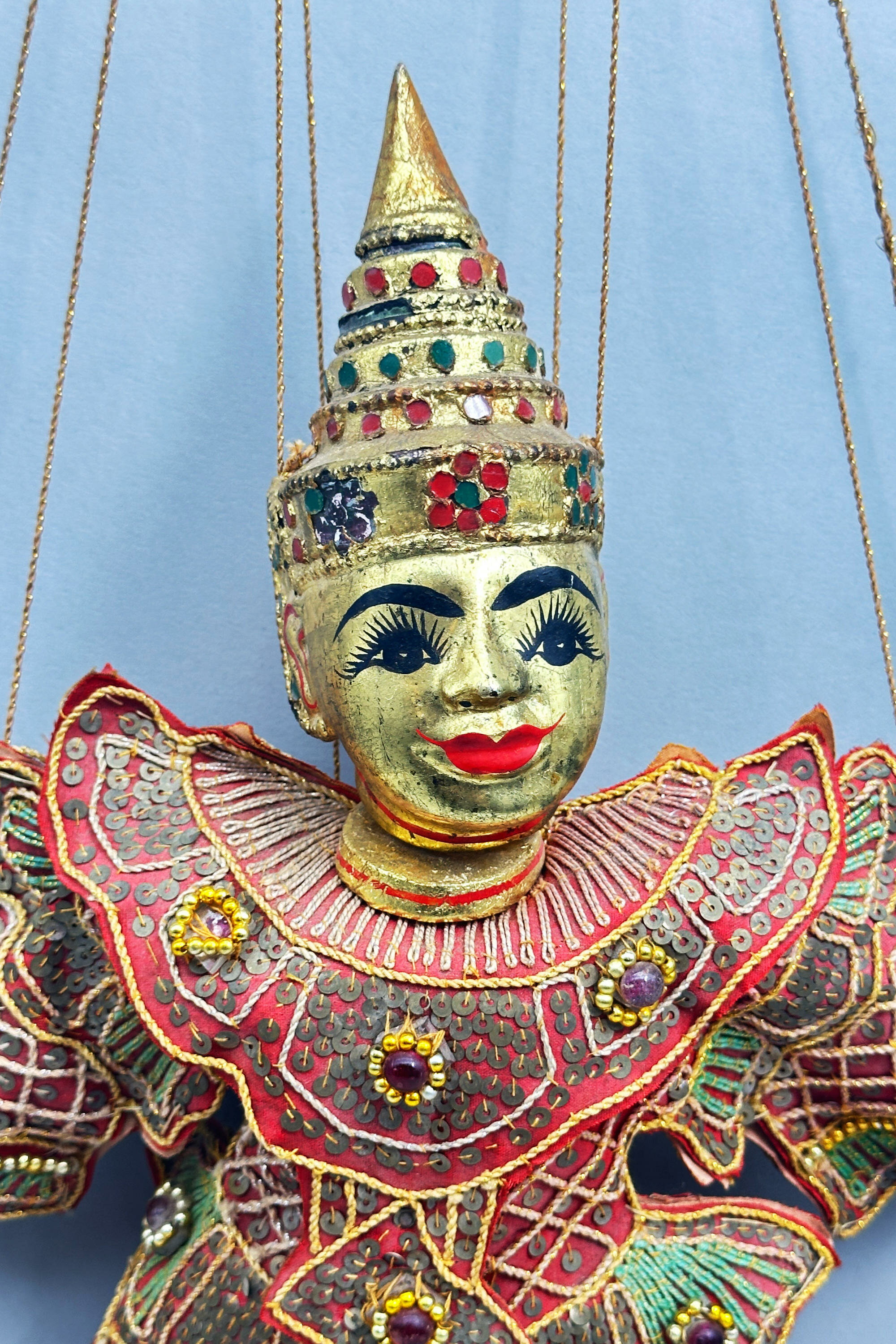
Marionette Figure of a Prince, probably Burmese mid C20th
Price: £45The style of the dress suggests Burma which has a tradition of marionette puppetry (marionettes are a specific form of puppet where the figure is controlled by strings or rods) dating back to the late eighteenth century and still popular today with visitors to the country, now called Myanmar. Termed ‘Yoke thé’, the Burmese marionette tradition allowed political commentary under the guise of of an entertainment display. The standard ‘troupe’ comprised twenty seven characters, both animal and human, and this male figure is probably the ‘King’ (‘Mintayar gyi’). Dating is probably to the mid C20th and a little earlier than the female marionette figure also included in this sale. This figure is rather more majestic as befits his regal status.

Vintage black crocodile Handbag, Italian, 1980s
Price: £150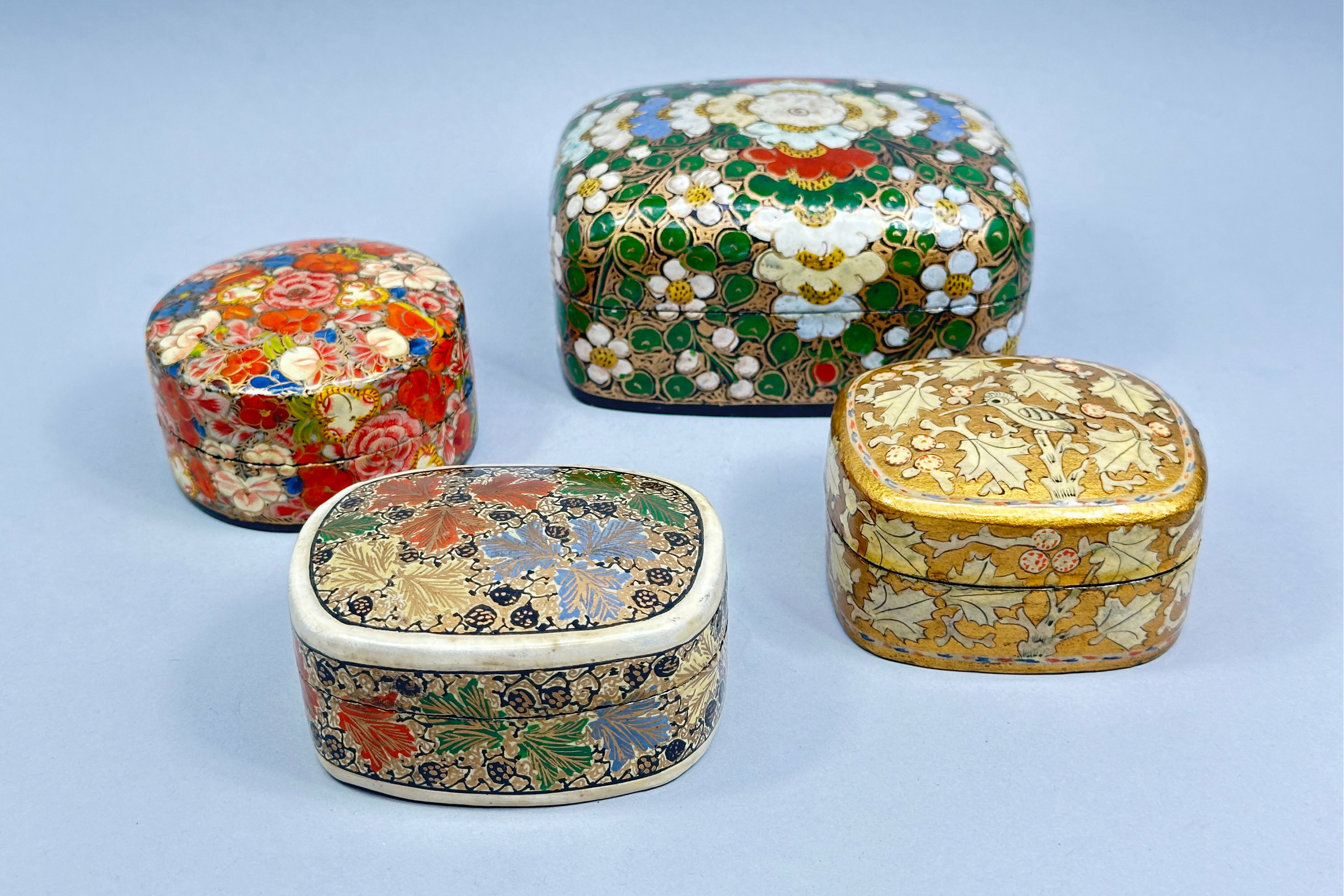
Four Papier-mâché Trinket Boxes, Kashmir, mid C20th
Price: £35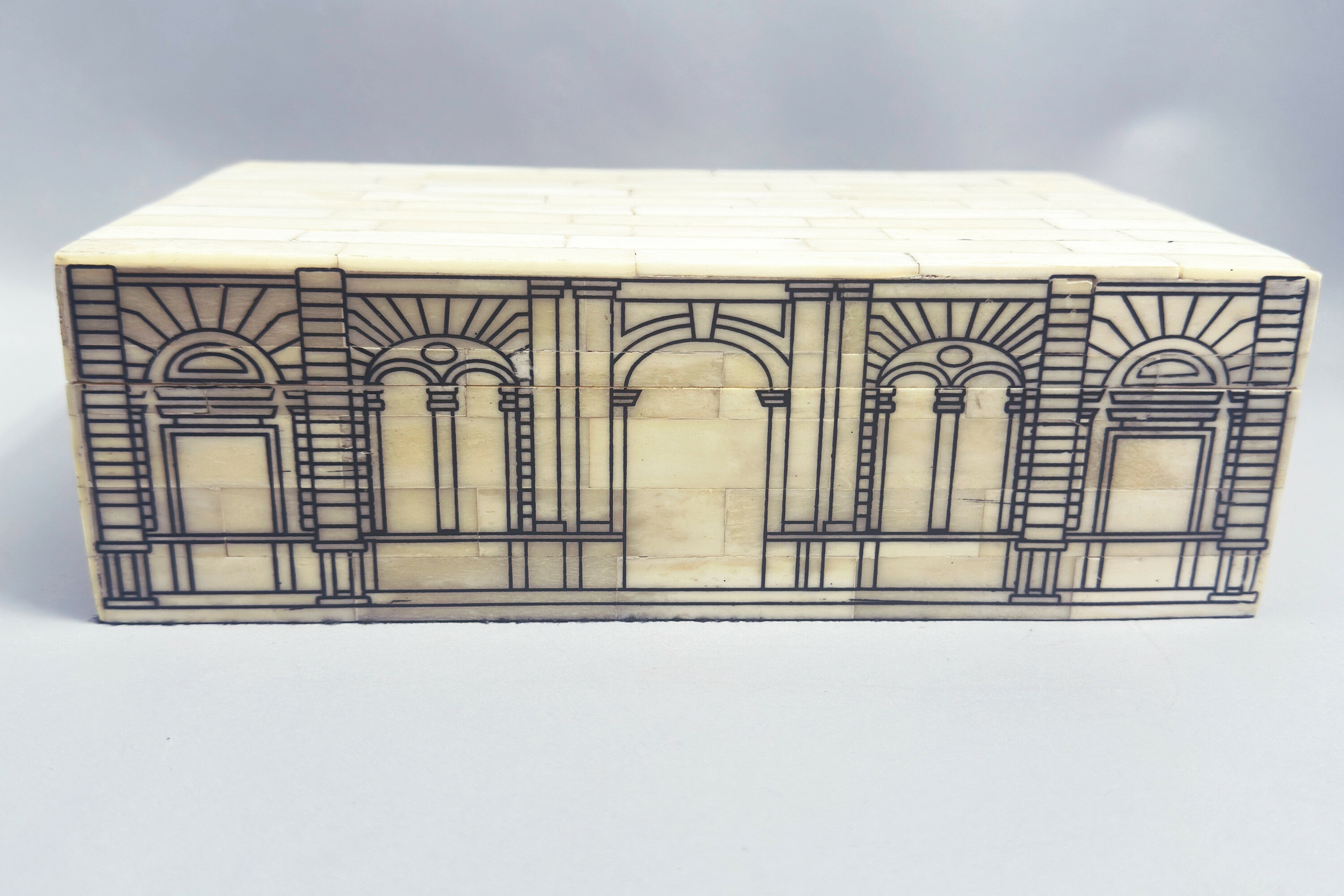
Bone parquetry box decorated in the manner of Fornasetti, Venetian, mid C20th
Price: £85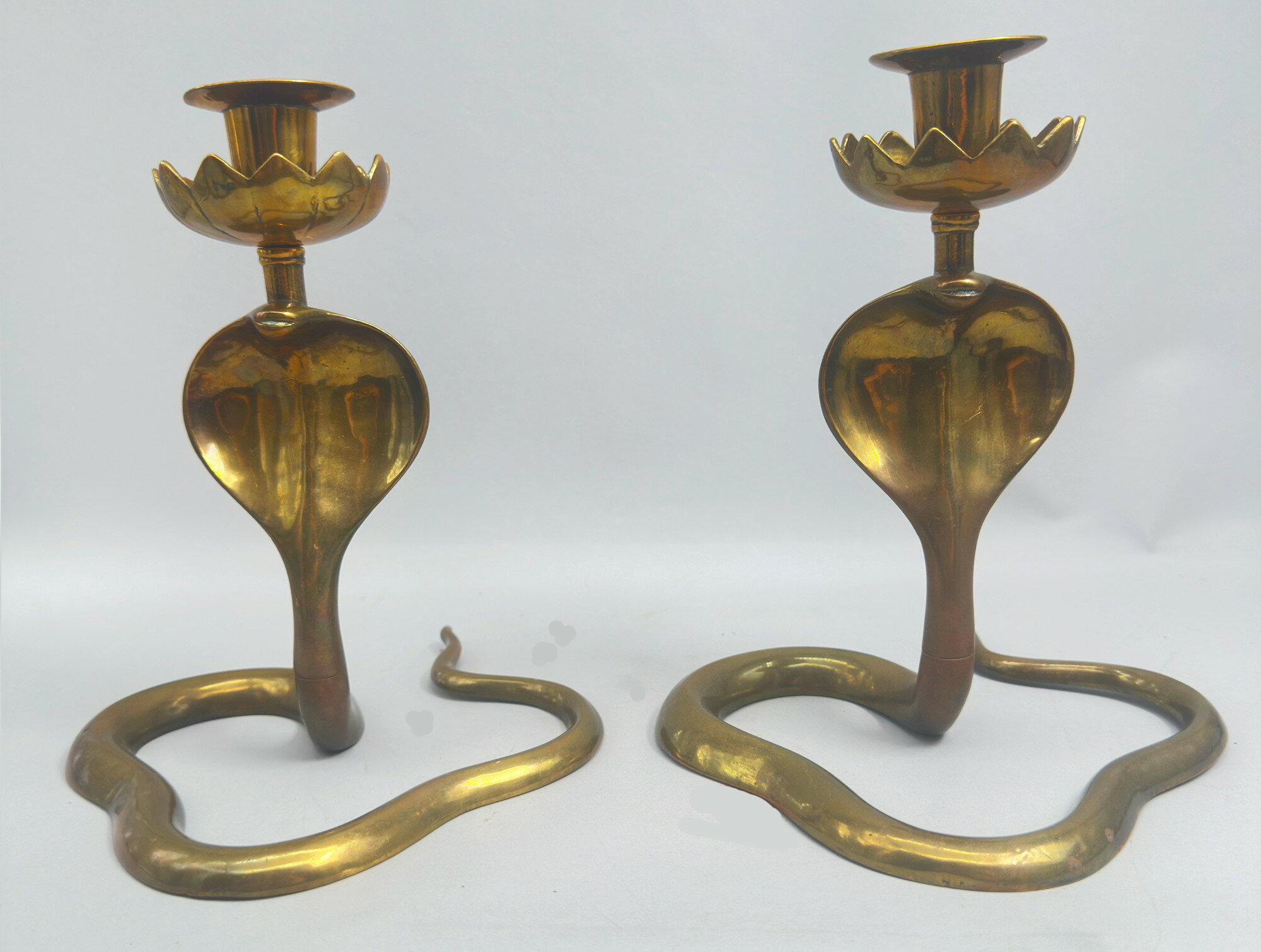
Fine quality pair of Brass Cobra Candlesticks, Indian first half C20th
Price: £95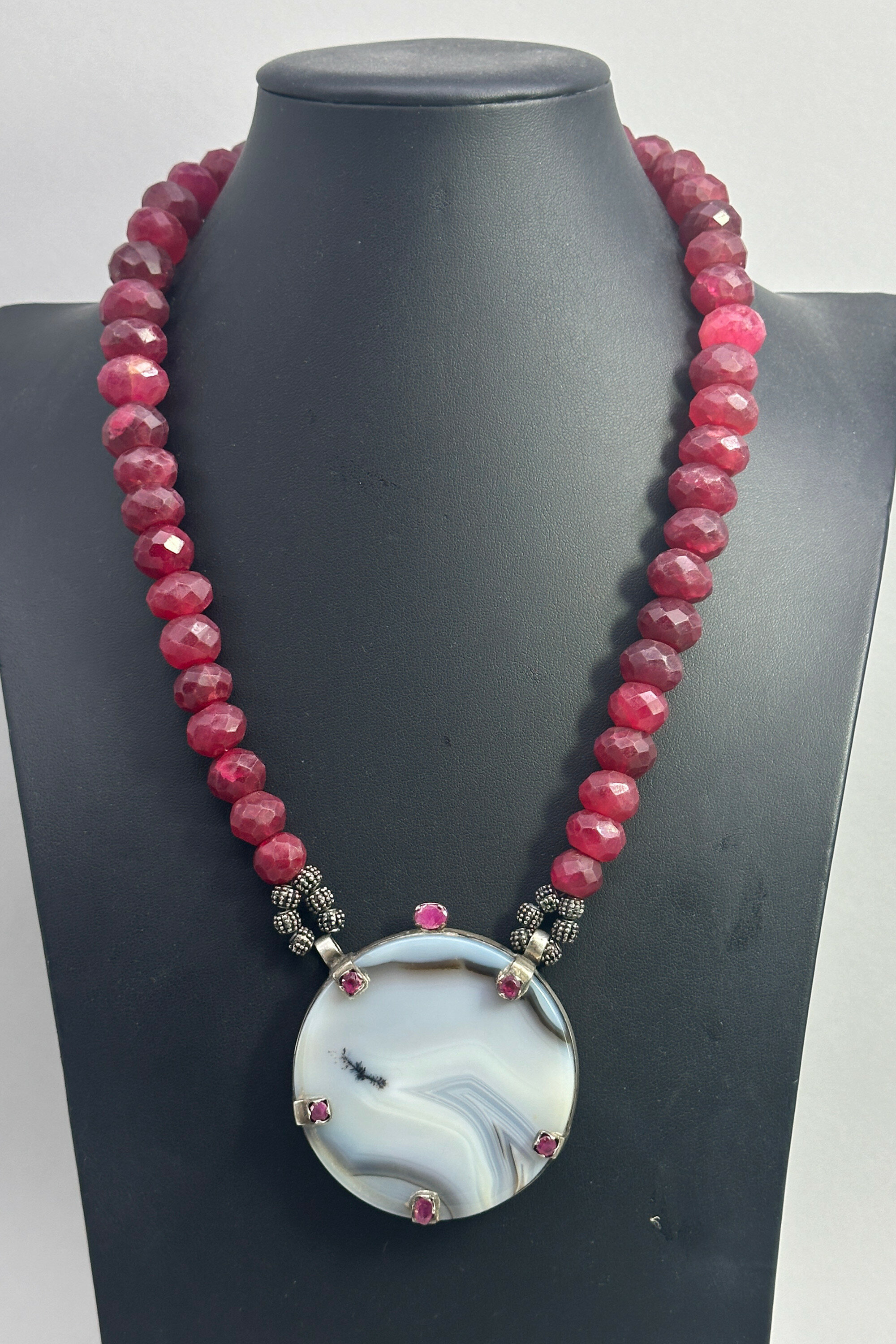
Necklace with massive Agate Disc strung set with facetted ruby beads, India, c1940
Price: £325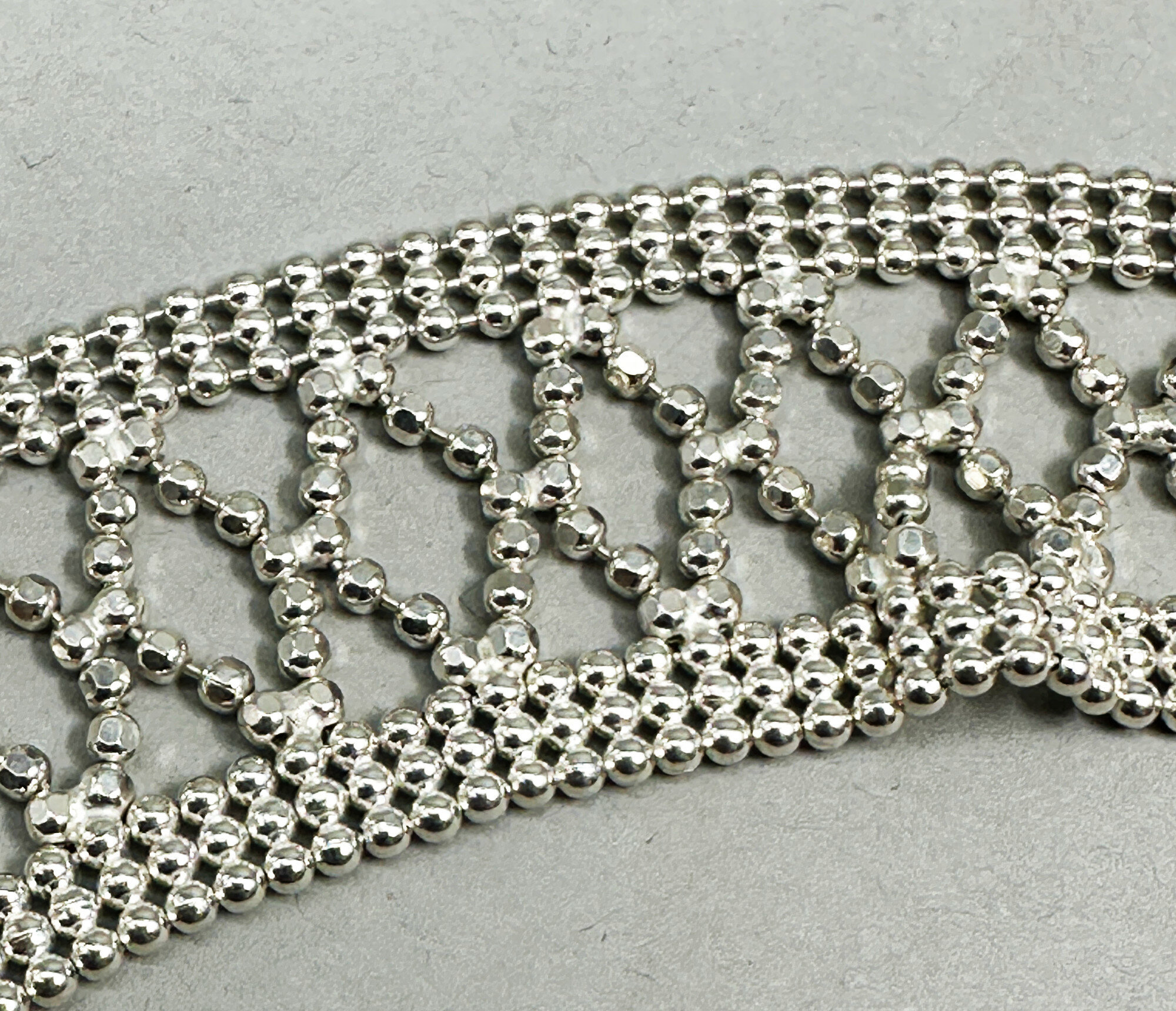
Diamond cut millegrain silver bracelet, 20th century
Price: £45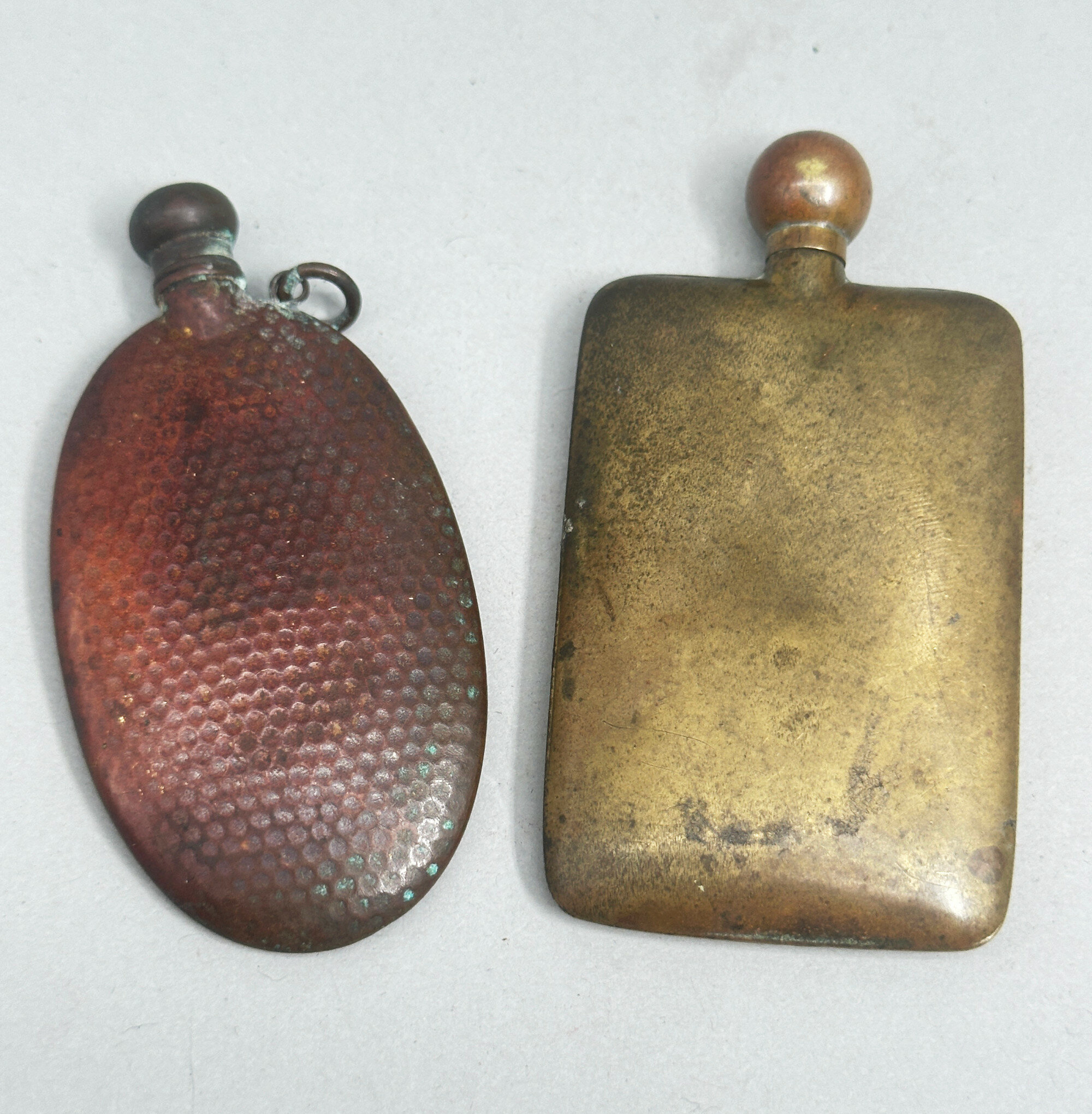
Two small metal perfume Flasks and Stoppers, 1920s
Price: £35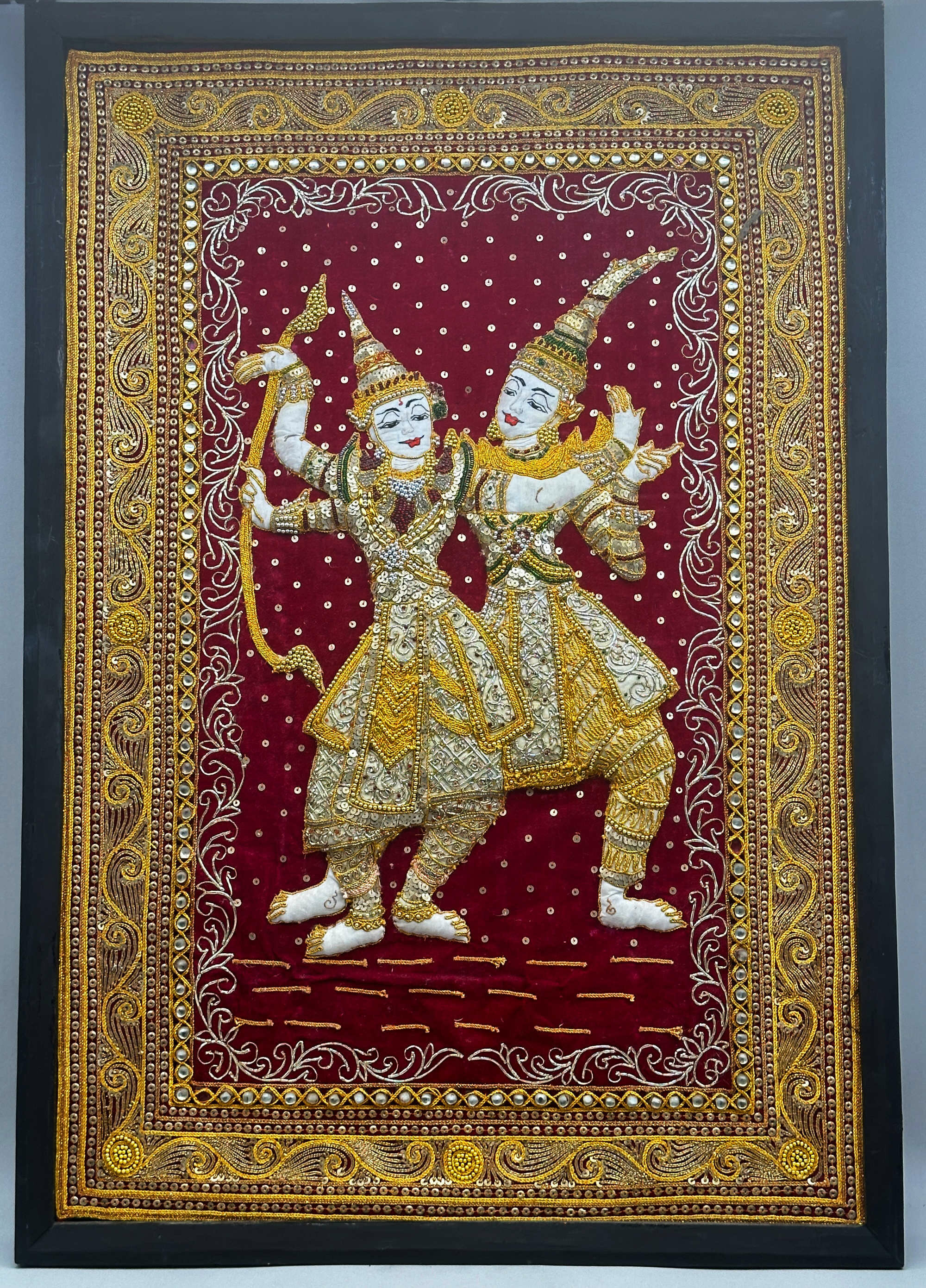
Large Burmese Textile with two dancing figures, probably second half C20th
Price: £110The distinctive style of embroidery and applied work here is typical of Burmese work known as ‘Kalaga’ which means ‘curtain’ in Burmese and is used to refer to heavily embroidered appliqué tapestry sewn with a technique called ‘shwe gyi do’. First produced around 150 years ago, Kalagas are generally linen, silk, cotton or velvet background fabrics embellished with sequins, embroidery, beads, coloured stones, tiny pearls, coral, braids and metal threads, the choice of materials depending in part on the client’s budget. Cotton padding was used to produce the ‘3D’ effect seen here and on many other examples of the work. The elaborate decoration meant that some of the larger pieces could take many months to produce which is likely to have been the case here. Dating is difficult and a mid C20th attribution here is probably sensible but an earlier period of manufacture is quite possible. The hanging has been recently mounted on board and fitted with a simple frame making it ready for display in a contemporary interior.
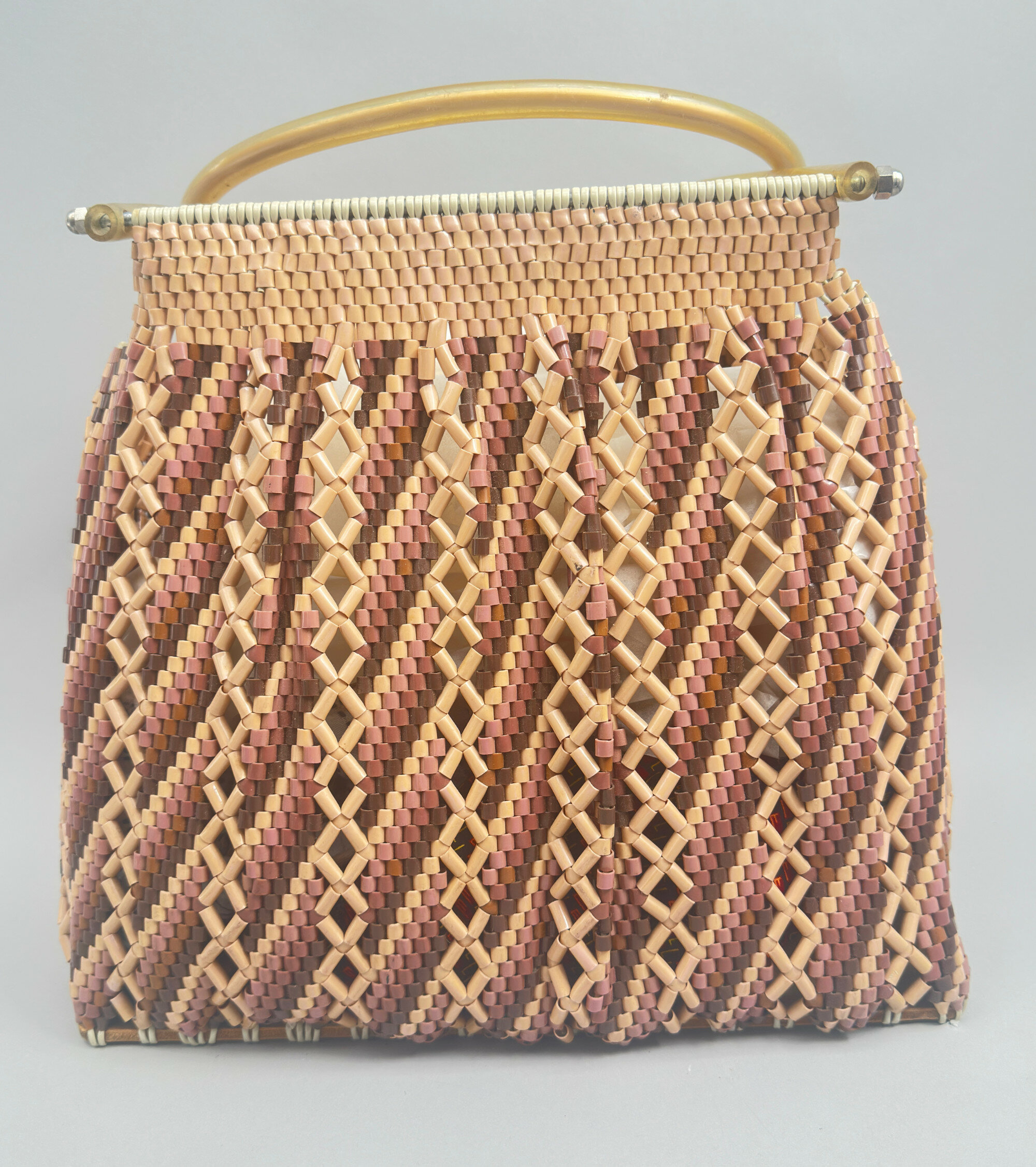
Sack form plastic beaded bag, English, 1950s
Price: £65
Japanese Fukagawa Jug and Stand decorated lotus, signed, circa 1900
Price: £45The Fukagawa kilns produced the best quality Imari items made in Japan in the late nineteenth century for export to the West. Their history starts with Ezaiemon Fukagawa who in 1856 became head of his family's porcelain business and in 1875 founded Koransha (The Company of the Scented Orchid) in Arita, Japan, to produce tableware for export. In 1894 the modern Fukagawa company was founded by Chuji Fukagawa, with the Fukagawa trade mark of Mount Fuji and a stream, as its trade mark. Dating of these pieces is therefore towards the end of the Meiji period (1868 - 1912) probably around 1900. While the decoration is similar to that found on other Fukagawa pieces there are few, if any parallels, and tea ware pieces by the firm are not very often seen.
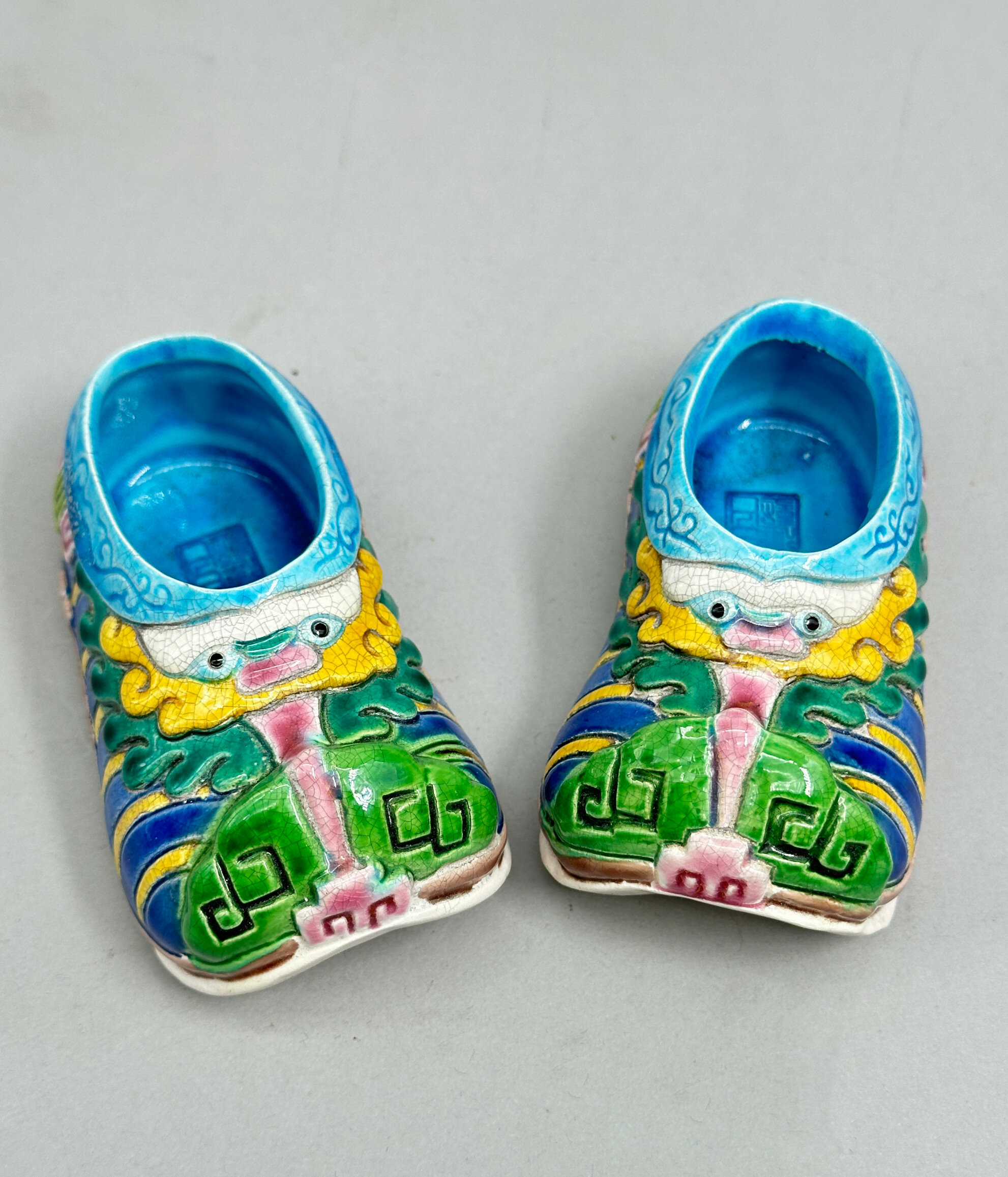
Pair of Chinese Ceramic Shoes, seal mark and with fitted box, C20th
Price: £55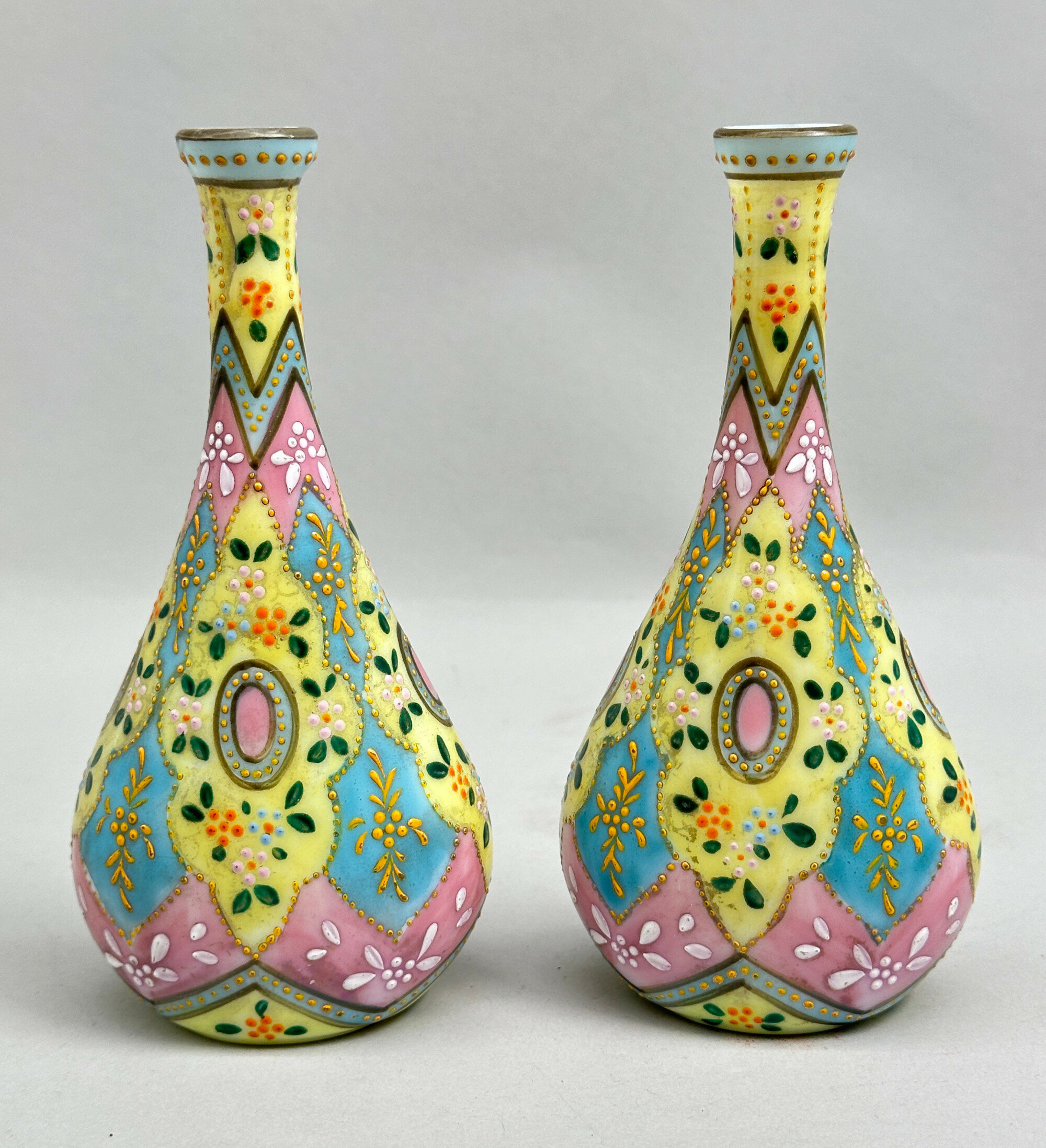
Pair of Bohemian Harrach Glass Vases, Morocco pattern, second half C19th
Price: £95The Harrach glassworks is named after Alois Raimund von Harrach (Count Harrach), on whose estate it was founded in Bohemia, in the early eighteenth century. Managed at first by one Elias Muller, the firm traded under a variety of names becoming known as Harrach in the nineteenth century and Harrachov, the name eventually given to the town where the factory was situated, in the twentieth. These opulent vases were a popular part of its range in the nineteenth century, the pattern being produced in a variety of similar shapes and always as shelf ornament pieces. The decoration here is particularly lavish with an attractive use of colour and has survived in excellent condition making these a desirable addition for collectors of Bohemian glass or admirers of nineteenth century glass style generally.
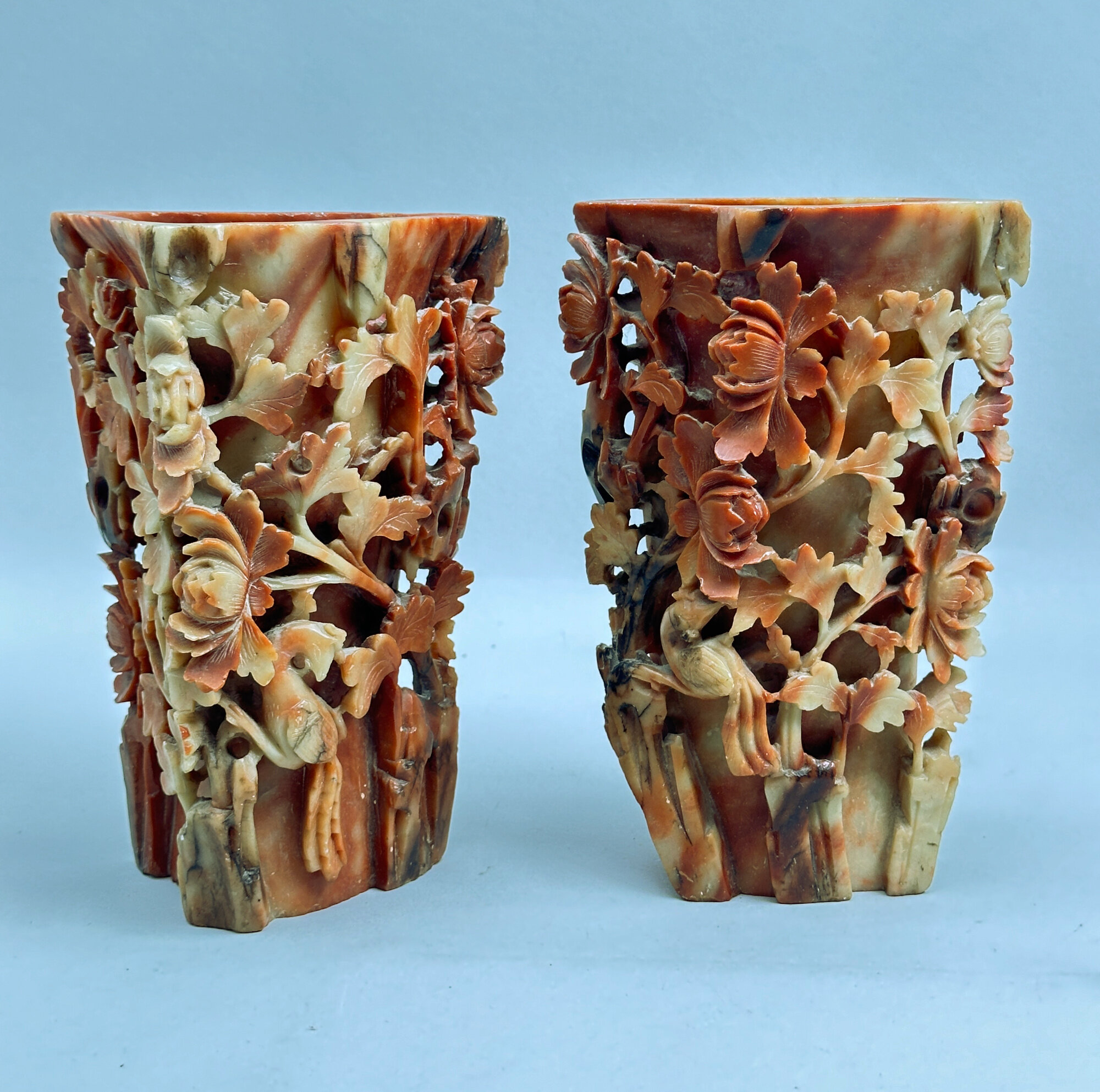
An unusual Pair of Chinese carved Soapstone Vases, circa 1900
Price: £110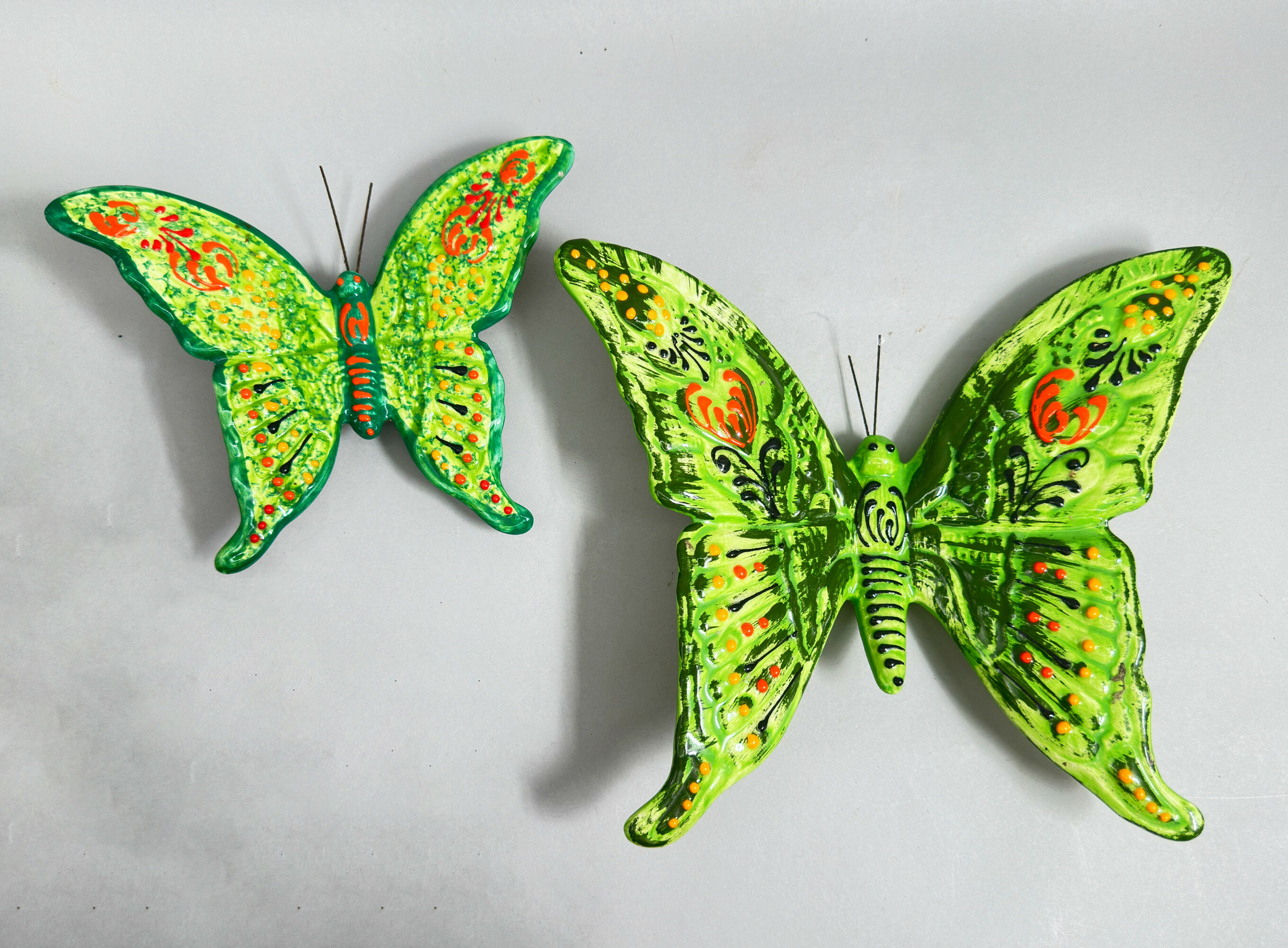
Pair of Ceramic Wall Hanging Plaques, Butterflies, probably continental 1960s
Price: £40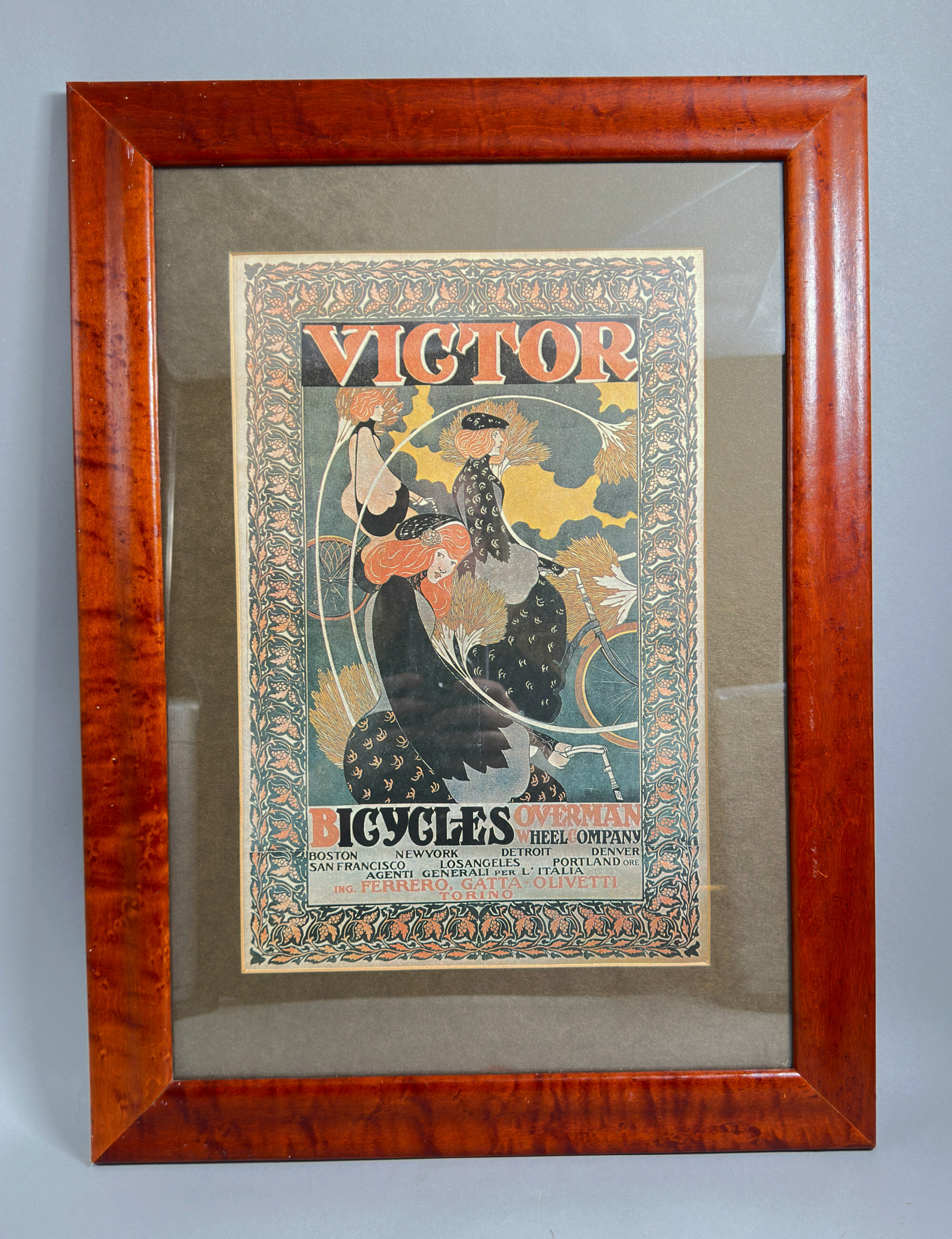
Framed poster for Victor Bicycles, Overman Wheel Company, C20th
Price: £55Will H. Bradley (1868-1962) was an American artist and illustrator whose work enjoyed enormous popularity in the late nineteenth and early twentieth centuries, indeed he became America’s highest paid artist. Some of his most elaborate and original poster and advertisement designs were produced in the last years of the nineteenth century and he was an apt choice for Albert Overman’s then thriving business. His style was quintessentially Art Nouveau and is often compared to that of the English artist, Aubrey Beardsley, indeed he was sometimes dubbed as the ‘American Beardsley'. This poster design for Overman has been much copied and reproduced over the years with original examples residing in museum collections. The dating of this particular printing is not wholly certain; the reproduction is certainly way superior to that of more modern versions and the accompanying frame also indicates some age, perhaps to the 1960s or through to the 1980s. We have, then, both an elegant decorative item and an excellent addition to a collection important poster art.
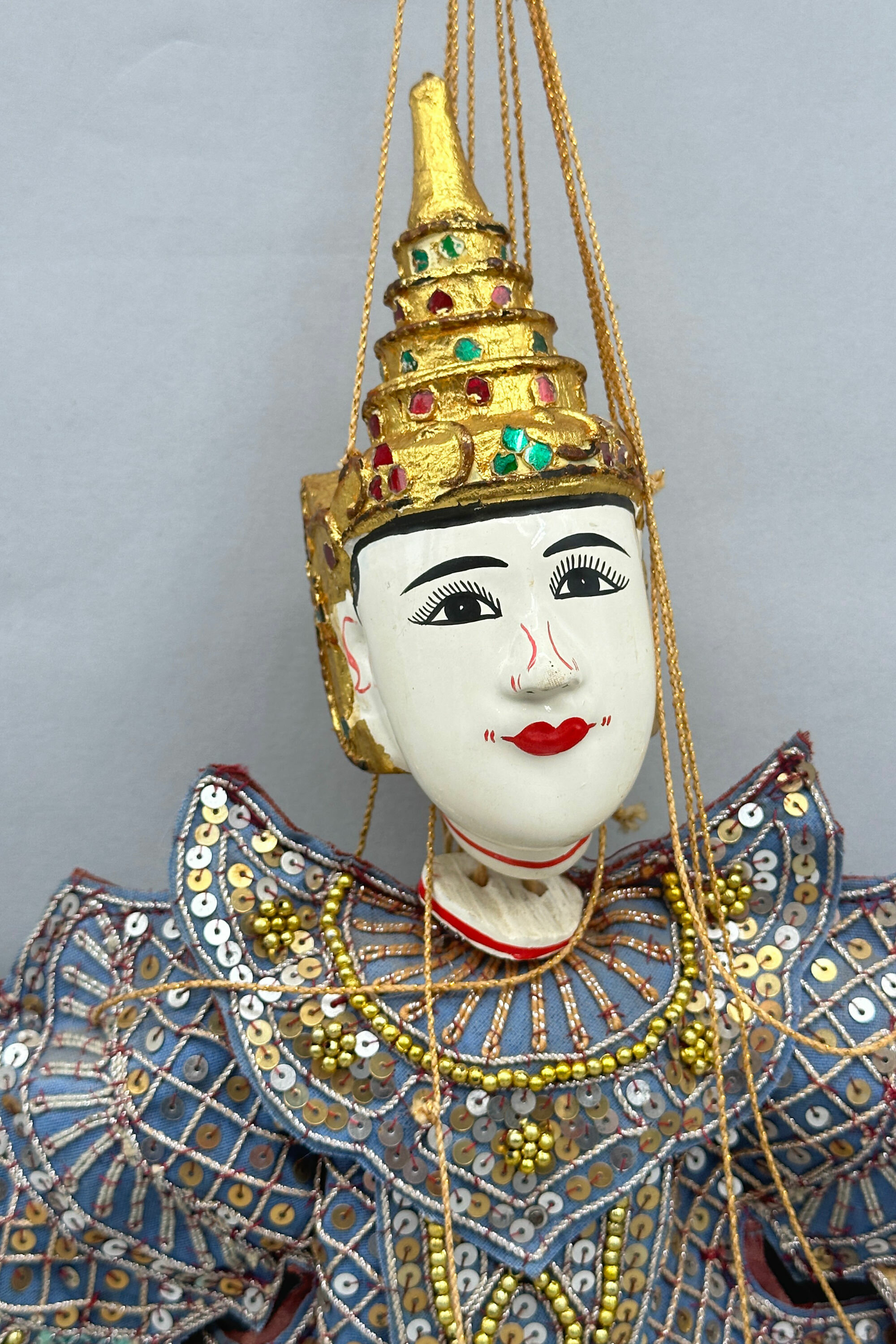
Marionette Puppet of a Dancing Lady or Princess, probably Burmese late C20th
Price: £45The style of the dress suggests Burmese work and very similar fabric decoration can be seen in the cloth wall hangings also included in this sale. Burma has a tradition of marionette puppetry (marionettes are a specific form of puppet where the figure is controlled by strings or rods) which dates back to the late eighteenth century and is still popular today with visitors to the country, now called Myanmar. Termed ‘Yoke thé’, the Burmese marionette tradition allowed political commentary under the guise of of an entertainment display. The standard ‘troupe’ comprised twenty seven characters, both animal and human, and this lady figure is probably the ‘princess’ (‘Minthami’). She is a fine example of the genre and probably dates to the 1990s when General Khin Nyunt of the ruling junta lent official support to marionette actors and troupes in an attempt to revive a tradition which had fallen somewhat into decline.
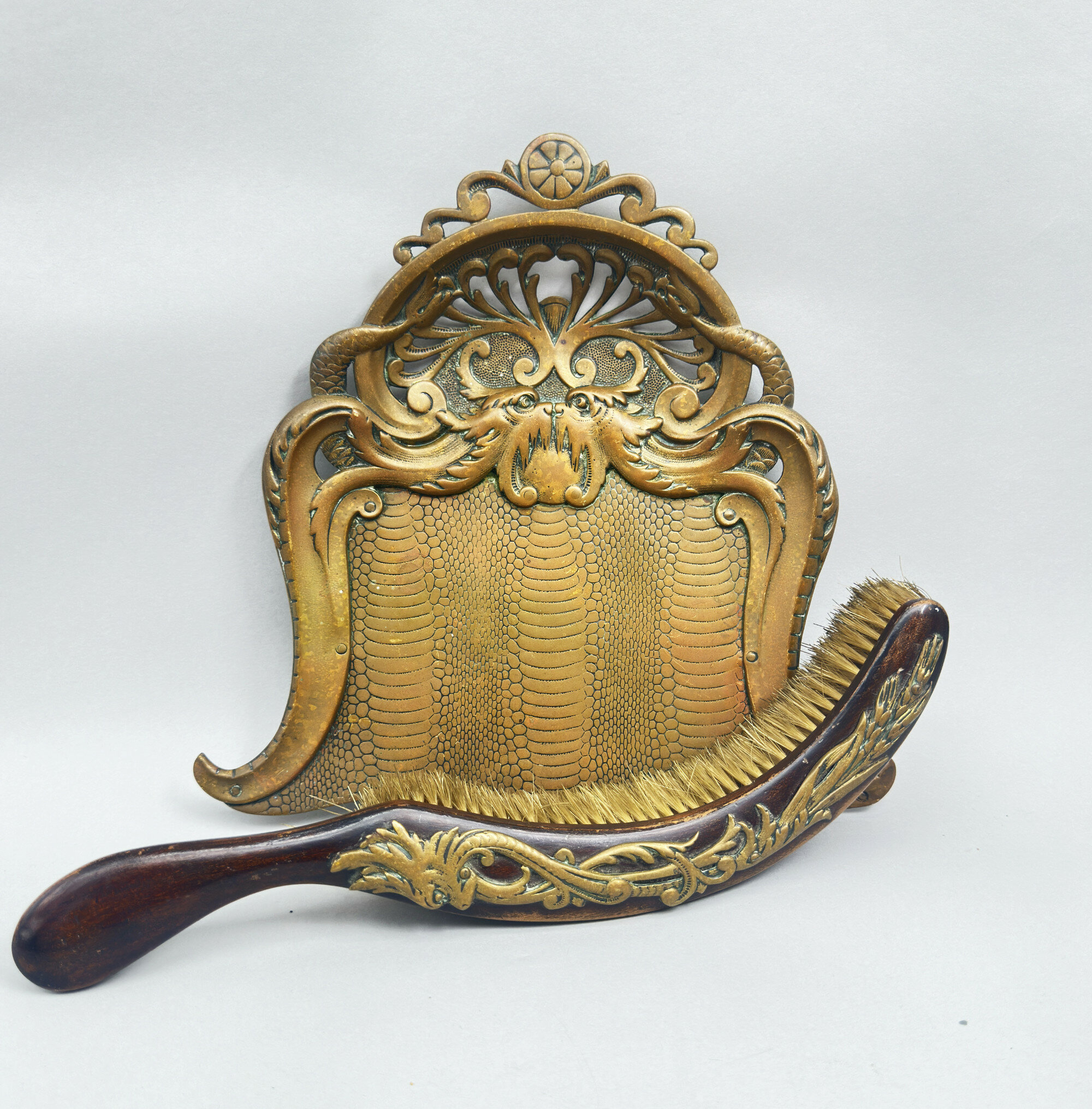
Townshend & Co : Butler’s Crumb Tray and Matching Brush, Birmingham c1900
Price: £75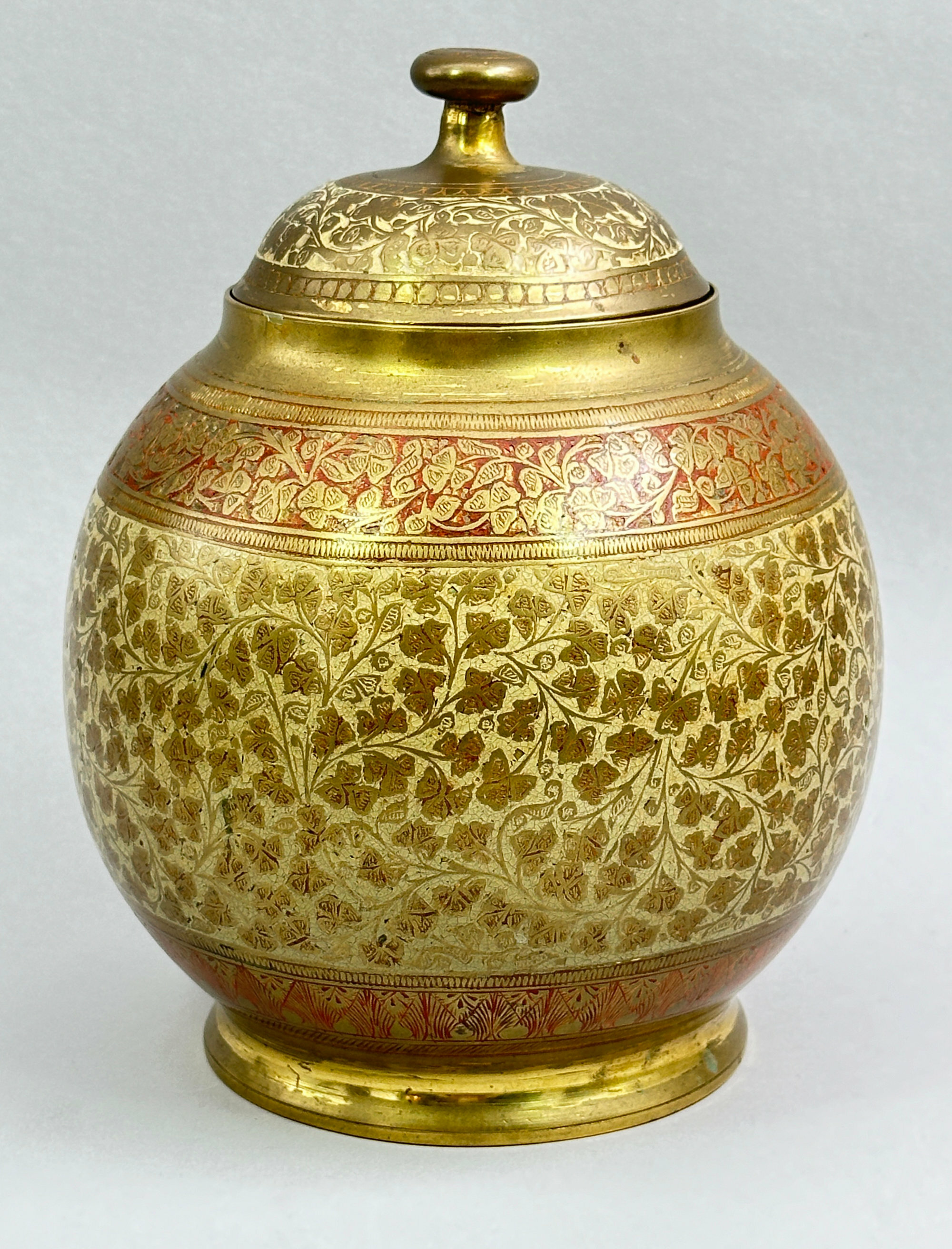
Indian Brass Potiche and Cover, early C20th
Price: £45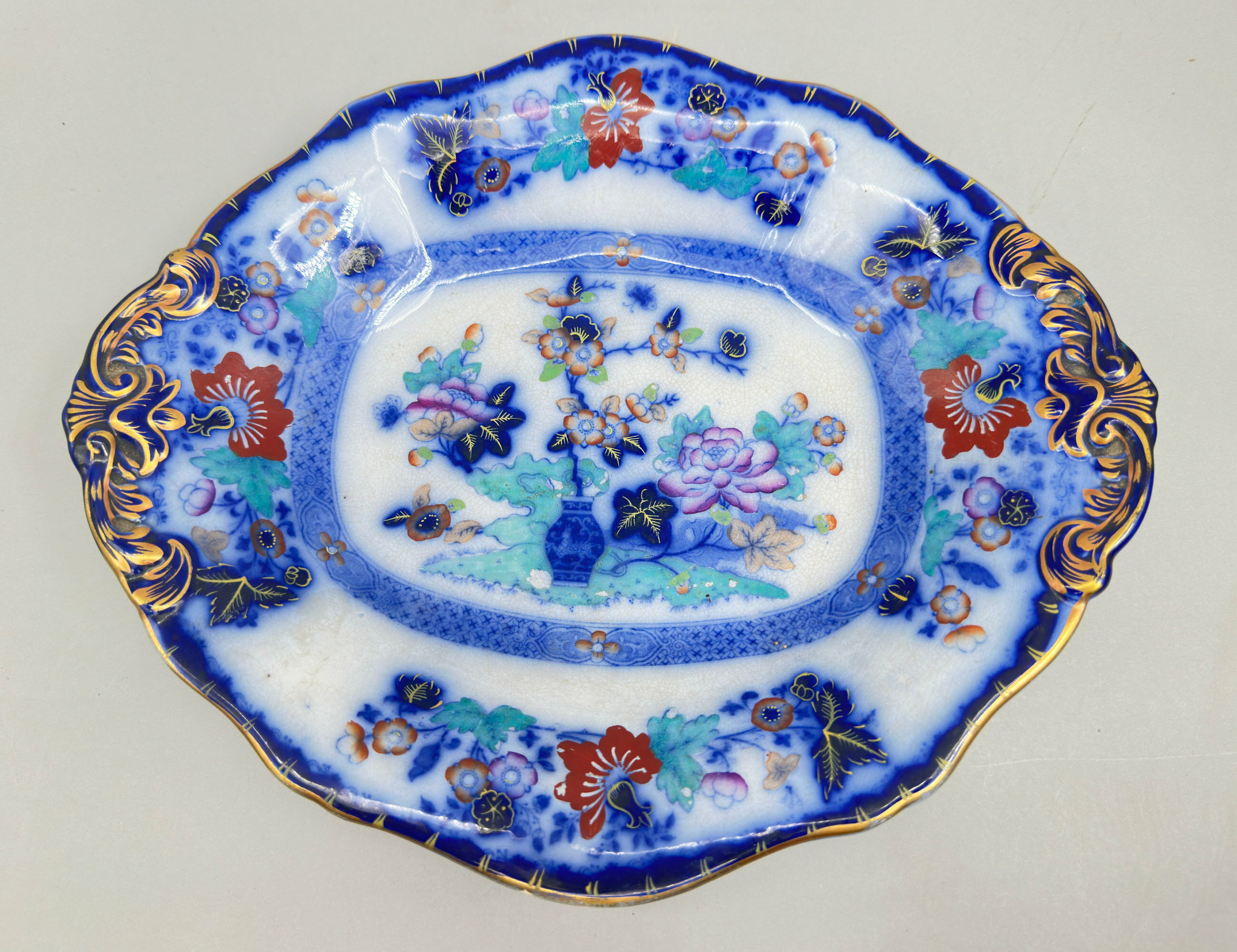
Bombay Japan pattern deep Dish, Minton or Samuel Alcock, English mid C19th
Price: £25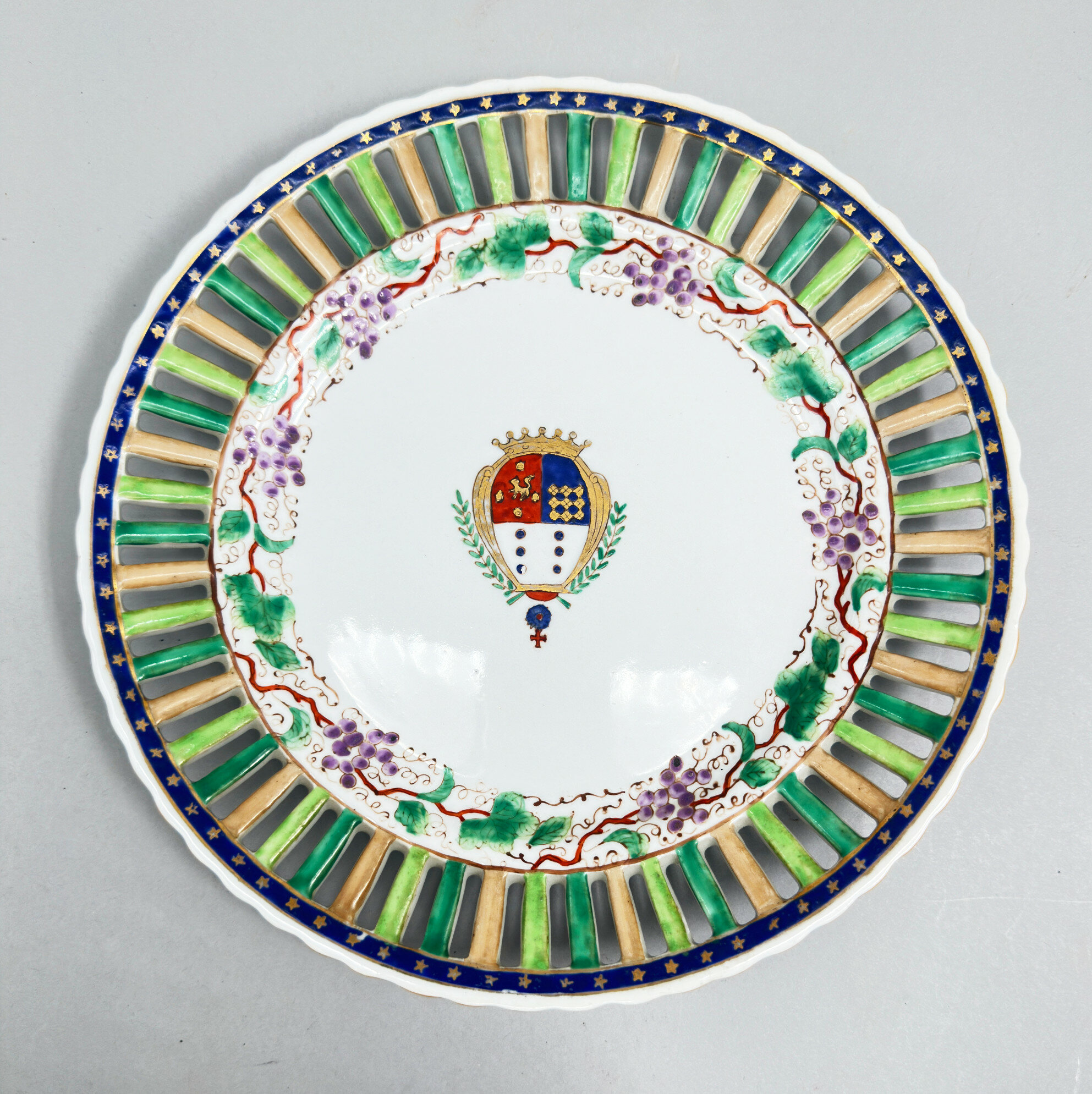
Compagnie des Indes style reticulated edge Armorial Plate, Chinese C20th
Price: £45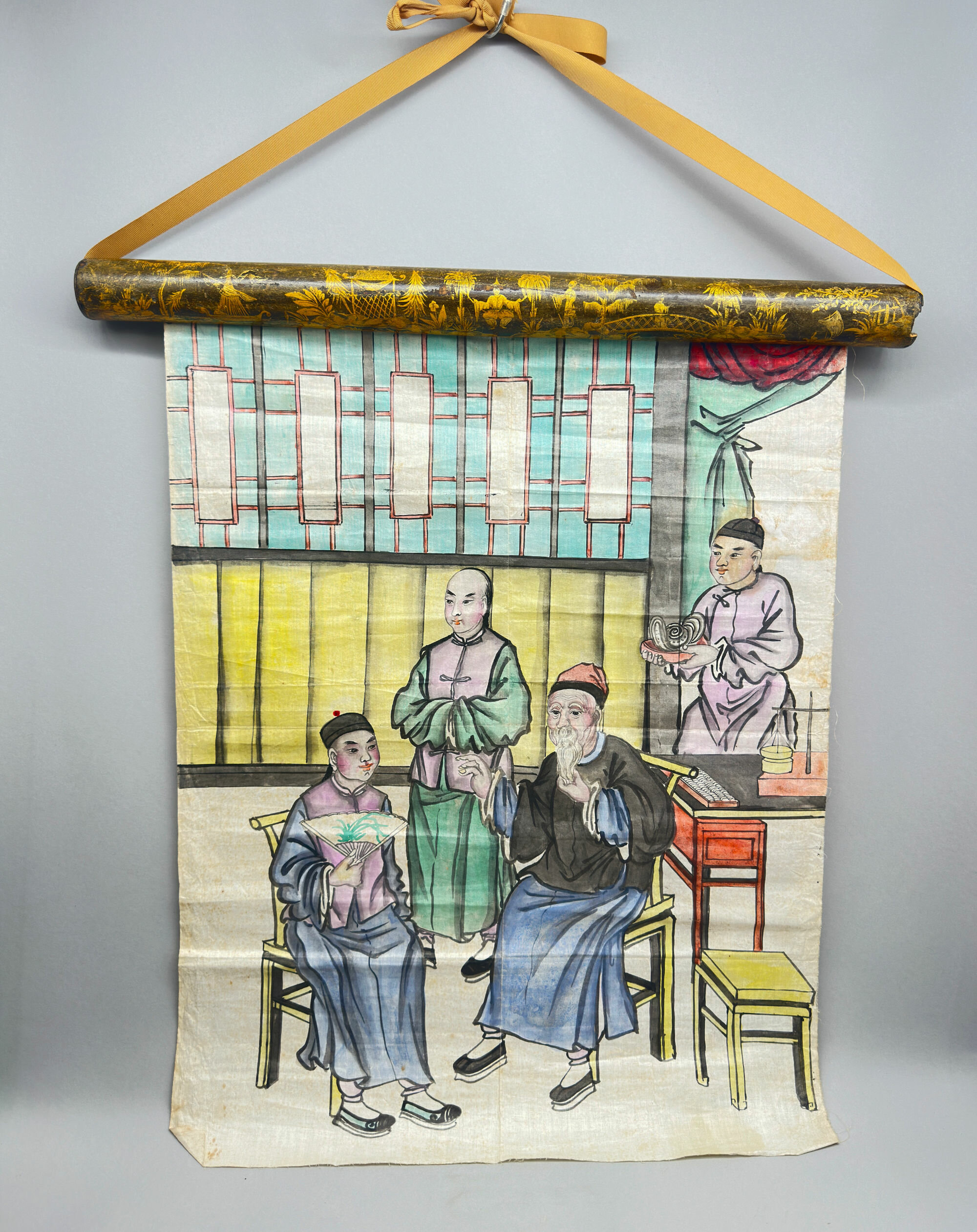
Chinese Scroll Painting of a Merchant and his Client, C20th
Price: £45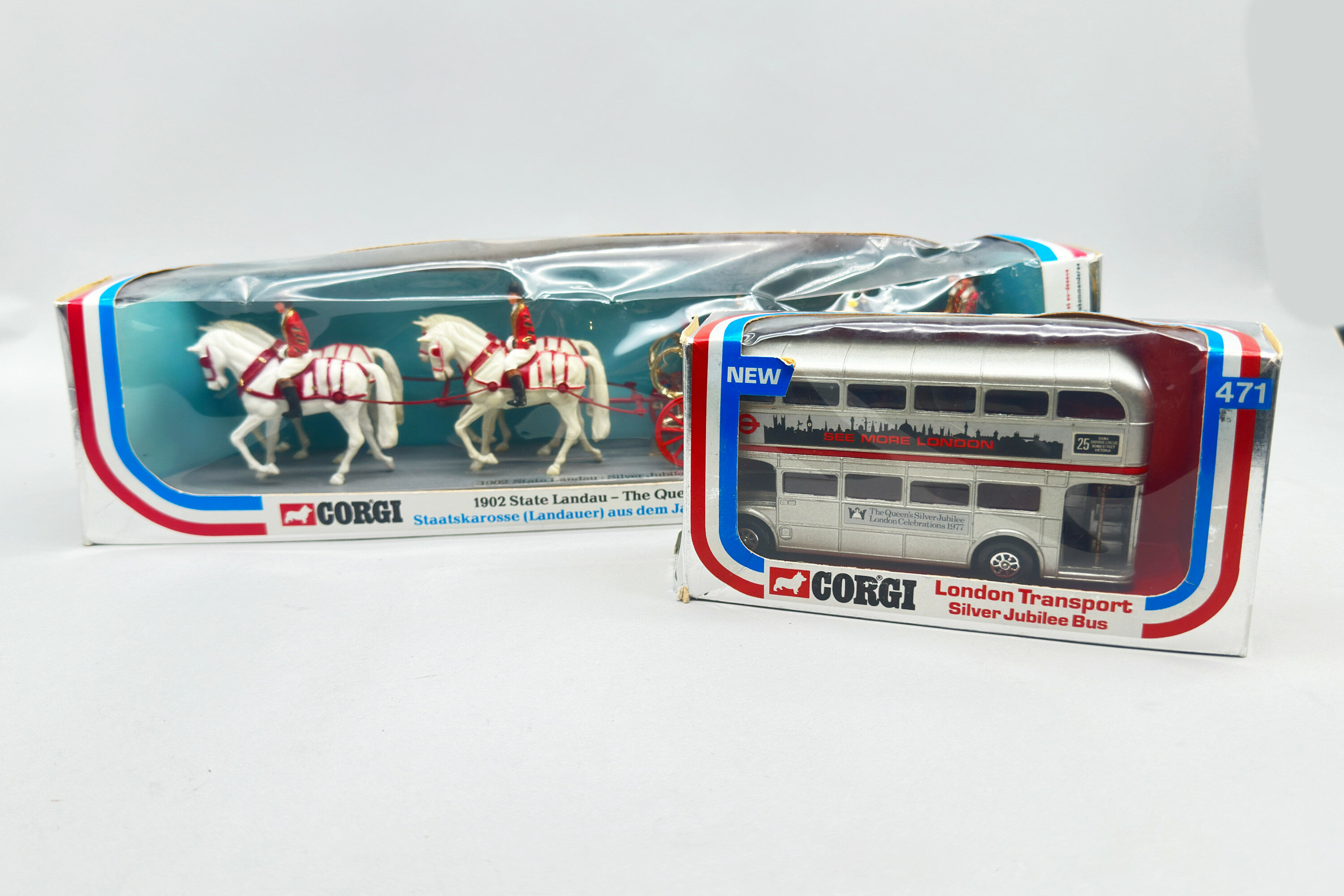
Two Corgi Silver Jubilee Toys Boxed, (41) State Landau, (417) London Bus, 1977
Price: £45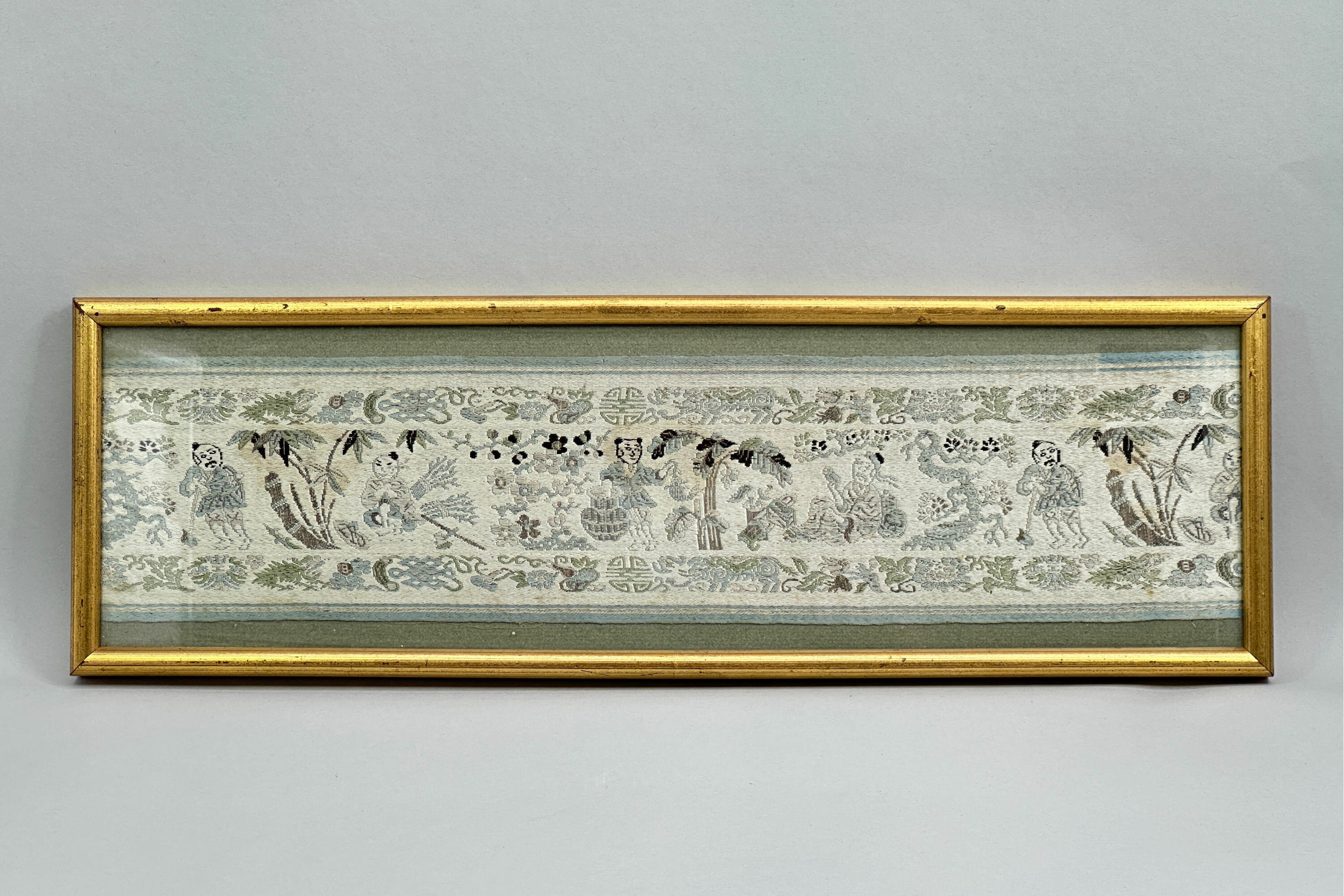
Framed Chinese Silk Embroidered Runner Panel, garden scenes, C20th
Price: £15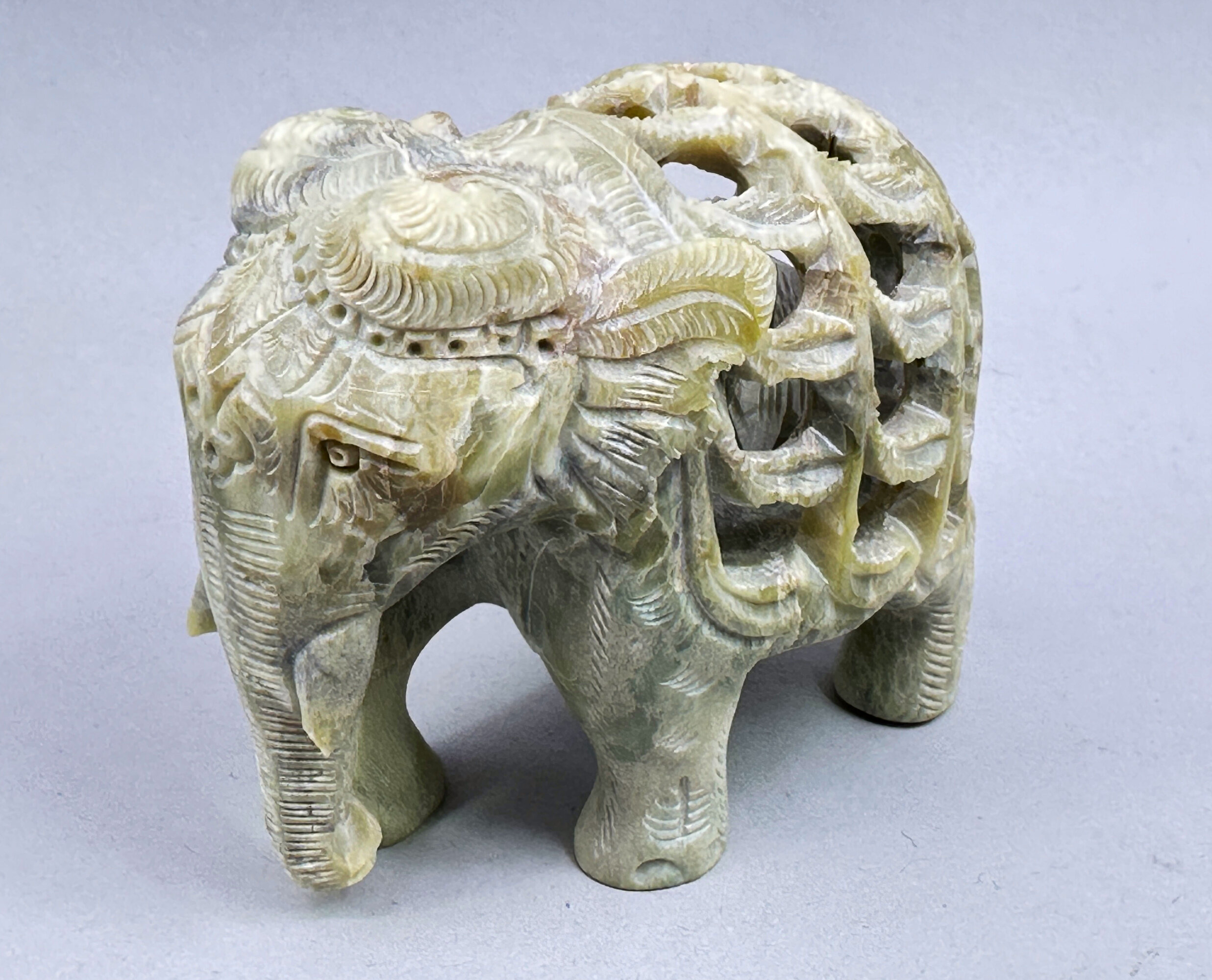
Indian carved Soapstone Figure of an Elephant and Baby Elephant
Price: £25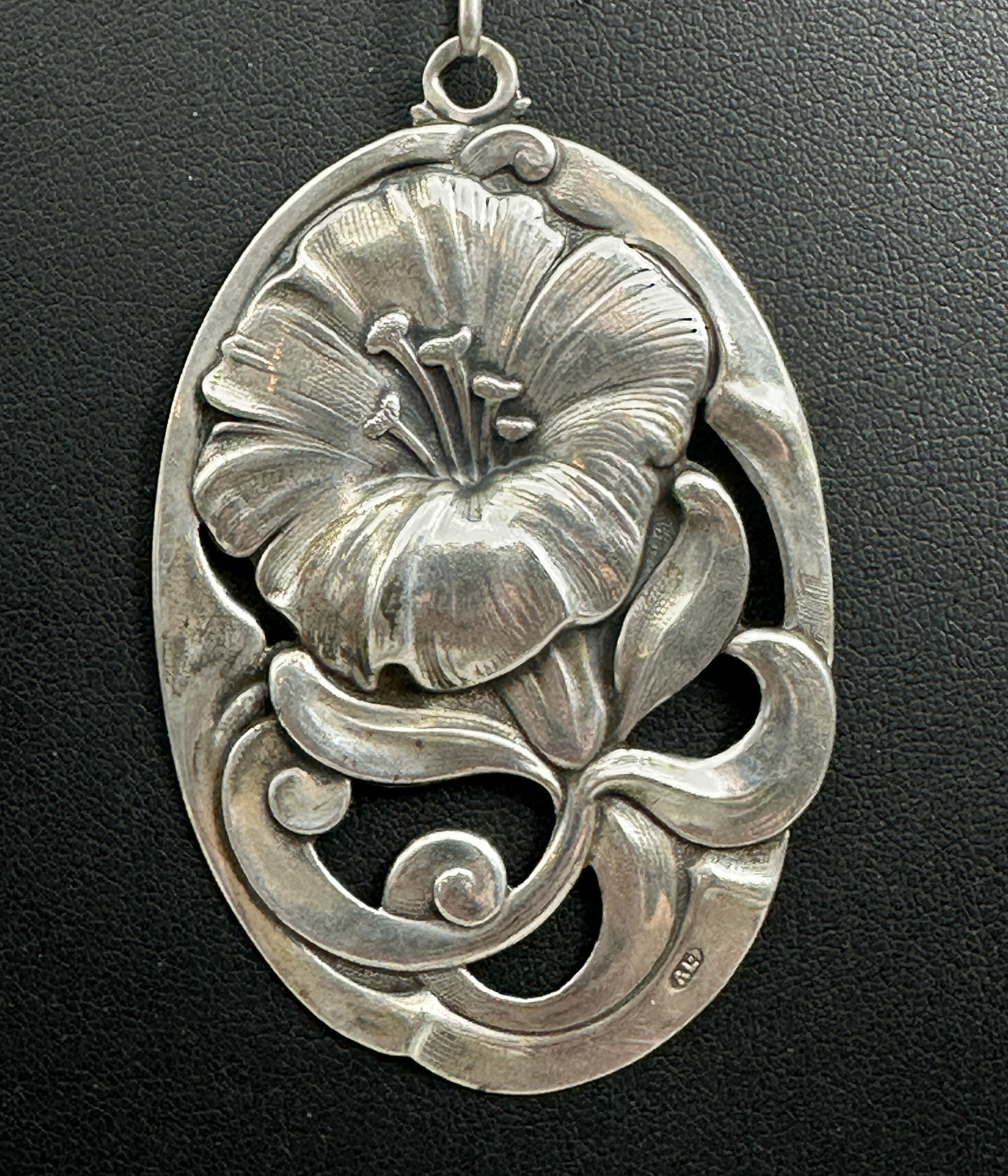
Art Nouveau repousse Pendant on later chain, c1910
Price: £95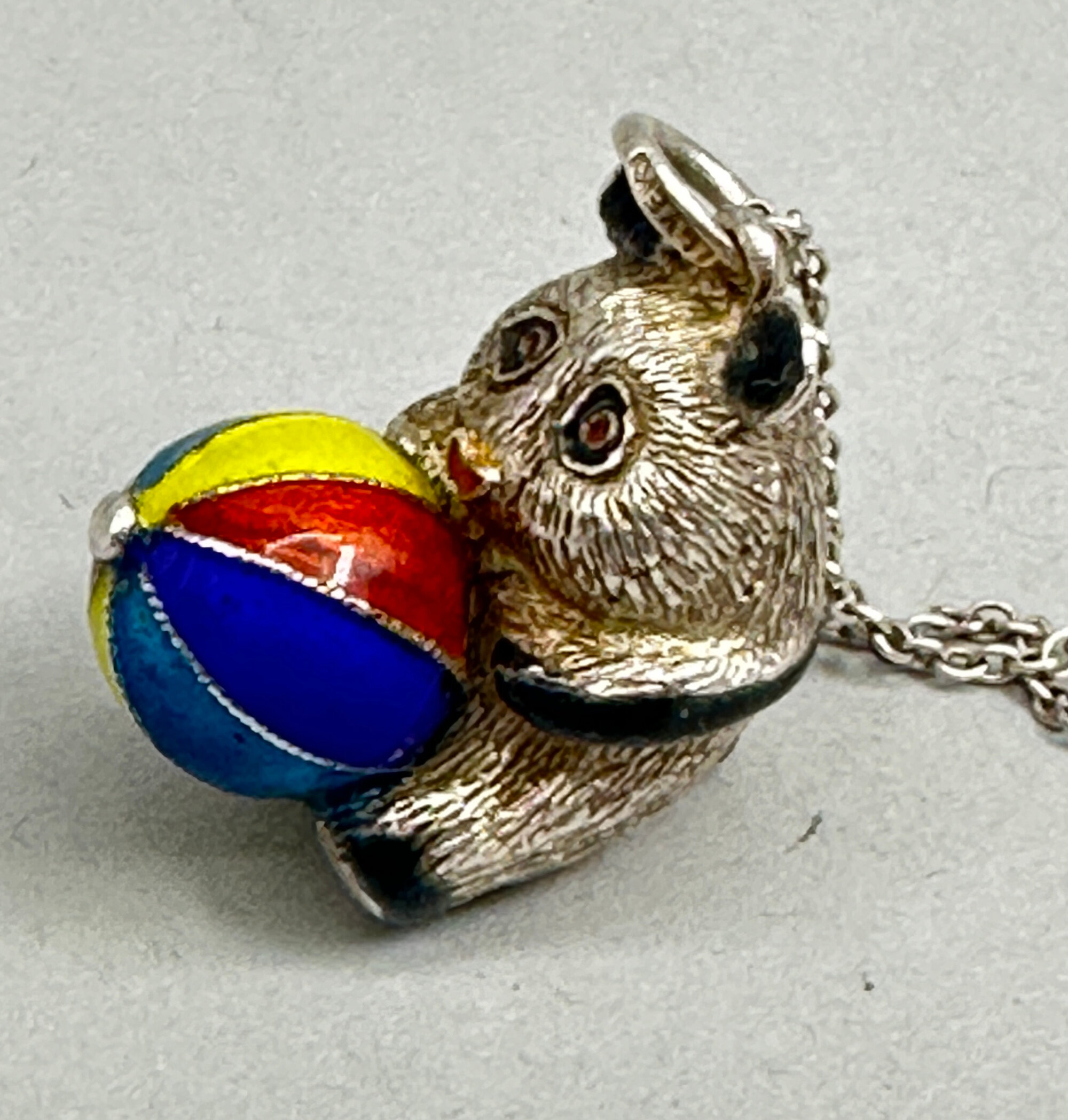
Sold silver and enamel Panda pendant necklace c1980
Price: £55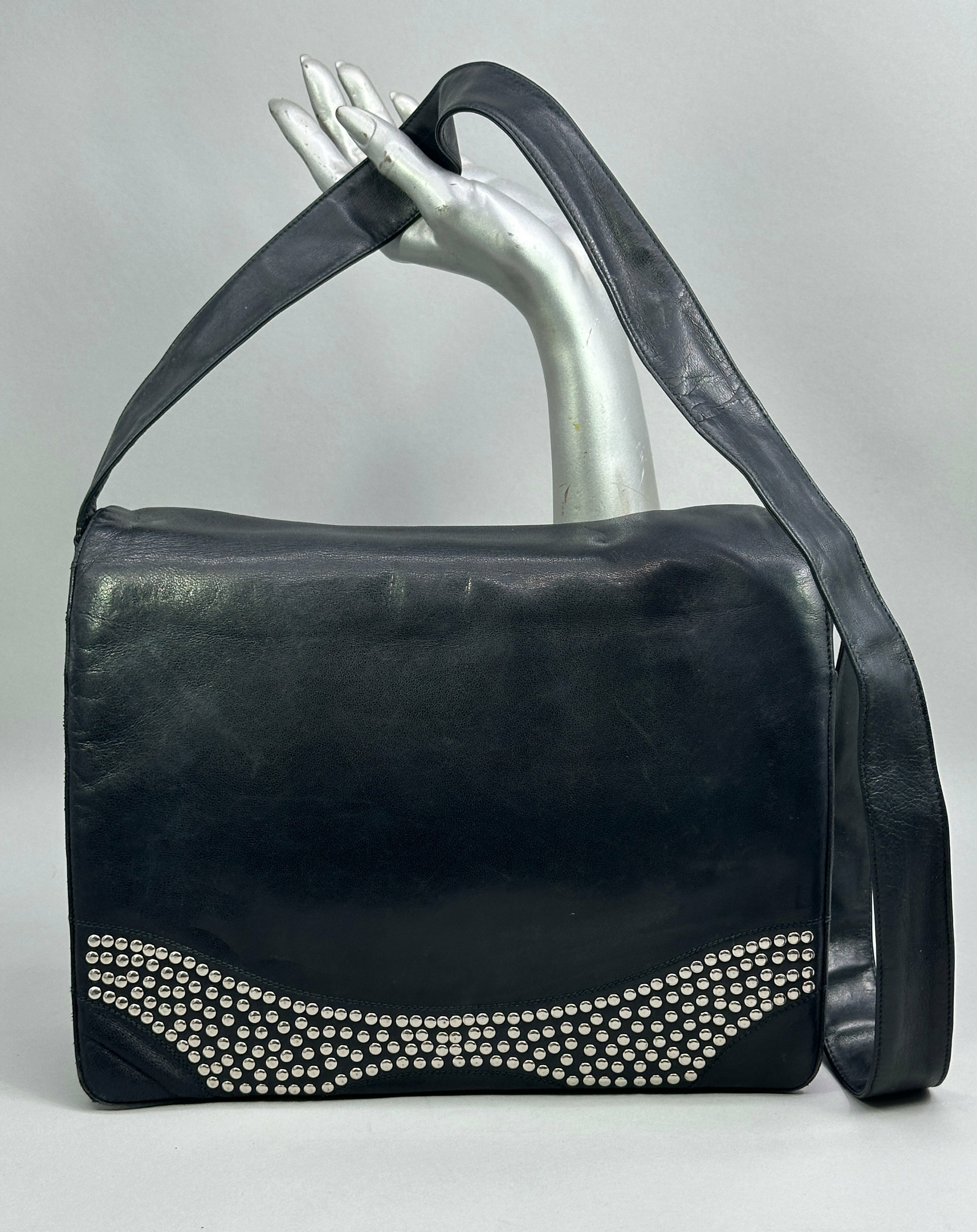
Maud Frizon Handbag c2000
Price: £150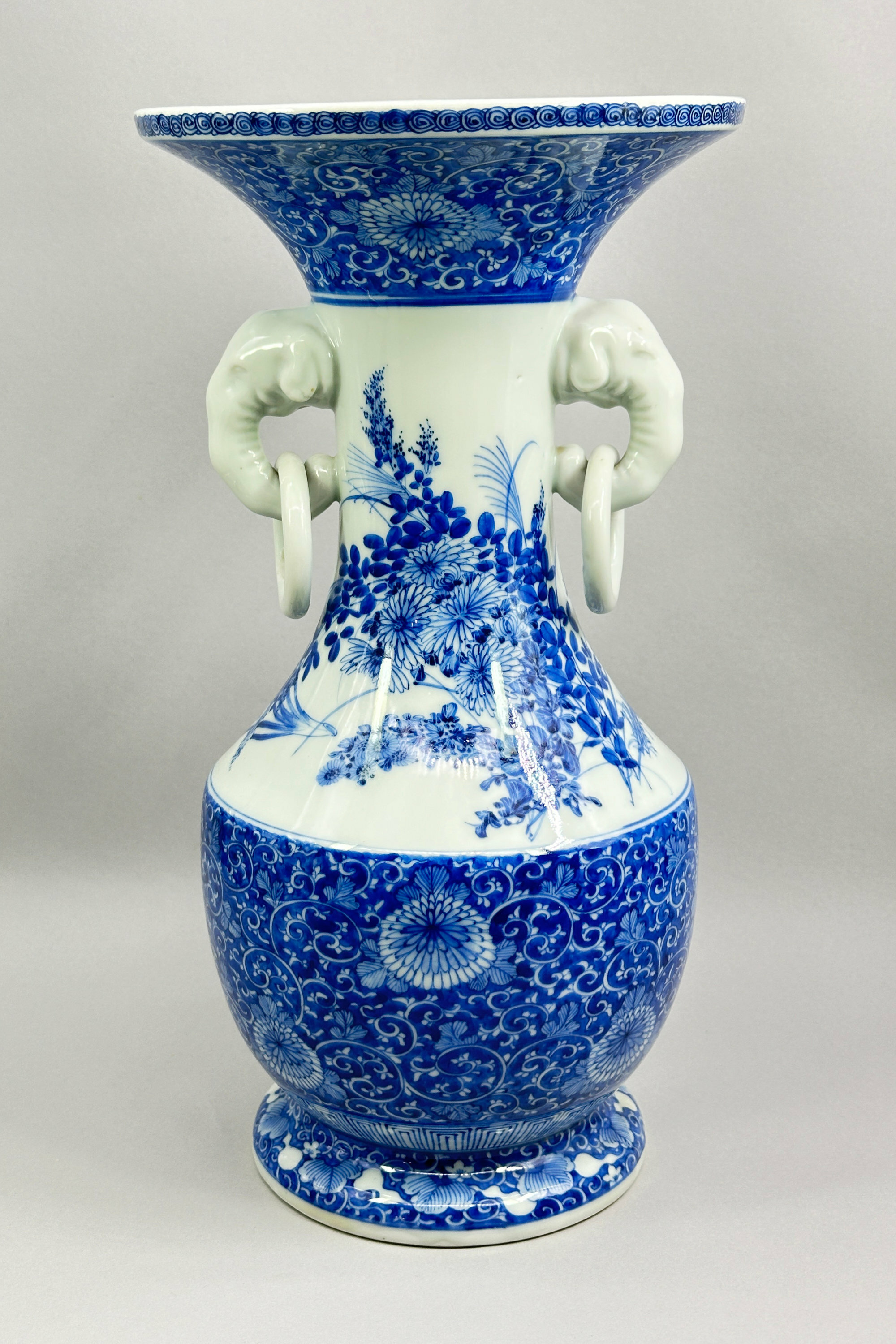
Japanese Seto Ware Blue and White Vase, late C19th
Price: £450A fine quality Japanese porcelain vase, the ovoid body with a curved flaring foot and rising to a tall concave neck with a well defined shoulder, applied elephant and ring handles to the sides and a galleried rim, decorated in bright underglaze blue with two bands of stylised flowering chrysanthemum at the top and bottom between a continuous scene of flowering peony and chrysanthemum, the top rim with repeating whorl design on the exterior and stylised leaf design inside, the stepped base glazed white.
The kilns at Seto in the Aichi prefecture of Japan and situated close to Nagoya form one of the traditional ‘Nihon Rokkoyo’, the six old kilns of medieval Japan. The location of Seto was ideal for the production of ceramics with an abundance nearby of both porcelain clay and forests to provide firewood for the kilns. Production began as early as the Heian period (794-1185) and continued without a break thereafter, the earlier pieces being more pottery forms copying Chinese wares. It was in the early nineteenth century that the kilns turned to producing porcelains decorated in underglaze blue and white, a development initiated by the potter Tamikichi Kato who went to Arita to learn the techniques of its production there, returning to Seto in 1807. Production grew and developed and was directed towards the export market in the Meiji period (1868-1912) with Seto wares being displayed at the European and North American exhibitions and fairs. Their delicately painted designs of birds and flowers proved to be immensely popular and were, in their time, to influence Art Nouveau and Art Deco designs. Some of the forms produced were truly virtuoso creations including, besides vases, screens, jardinieres and even ceramic tables.
Signed pieces are known and besides Tamikichi Kato the distinguished potters included the Kichiemon brothers, Kato Chuji and Kawamoto Jihyoe, and Kawamoto Hansuke. But not all the best pieces carried an artist’s signature as this vase well demonstrates. Formed from fine quality clay, as can be seen from the foot rim (image 10), the complex shape with its spreading base, angled shoulder and galleried rim would have been difficult to create. The handles show remarkable skill with the rings somehow formed so as to hang loose (presumably some form of kiln waster technique was used). The detail and artistry of the painting speaks for itself. Note in particular the shading effects on the peony flowers. While not perhaps an exhibition piece, this vase is definitely of exhibition quality and would be a worthy addition to a collection of nineteenth century Japanese ceramic art.
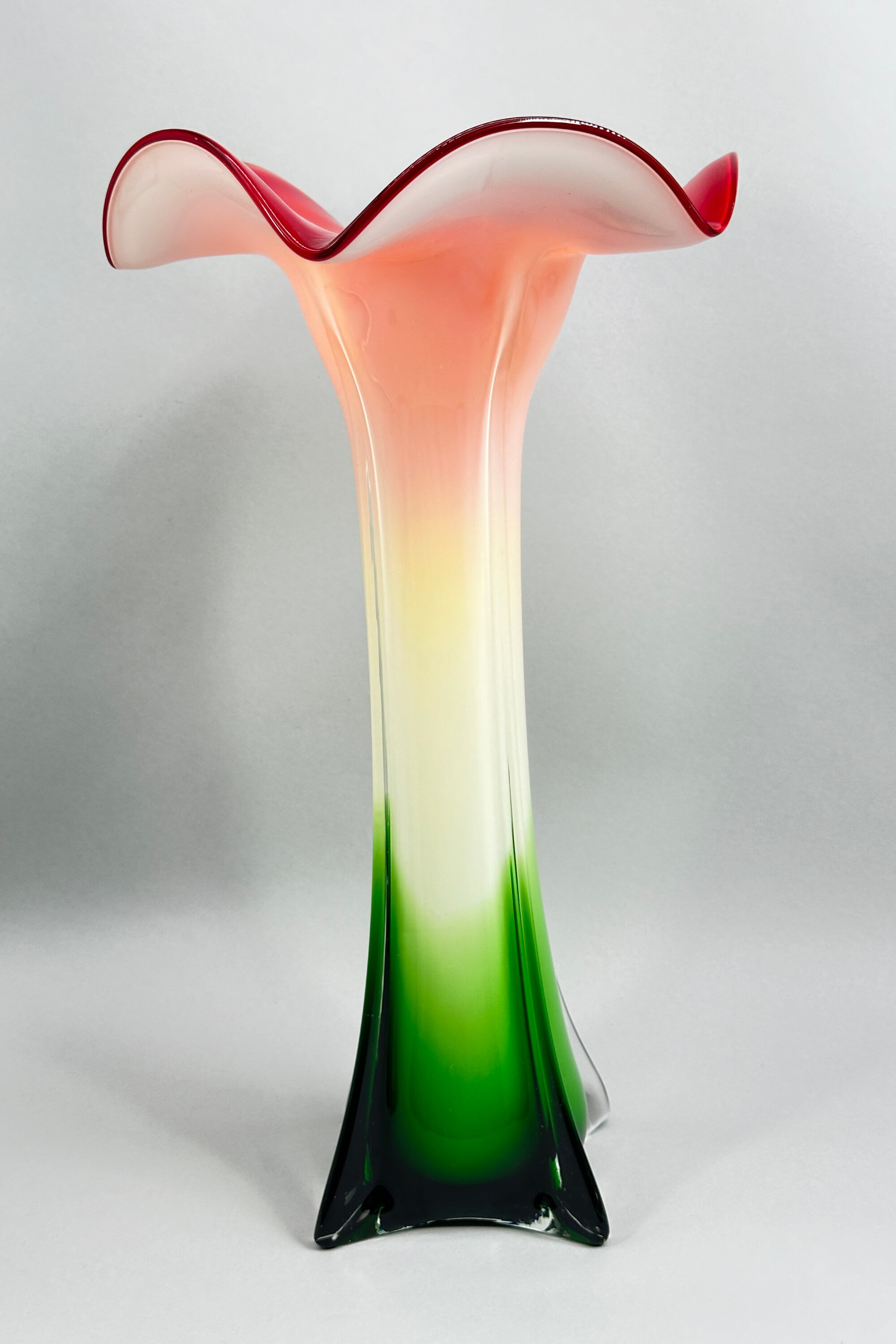
Murano Style Calla Lily Trumpet Shape Vase, second half C20th
Price: £75
Continental Figure of a Cellist, Conta and Bohme, Germany late C19th
Price: £55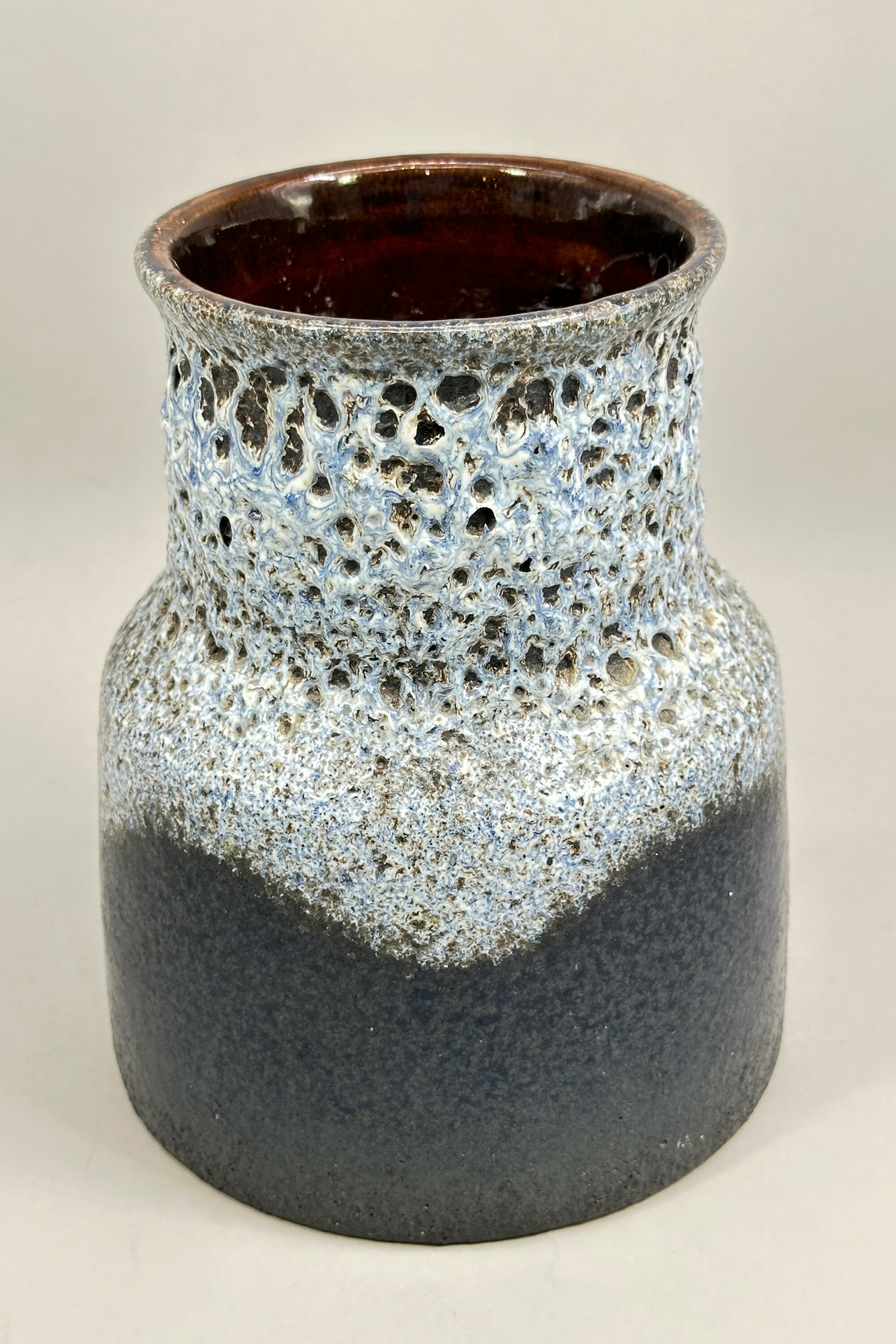
West German Pottery Lava Glaze Vase, Scheurich, 1960s
Price: £45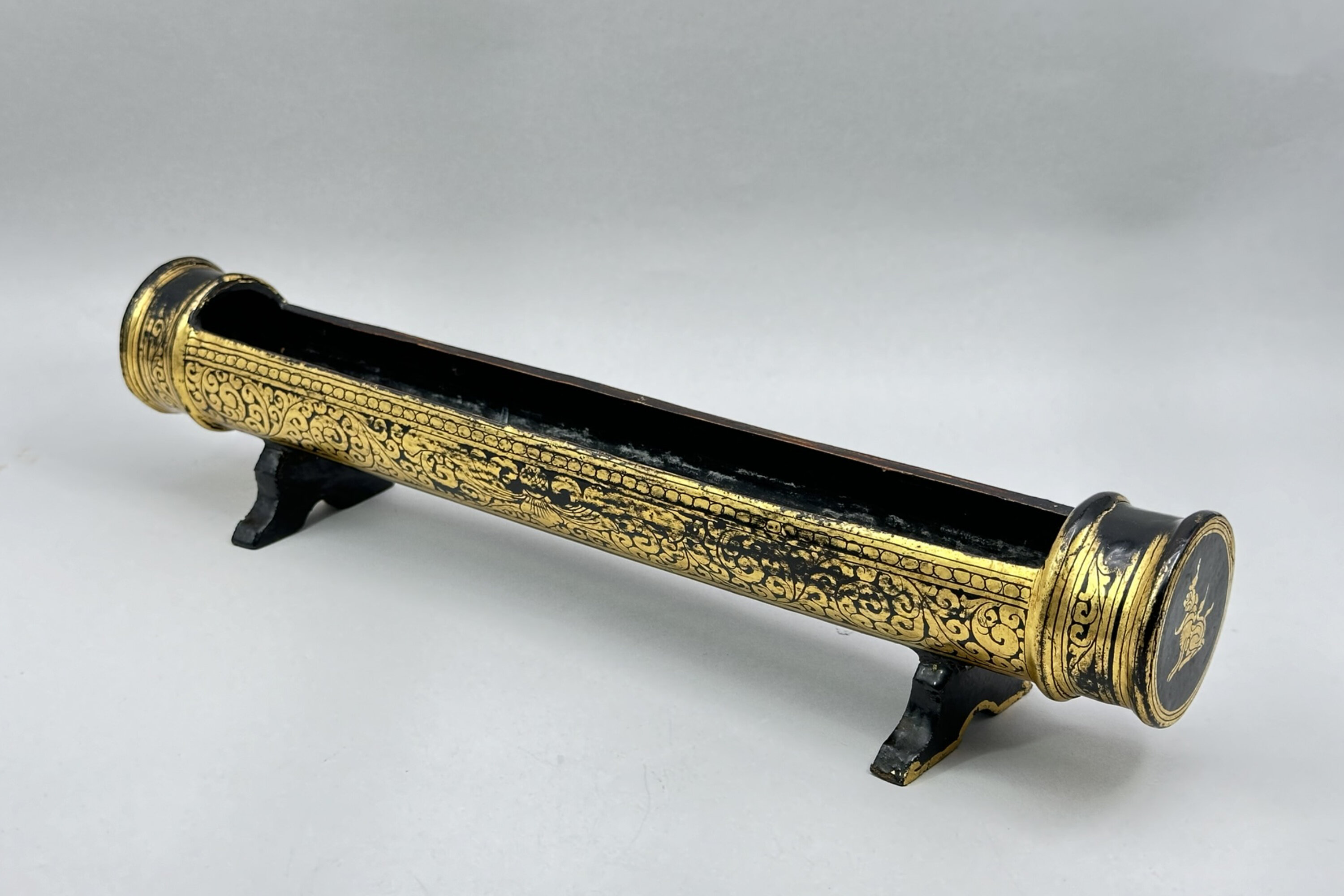
Burmese Black Lacquer and Gilt Scroll Stand, C20th
Price: £25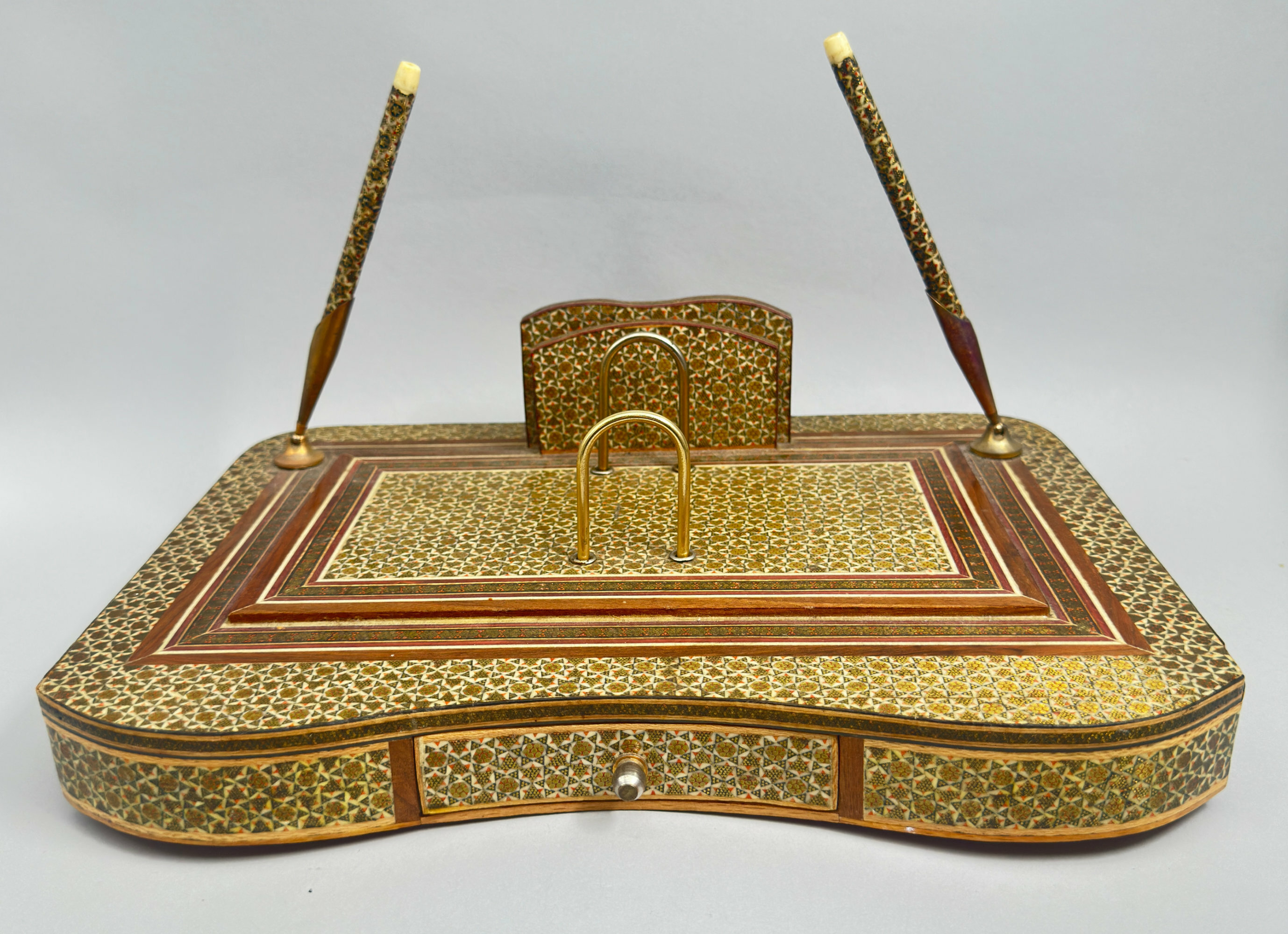
Persian Marquetry Khatam Kari Desk Set, second half C20th
Price: £55The intricate marquetry decoration used here, with its repeating star form pattern, is called ‘Khatam’ work. Khatam is the capital of Khatam County in Iran and is the centre for craftsmen working in this technique. Khatam is a Persian version of marquetry in which the surface of wooden articles is decorated with small pieces of wood, bone and metal formed into precisely-cut geometric shapes. The process is time consuming involving the cutting of the shapes and gluing them in place, followed by smoothing, oiling and polishing. In Persian, the work is known as ‘Khatam kari’, ‘the art of crafting Khatam ware’.
These desk sets occur in a wide variety of forms. The drawer is less commonly found and decorated pen holders are, as said above, most unusual. These sets seem to have been made from the 1950s onwards. The use of a ‘biro’ pen indicates a dating from the 1960s onwards and perhaps this example is a bit later than that, but the workmanship speaks for itself and the piece has survived in excellent condition with minimal damage, providing a truly elegant ‘desk tidy’ for the contemporary study!
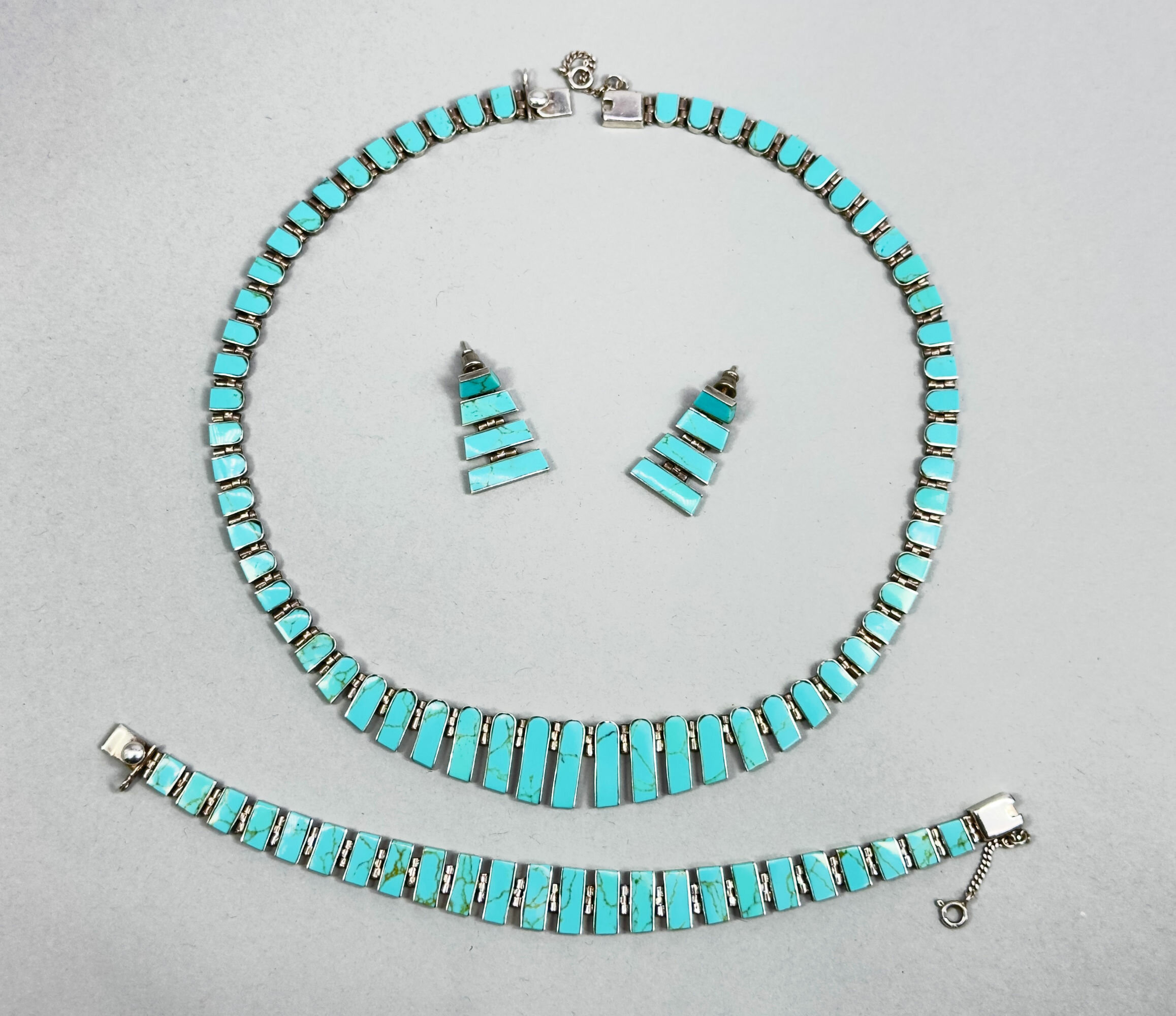
Suite of Taxco - necklace, bracelet and earrings c1960
Price: £475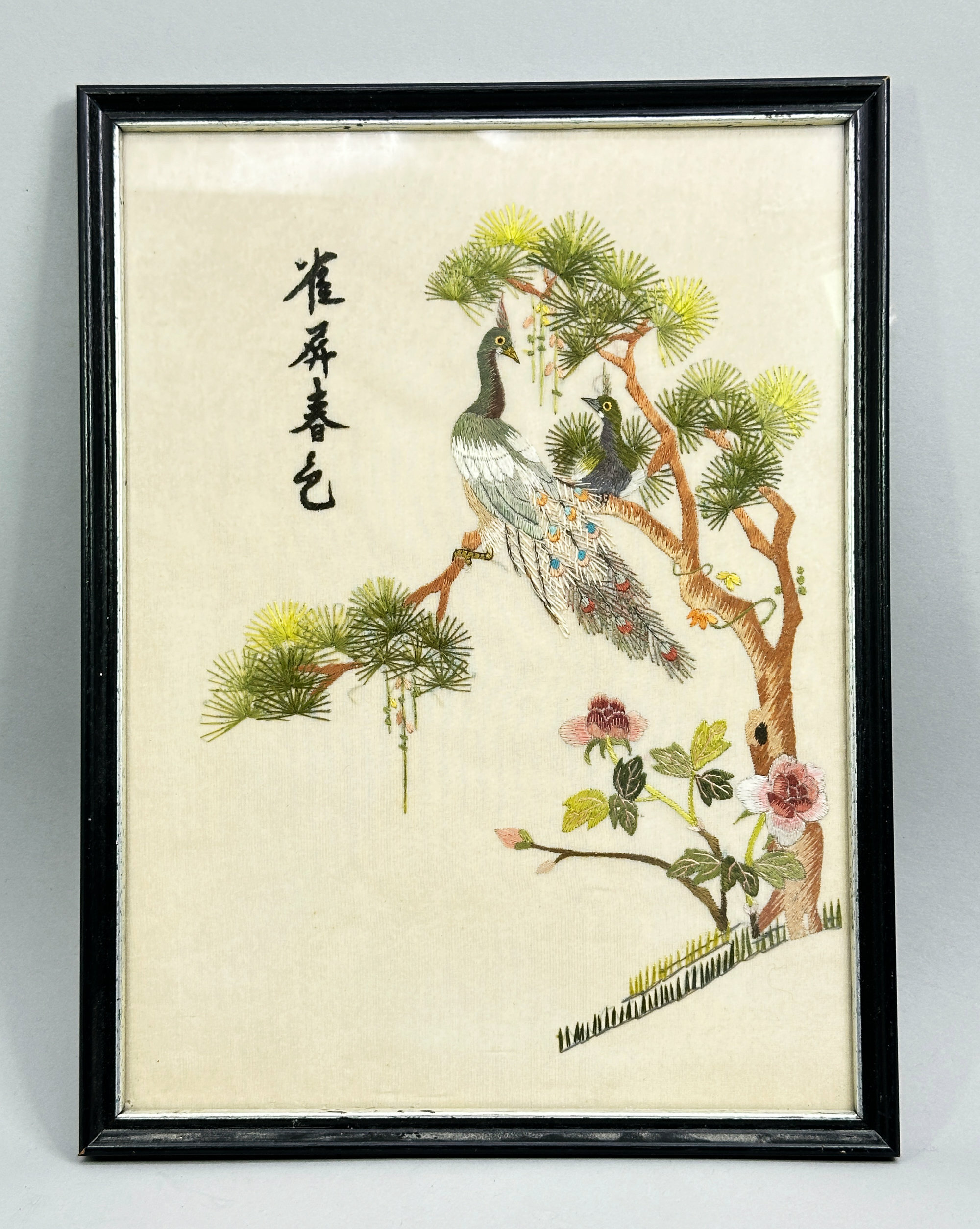
Framed Chinese Embroidery Silk Textile, signed, second half C20th
Price: £25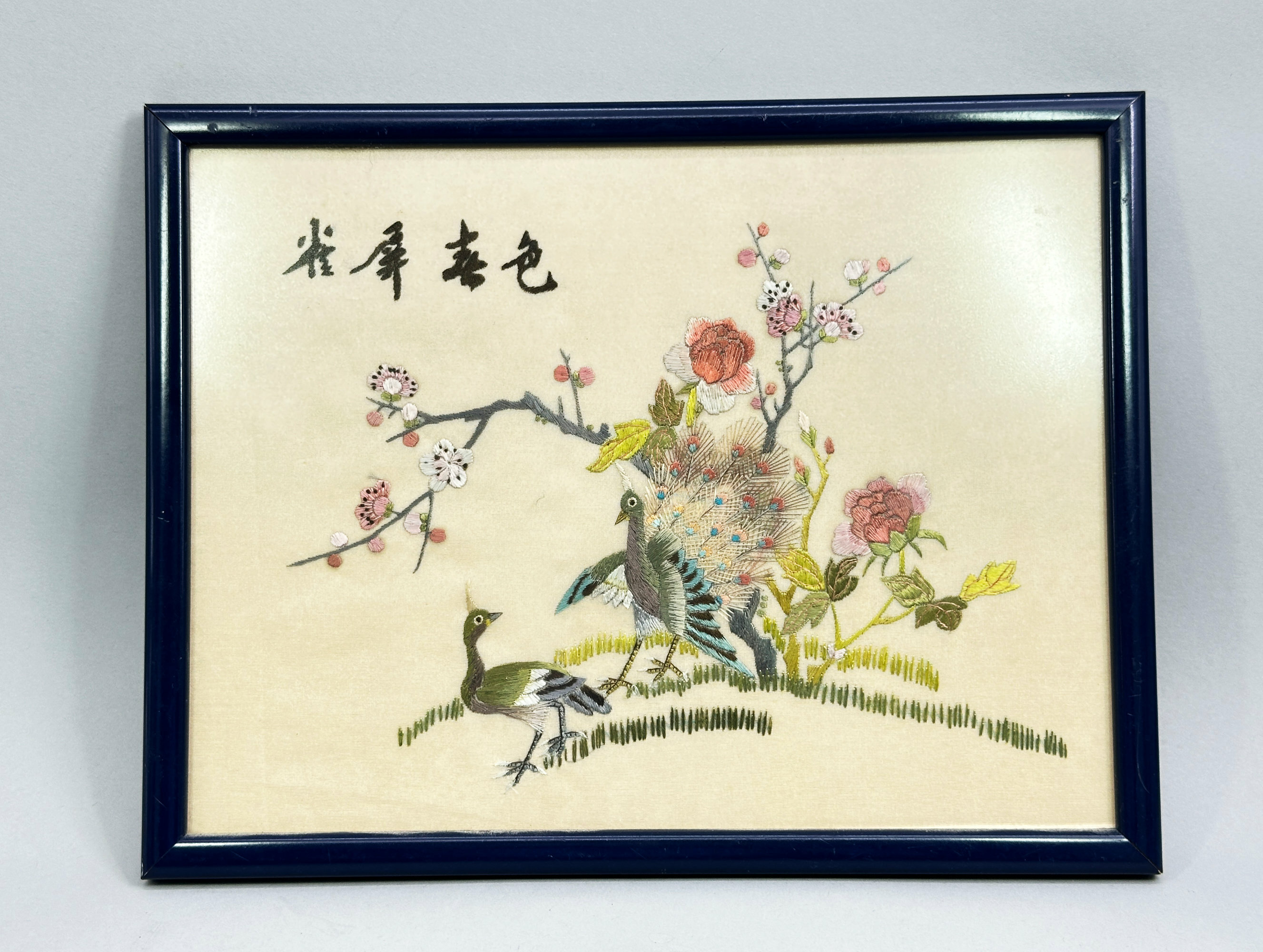
Framed Chinese Embroidery Silk Textile, signed, second half C20th
Price: £25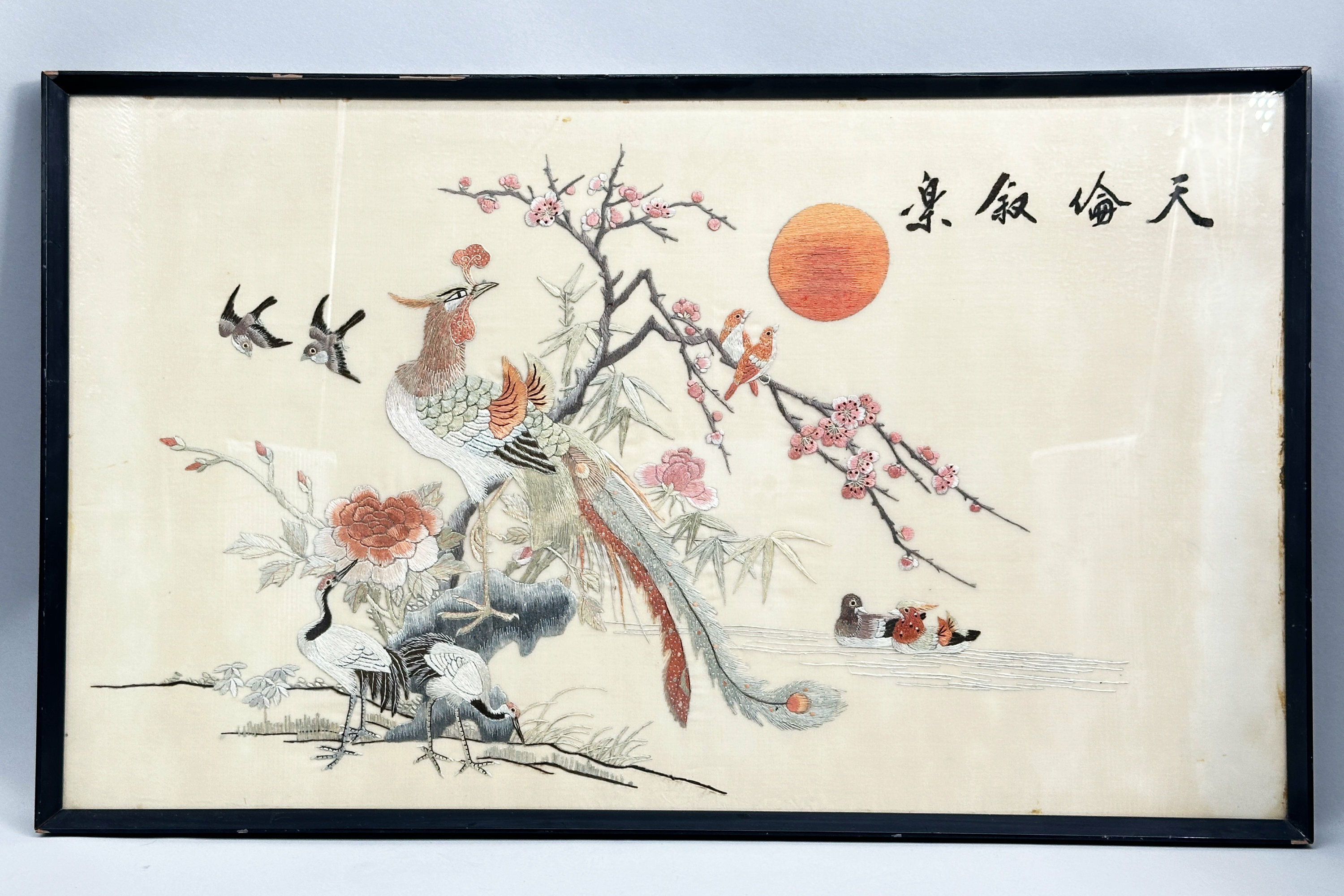
Framed Chinese Embroidery Silk Textile, signed, second half C20th
Price: £45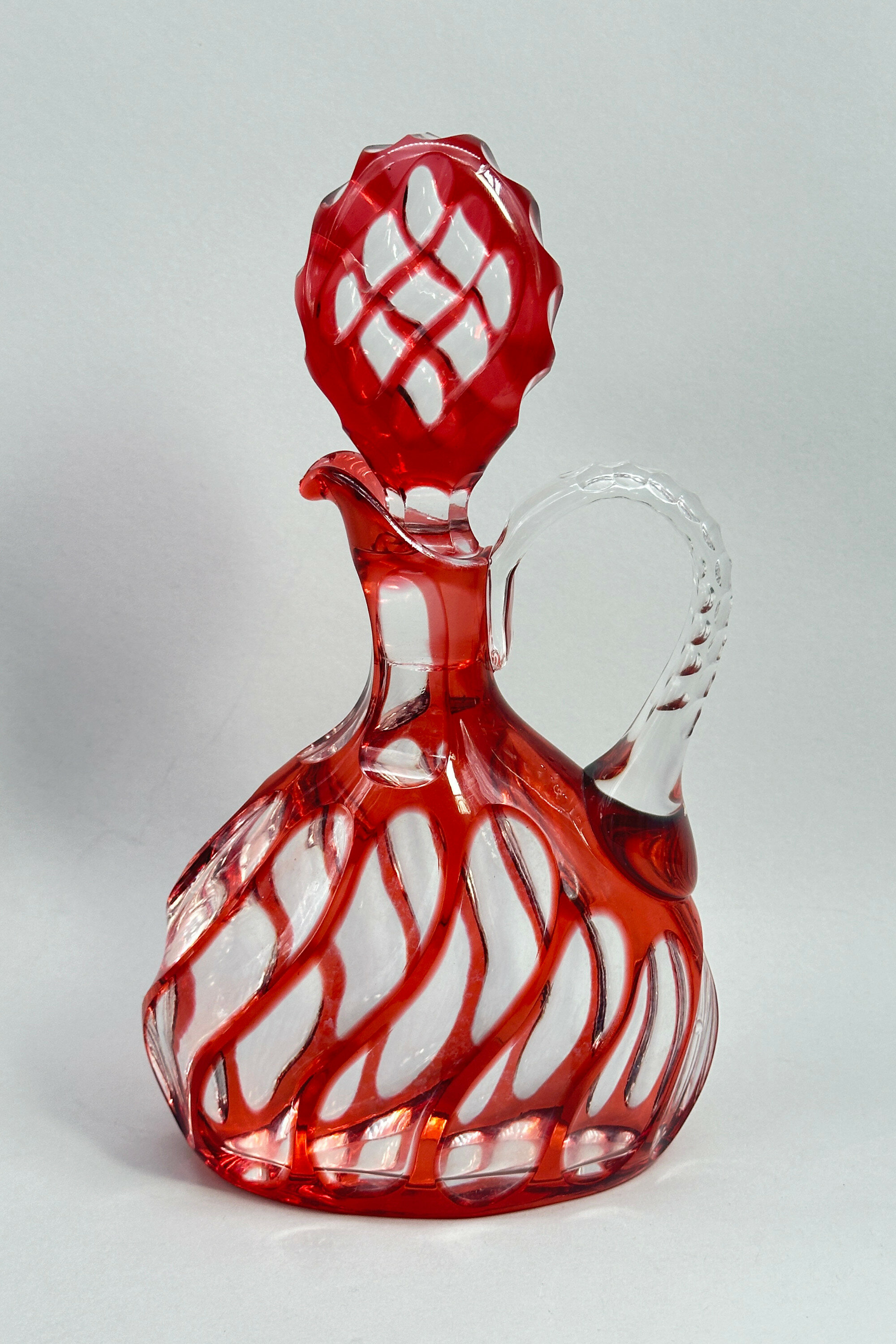
Swirl design Cranberry glass Decanter and Stopper, probably Italian mid C20th
Price: £45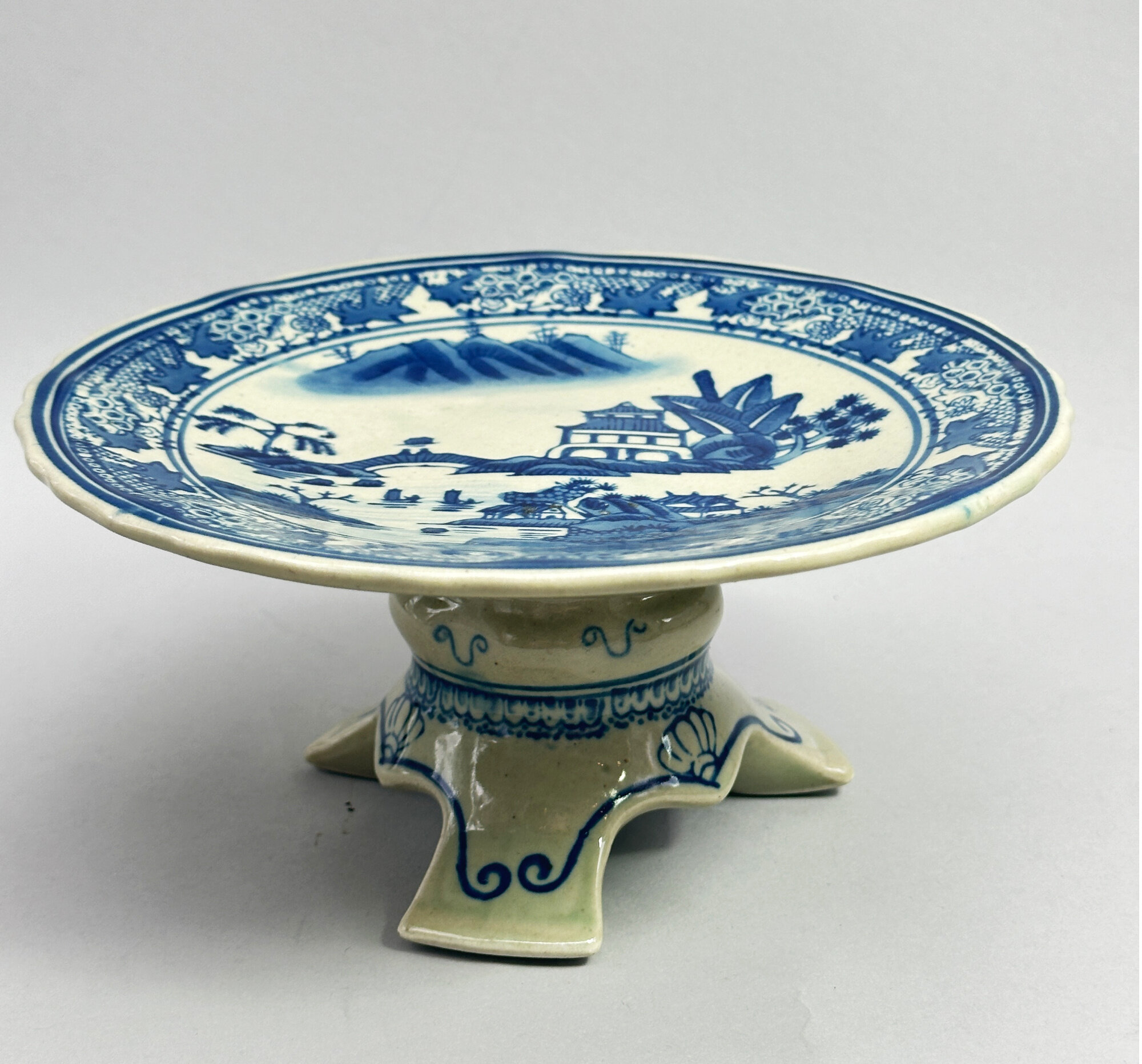
Japanese Celadon Ground Tazza with Chinese Nanking decoration, late C19th
Price: £25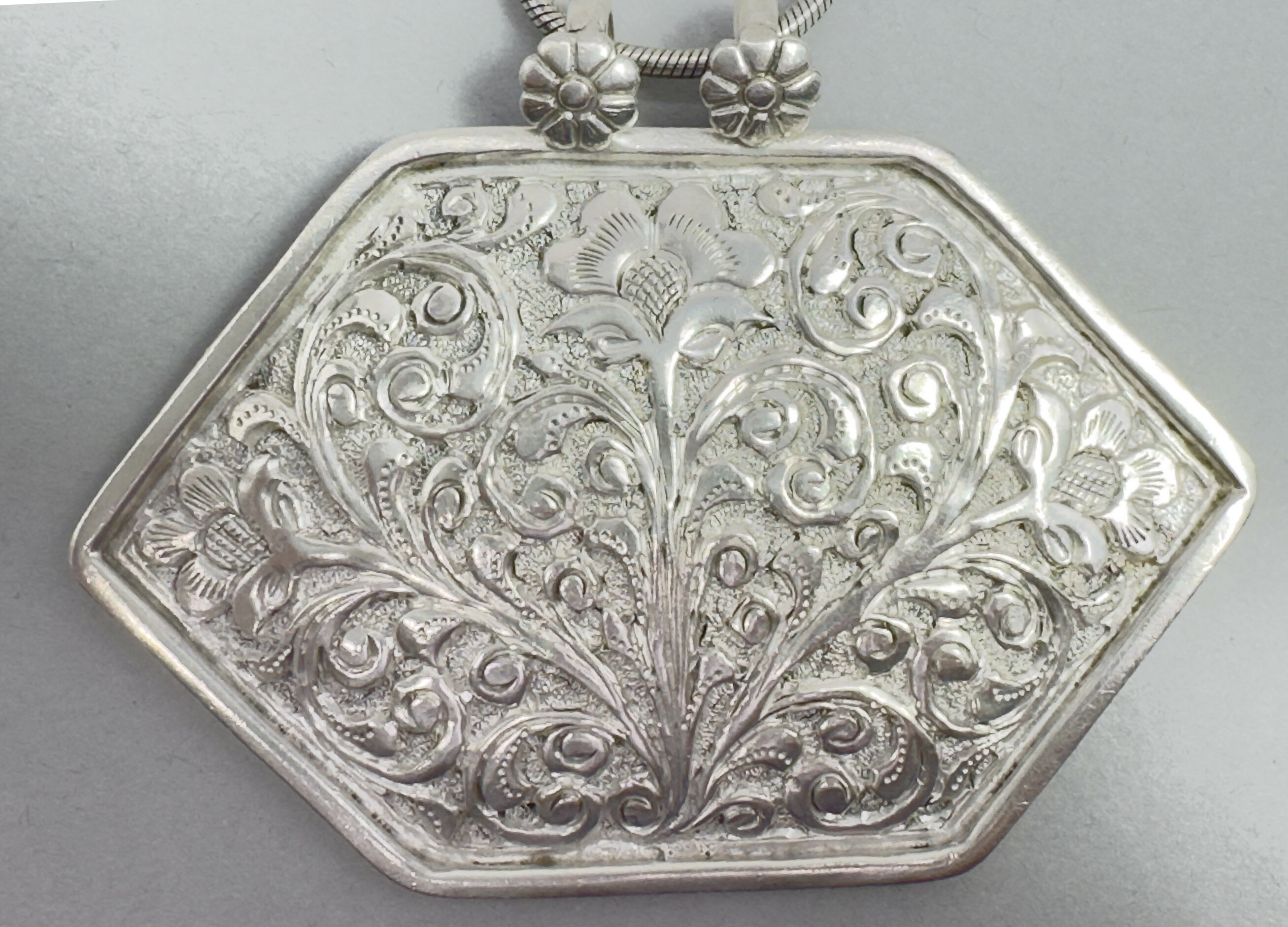
Very fine Indian silver repousse plaque Necklace, c1970
Price: £85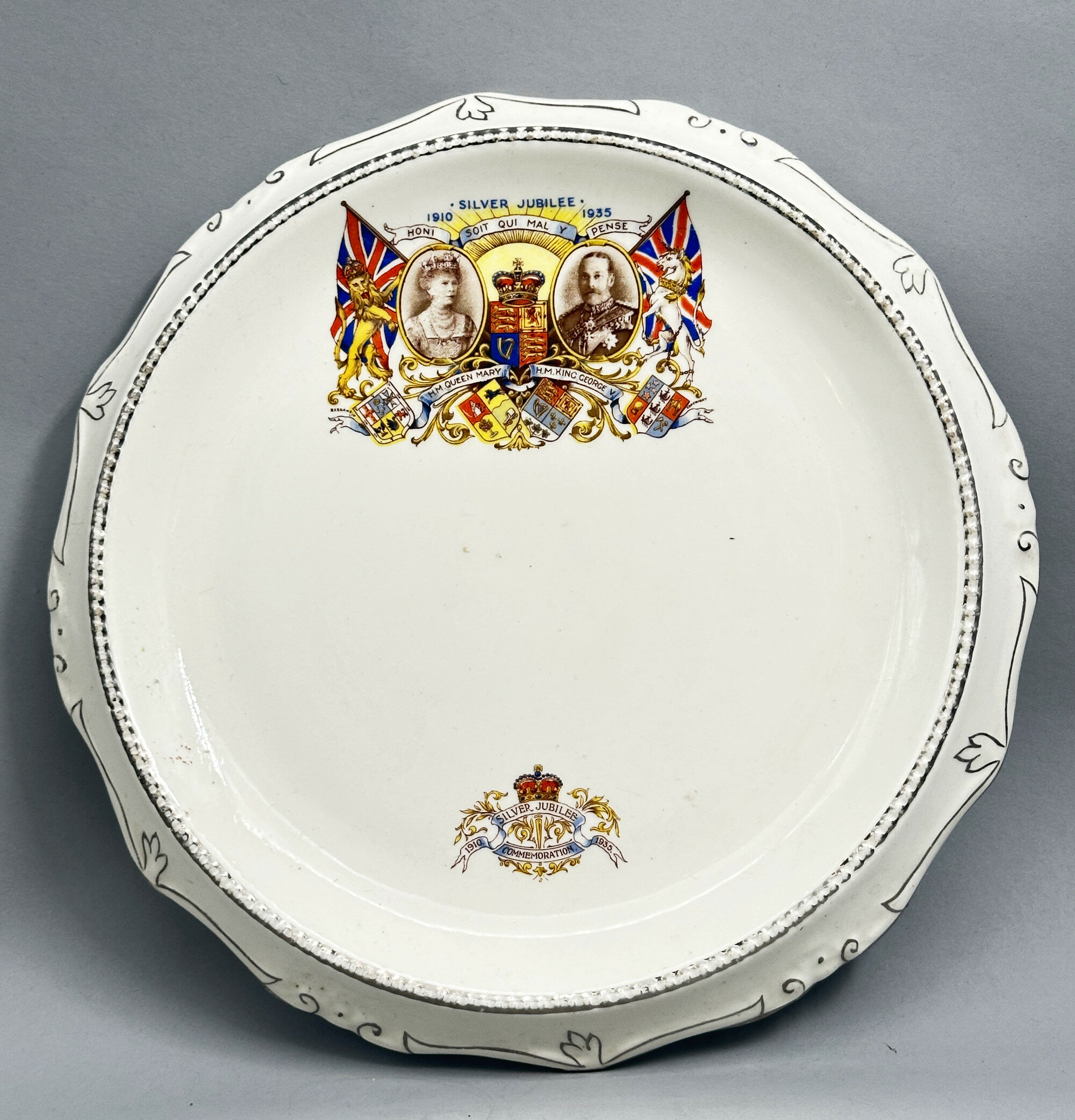
Commemorative Ware Silver Jubilee Plate, James Kent Ltd, England, 1935
Price: £35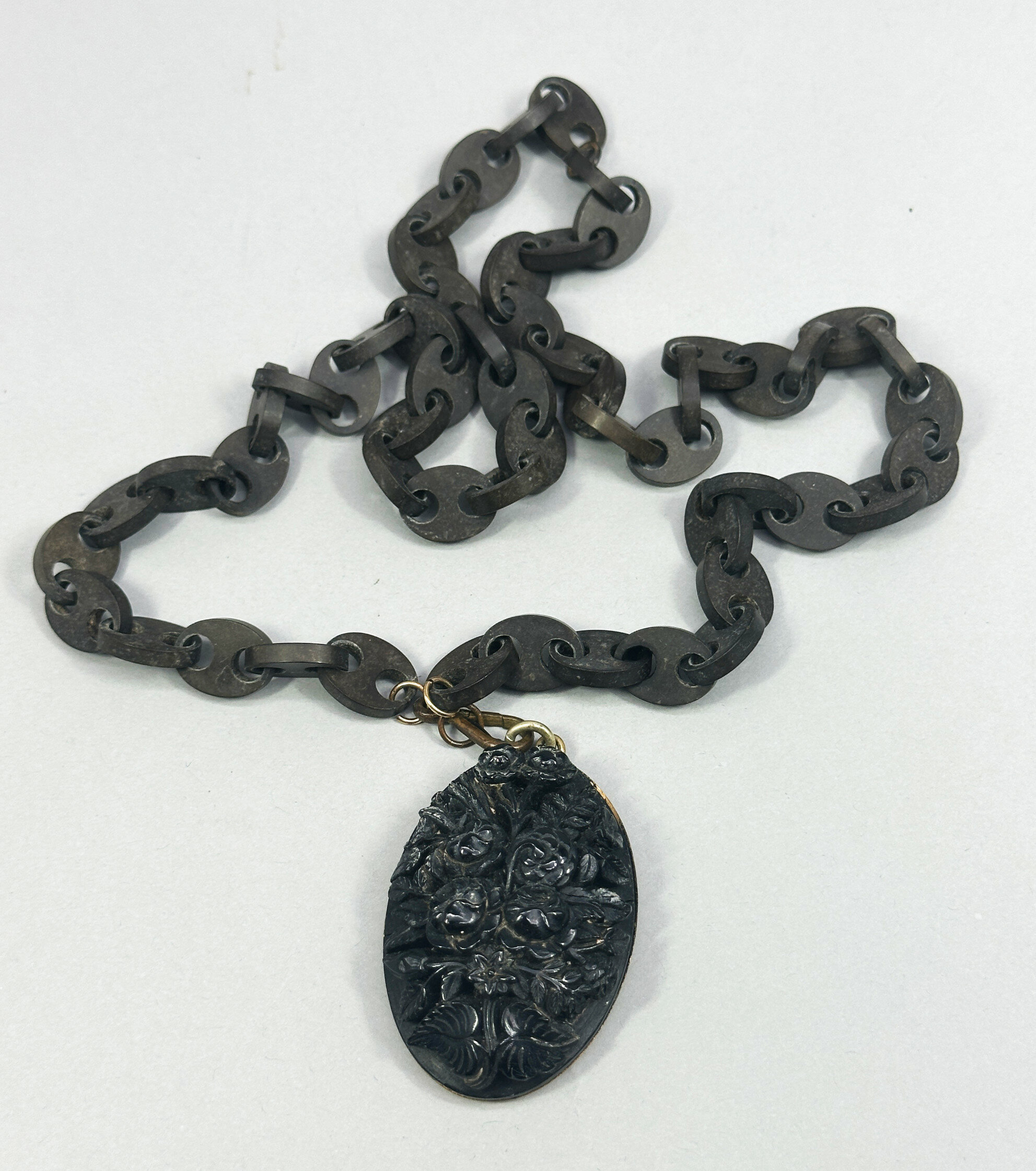
Victorian vulcanite anchor chain necklace with carved jet pendant c1880
Price: £195